

ISBN 1793 -056 MCI (P) 012/10/2023 PPS1699/08/2013(022974) Volume 19 Number 5 SEPTEMBER/OCTOBER 2023 www.aquaasiapac.com Cost Management Amidst Shrimp Price Crisis Maintaining Feed Attractability The Barramundi in Australia First Trivalent Vaccine for Tilapia Creating a Hybrid

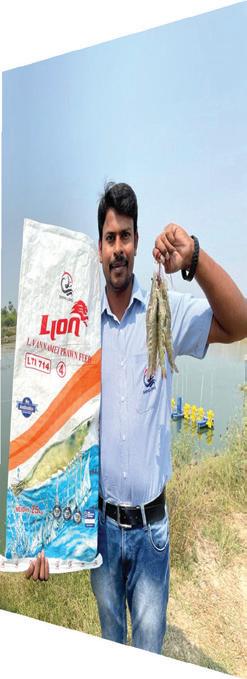
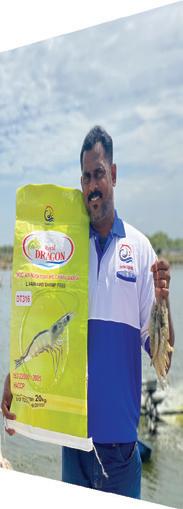

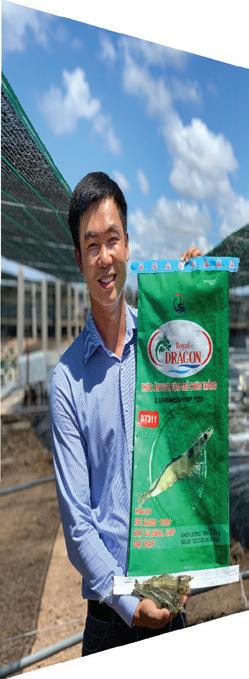


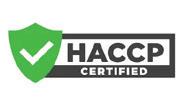



VIETNAM PHILIPPINES MALAYSIA INDIA SHENG LONG BIO-TECH INTERNATIONAL CO., LTD Add: Block A5, Duc Hoa 1 Industrial Park,Duc Hoa District, Long An Province Tel: (84-272) 3761358 - 3779741 Fax: (84-272) 3761359 Email: thanglong@shenglongbt.com Website: www.shenglongbt.com SHENG LONG BIO-TECH (INDIA) PVT LTD Add: Plot No. A-11/1, Part-A, SIPCOT Industrial Park, Thervoykandigai Village, Gummidipoondi Taluk, Thiruvallur District, Tamil Nadu 601202, India. Tel: 91-44-6790 1001 Fax: 91-44-6790 1017 Email: info@shenglongindia.com Website: www.shenglongindia.com Sheng Long, your professional and trusted aquaculture partner. We are committed to supporting our valuable customers’ success by providing innovation programs with high-performance feeds, healthy shrimp larvae, aquatic probiotics & healthy products and new farming models & technology.
Sheng
We
Life
Quality
Long
Use
Long
Editor/Publisher
Zuridah Merican, PhD
Tel: +60122053130
Email: zuridah@aquaasiapac.com
Editorial Coordination
Corporate Media Services P L
Tel: +65 6327 8825/6327 8824
Fax: +65 6223 7314
Email: irene@corpmediapl.com
Web: www.corpmediapl.com
Design and Layout
Words Worth Media
Management Pte Ltd
Email: sales@wordsworth.com.sg
Web: www.wordsworth.com.sg
AQUA Culture Asia Pacific is published bimonthly by
From the editor
2 Making Aquaculture Sexy Again
Industry News
4 Global Aquaculture Update 2H 2023 /MOU to scale certification of small scale farmers in Indonesia
Shrimp Aquaculture
8 Indonesia’s first shrimp broodstock multiplication centre
The country and region now have access to SPF broodstock for efficiency of the sector while lowering CO2 emissions. By Zuridah Merican
11 TARS 2023 raises the bar in Asia’s shrimp aquaculture industry
Views on costs of production, marketing within Asia and matching nutrition to genetics
20 Cost management amidst current price crisis in shrimp farm production
Soraphat Panakorn details how to control and cut production costs wisely
Feed Technology
27 Maintaining feed attractability with independence from the marine ingredients supply chain
An attractability assay on white shrimp using no ingredients of animal origin. By Sofia Morais and Nicola Pontefract
31 A multifunctional feed additive complex enhances shrimp growth and health
Supplementation also enhances immune response and survival of shrimp while reducing Vibrio damage in tissues, say Orapint Jintasataporn, Yann Lever and Nilo Nequinto
35 Unleashing shrimp resilience: The power of organic trace minerals
Their important role is also in bolstering shrimp immunity. By Henry Wong and Will Lin
Aqua Research Pte Ltd

3 Pickering Street, #02-36 Nankin Row, Singapore 048660
Web: www.aquaasiapac.com
Tel: +65 9151 2420
Fax: +65 6223 7314
Printed in Singapore by Times Printers Private Limited
18 Tuas Avenue 5 Singapore 639342
Subscriptions
Subscribe via the website at www.aquaasiapac.com
Subscriptions can begin at any time.
Subscriptions rate/year
(6 issues): SGD 70,

Email: subscribe@aquaasiapac.com
Tel: +65 9151 2420
Fax: +65 6223 7314
Copyright © 2023 Aqua Research
Pte Ltd.
All rights reserved. No part of this publication may be reproduced, stored in a retrieval system or transmitted, in any form or by any means, electronic, mechanical, photocopying or otherwise, without the prior permission of the copyright owners.
39 You can only improve what you measure!
Mikael Herault, Clément Martineau, Dachawat Poonnual and Freddy Balbi describe the performance tests prior to releasing dietary solutions to the aquafeed market
Aquaculture Innovation
42 Southeast Asia’s first trivalent vaccine for the tilapia
Following trials in Thailand, Malaysia, Ghana and Latin America, an official launch of the vaccine in Thailand
45 Net zero carbon protein: The cornerstone of a sustainable food system
Henk Noorman describes how fermentation technology is used for single-cell protein production
Industry Review – Marine Fish
47 Yunlong grouper – a hybrid grouper that withstands low temperatures
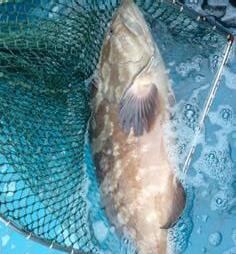
Chin-Chiu Lin discusses the farming of Yunlong grouper after 40 years of hybrid grouper development in Taiwan
51 The Barramundi in Australia Reviews recent research and activities with the industrially farmed barramundi
53 Show Review
World Aquaculture 2023 in Darwin, Australia was held from 29 May to 1 June
58 Company & Event News Aqua Culture Asia Pacific is
www.aquaasiapac.com
Contents Volume 19, Number 5 September/October 2023 MCI (P) 012/10/2023 ISBN 1793-056
a print
PDF
and digital magazine. View E-magazine & Download
of past issues for free
MCI (P) 012/10/2023 PPS1699/08/2013(022974) Volume 19 Number 5 www.aquaasiapac.com Cost Management Amidst Shrimp Price Crisis Maintaining Feed Attractability The Barramundi in Australia First Trivalent Vaccine for Tilapia Creating
Hybrid 1 September/October 2023 AQUA Culture Asia Pacific
a
Zuridah Merican
Ihaveheard arguments that aquaculture never lost its sex appeal but let us start with how we got here. The Aquaculture Roundtable Series (TARS) 2023 featured Shrimp Aquaculture –Regeneration which took on a double meaning. The first is a renaissance of sorts but the industry also needs to attract the next generation of aquaculture professionals or ‘how do we make aquaculture sexy’. For every industry to remain relevant in the face of the changing business scenario, it has to reinvent itself. It requires both renewed financial investment and human resources to carry this through. Indonesia, with its large number of startups (eFishery is a unicorn), innovation and Petambak Muda Indonesia (PMI) shows an excellent example of both and TARS could not have been better sited than in Bali.
A quick SWOT analysis. The next generation is innovative, science driven, willing to share information to drive the industry. What they lack in experience, they make up with energy, a can-do attitude with the advantage of English as a unifying language for communication within and between countries. The cando attitude must be emphasised as many of the older generation
OUR MISSION
Making Aquaculture Sexy Again
often are dismissive on new ideas/ technology and simply say ‘Sorry, cannot work, or I am in cutting cost mode, hence I will not spend time to try’. At the moment, the next generation may lack credibility but that is what drives them to attain this. They strongly believe in promoting the industry above oneself. There are huge opportunities with the money available for startups and hence it is no surprise that startups and the next generation have a symbiotic relationship i.e., they drive each other. If there is a potential threat, it is the crisis the shrimp industry is facing now with low farmgate prices and high production costs. Every crisis offers an opportunity and it is heartening to see that the next generation view the glass as half-full.
Do India and Indonesia have an advantage with the pioneer generation passing the baton to the 2nd and 3rd generations? The Philippines is close behind, but it is apparently slower in other countries where the next generation does exist, but they do not seem to come to the fore. Succession planning seems more evident in family businesses and we see this in the farming, feed and the processing segments of the supply chain. However, in multinational companies and corporations, there is also the younger generation where succession is not as evident. Both share a bottleneck where the seniors are not willing to pass more responsibility to the juniors and allowing them to make mistakes.
The take-away messages from the industry dialogue with the next generation are simple. To the government, please include their views and ownership in their 5-year plans. Many government officials and
politicians are transient and shortlived while the next generation has to bear and live with their decision making for the future. The industry must put marketing ahead of production or else ‘who will be eating all this shrimp?’ and quality must be the priority above all. The industry must work together as a team and form alliances. The business must have more predictability and made less risky while automation and artificial intelligence will help aquaculture move away from being perceived as dirty, dangerous or difficult (3Ds). An often-raised issue is stock insurance without which investors steer away and without data and record keeping, there cannot be insurance. The young generation are aware of this.
The Indonesian model worked well because of a push factor. Irrespective of the university education pursued or the individual interest of the younger generation, they were thrust into the responsibility of continuing the family business. To paraphrase Rizky Darmawan, chair of PMI – “Is your mother so Asian that she forced you into aquaculture?” Maybe, it is not such a bad thing! The vibe that I took home was that despite the current challenges, this was all temporary and they were still willing to invest so they could be ready for the next upcycle.

If you have any comments, please email: zuridah@aquaasiapac.com

From the editor
We strive to be the beacon for the regional aquaculture industry. We will be the window to the world for Asia-Pacific aquaculture producers and a door to the market for international suppliers.
We strive to be the forum for the development of self-regulation in the Industry.
2
September/October 2023 AQUA Culture Asia Pacific


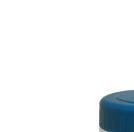
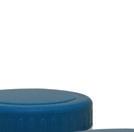


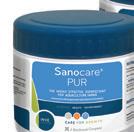

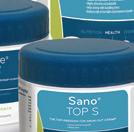



Acute shortage of fishmeal and fish oil expected
With regards to the fishmeal and fish oil situation, Nikolik added, “We expect acute shortages, especially certified fish meal and fish oil. The already high prices in 1H 2023 will be supported in 2H 2023.” High prices of fishmeal and fish oil were due to high prices of plant alternatives.
Global Aquaculture Update 2H 2023: Between a Rock and a Hard Place
However, there is the El Niño effect. El Niño conditions have caused the cancellation of the first fishing season in Peru, creating an acute fishmeal and fish oil shortage. Shrimp feed prices are expected not to soften as previously thought due to the correction in soybean meal prices.
With demand softening and El Niño driving fish meal prices higher, the second half of 2023 is expected to be the most challenging period for global aquaculture since the peak of the pandemic in 2020. This outlook was given in Rabobank’s Global Aquaculture Update published in July 2023 by the Global Animal Protein Sector team led by Gorjan Nikolik, Senior Analyst –Seafood. This covered salmon, shrimp, and fishmeal and fish oil. The key takeaways were:
Despite more normalised prices, the salmon industry will remain highly profitable in 2H 2023. Rabobank does not expect further price weaknesses since the fish is currently competitively priced relative to alternatives. Salmon prices have largely corrected to more normal levels but remain high compared to historical levels.

The Asian shrimp industry is facing a challenging period with persistently low prices and high costs, making its farming unprofitable. A weaker Chinese demand amidst the supply growth in Ecuador means a sizeable supply correction in Asia is needed to balance the market. The slump in shrimp demand may worsen in 2H 2023 as Chinese demand softens.
High prices for fishmeal and fish oil will likely be supported throughout 2H 2023. Prices of fish oil are already at record levels. Also, due to El Niño and high fish meal and fish oil prices, aquafeed prices will not experience the correction that had been expected, given lower soymeal prices.
Salmon supply to rebound in 2H 2023
Salmon supply will return to growth after nearly two years of contraction in Q3. The expectation is that from now on, the supply will be positive while experiencing low growth until the end of 2025. The improved supply in 2H should be met with solid demand, maintaining good price levels but lower than in 1H 2023, where salmon had one of the best periods ever recorded. Unfortunately, for Norwegian producers, the resource tax voted into law will start retroactively from January 1, 2023 (Figure 1)
Shrimp: A year to forget
Since 1H 2023, shrimp prices have continued to fall due to soft demand from the US and Europe amidst high supply from Ecuador. According to the Urner Barry White Shrimp Index (Figure 2), prices have fallen below prepandemic levels to ten-year lows.
“In 2H 2023, it is likely that China will experience softening demand. Despite stellar shrimp imports earlier in 2023, Chinese shrimp consumption has not kept up with imports, swelling inventories,” said Nikolik. “This is a year to forget for the shrimp farming industry as 2H 2023 is expected to be even more challenging than 1H 2023.”
The Asian shrimp industry is facing a difficult period of record lows. In 2H 2023, Nikolik said, “Asian producers
are suffering from low-price and high production costs and have started to reduce production. Indian production is expected to contract significantly in 2H 2023. Vietnam’s shrimp industry is at an inflection point due to flat prices and high costs. With a high reliance on the soft demand in the US market, it is inevitable that Indonesia will reduce production. All eyes will be on Ecuador, as El Niño poses serious flooding risks; rains impact water quality, which increases biological risks.”
Meanwhile, shrimp production from Ecuador is expected to expand by 16-18% throughout 2023, assuming no negative effects of El Nino. This is lower than the 20% growth rate achieved in 1H 2023, but will nevertheless worsen the global over supply situation
Acute shortage of fishmeal and fish oil expected
With regards to the fishmeal and fish oil situation, Nikolik added, “We expect acute shortages, especially certified fish meal and fish oil. The already high prices in 1H 2023 will be supported in 2H 2023.” High prices of fishmeal and fish oil were due to high prices of plant alternatives.
However, there is the El Niño effect. El Niño conditions have caused the cancellation of the first fishing season in Peru, creating an acute fishmeal and fish oil shortage. Shrimp feed prices are expected not to soften as previously thought due to the correction in soybean meal prices.
4 Industry News
Figure 1. Salmon prices have largely corrected to more normal levels but remain high compared to historical levels. Source: Fish Pool Edge by Kontali, Rabobank, 2023.
September/October 2023 AQUA Culture Asia Pacific
Figure 1. Salmon prices have largely corrected to more normal levels but remain high compared to historical levels. Source: Fish Pool Edge by Kontali, Rabobank, 2023.
Softer shrimp market conditions
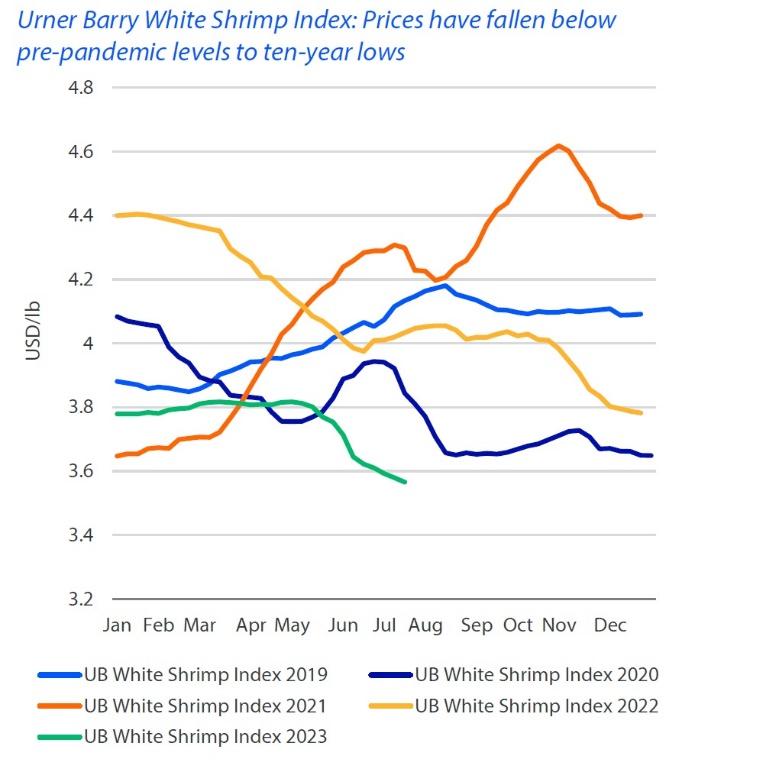
0n shrimp markets, the team said China will likely join the US and EU with soft market conditions. Rabobank’s Trade Data Monitor reported that YTD 2023 China’s imports were up 39.4%, reaching more than 340,000 tonnes by April 2023. This record demand will not be repeated in 2H 2023. US Shrimp demand was lacklustre in 1H 2023 and is not expected to change in 2H 2023. YTD 2023, US import volumes were down 18%. YTD 2023, the EU-27+UK imports were down 14.7% in volume.
Reference
Rabobank, 2023. Global Aquaculture Update 2H 2023. Between a Rock and a Hard Place, Global Animal Protein Sector Team, Rabobank Food and Agribusiness, 28 July 2023. https:// research.rabobank.com/far/en/sectors/animal-protein/globalaquaculture-update-2H-2023.html
MOU to scale the certification of smallholder farmers
Softer shrimp market conditions 0n shrimp markets, the team said China will likely join the conditions. Rabobank’s Trade Data Monitor reported that 39.4%, reaching more than 340,000 tonnes by April 2023. US Shrimp demand was lacklustre e in 2H 2023. YTD 2023, US import volumes were % in volume.
Reference: Rabobank, 2023. Global Aquaculture Update Hard Place, Global Animal Protein Sector Team, Raboban 2023. https://research.rabobank.com/far/en/sectors/animal
In Utrecht, on September 7, 2023, during the Global Shrimp Forum, eFishery, the Indonesian aquaculture technology company announced a strategic partnership with the Aquaculture Stewardship Council (ASC), a global leader in promoting responsible aquaculture practices. This collaboration marks a significant step towards advancing sustainable aquaculture in Indonesia and empowering small-scale shrimp farmers across the region.
Through this transformative alliance, eFishery reaffirms its dedication to supporting and elevating small-scale shrimp farmers in Indonesia. By extending assistance towards obtaining ASC certification, the partnership aims to foster not only more sustainable farming practices but also wider access to markets for these farmers. One of the pivotal goals of this collaboration is to enhance the understanding and acceptance of ASC standards within the Indonesian shrimp industry.

Industry News 5
Figure 2. Urner Barry White Shrimp Index: Prices have fallen year lows. Source: Rabobank, July 2023.
Figure 2. Urner Barry White Shrimp Index: Prices have fallen below pre-pandemic to ten-year lows. Source: Rabobank, July 2023.
September/October 2023 AQUA Culture Asia Pacific
Chris Ninnes, ASC’s CEO (left) and Gibran Huzaifah, CEO and Co-Founder of eFishery (right) during the MoU signing ceremony between eFishery and ASC at the Global Shrimp Forum 2023
eFishery will also work together with ASC to identify opportunities and develop mechanisms to link eFishery’s data collection systems to an always-on, seamless digital audit process that enhances efficiency, accuracy and transparency. This innovative approach will not only streamline the auditing process of the ASC certification but also provide actionable insights for continuous improvement in aquaculture practices.
“We are thrilled to collaborate with ASC in ventures that align seamlessly with our mission to foster sustainable aquaculture practices. This partnership is not only a testament to our commitment to Indonesian shrimp farmers but also showcases our determination to catalyse positive change within the industry through technological innovation,” said Gibran Huzaifah, CEO and Co-Founder of eFishery.

“We’re delighted to start working with eFishery, a company that so closely aligns to ASC’s vision for a more responsible and inclusive aquaculture industry” added Chris Ninnes, ASC’s CEO. “By signing this Memorandum of Understanding, we are marking the beginning of a great collaboration which will foster innovation and best practices in Indonesia, as well as contribute to ASC’s development of a fully digital audit process.”
Gibran added, “The goal for eFishery is to help small scale farmers and we have doing by connecting them with financing, with the input and the outputs. Missing to date is connecting with certification, for better access to markets and also improving farming practices to be more sustainable. We already have a platform and digital tools. Partnering with ASC is an important step for the farmers to increase their level of productivity, level of sustainability and then accessing markets.”
“We have the right infrastructure and data which we have been building over the past few years to be able to finance the farms. We are currently working on a pilot with one of the financing companies in Indonesia to provide opex to the fish and shrimp farmers in one area in Indonesia. If as part of the improver program, farmers need for example waste management facilities, we can offer some structured product financing. Over the long run, we want to support more farmers than what we might be able to and so we need to create partnerships to work with us.”
Established in 2013, eFishery is the first aquaculture technology company to pioneer innovations in aquaculture. eFishery has disrupted traditional fish and shrimp farming methods by providing advanced solutions within the aquaculture ecosystem through an end-to-end platform that offers access to feed, regulated financial assistance from institutions under the supervision of OJK, and markets for fish and shrimp farmers. eFishery’s goal is to build an aquaculture ecosystem in Indonesia that is not only profitable but also sustainable for all stakeholders involved. The company has three primary objectives: addressing food security through aquaculture, tackling fundamental issues in the aquaculture industry by providing affordable technology, and reducing social and economic inequality through inclusive digital economics.
Next steps for eFishery
On its expansion to other Asian countries, Gibran explained, “We will work with one country at a time. We have a team in India over the last 12 months. Here the focus is on fish (catla, rohu and pangasius) and also shrimp. After India, if our model works, we will explore other countries such as Vietnam and Thailand. In Asia, we target the small-scale farmers; the more fragmented the better because we provide this aggregation technology.
The eFishery team in India is working to increase farm productivity, which is much lower compared to that in Indonesia as fish stocking density is also lower. “The metric for India is profit per acre and we have managed a 34% increase for typical ponds. In India, we managed to quickly partner directly with a feed manufacturer to build our feed distribution business. Currently in India, we are still small with around 30 farmers covering 1000 acres,” added Gibran.
There is also eFishery’s international export plan for its products. “Beginning with shrimp, we want to tell the story of small-scale farmers with traceability to US consumers. In the US we have a team there but in China and Japan, we connect with some importers and retailers. With the current market conditions, we are figuring out whether we should strategically collaborate or partner with already established players since they can create value.”
6 Industry News
September/October 2023 AQUA Culture Asia Pacific
Gibran Huzaifah with his team at the Global Shrimp Forum held from 5-7 September; Cameron McClean, Project Consultant Aquaculture (left) and Jayu Pramudya, Vice President Transformation (right).
Believe in what you see
We can see it inside, you will see it from the outside! BACTOCELL activates and associates with the gut mucosa, which is the key to a true probiotic effect. If you need to see more, years of research and field applications have provided compiling evidence of BACTOCELL’s modes of action and benefits at cellular, animal and farm level. Discover the world of BACTOCELL , the pioneering probiotic in aquaculture.
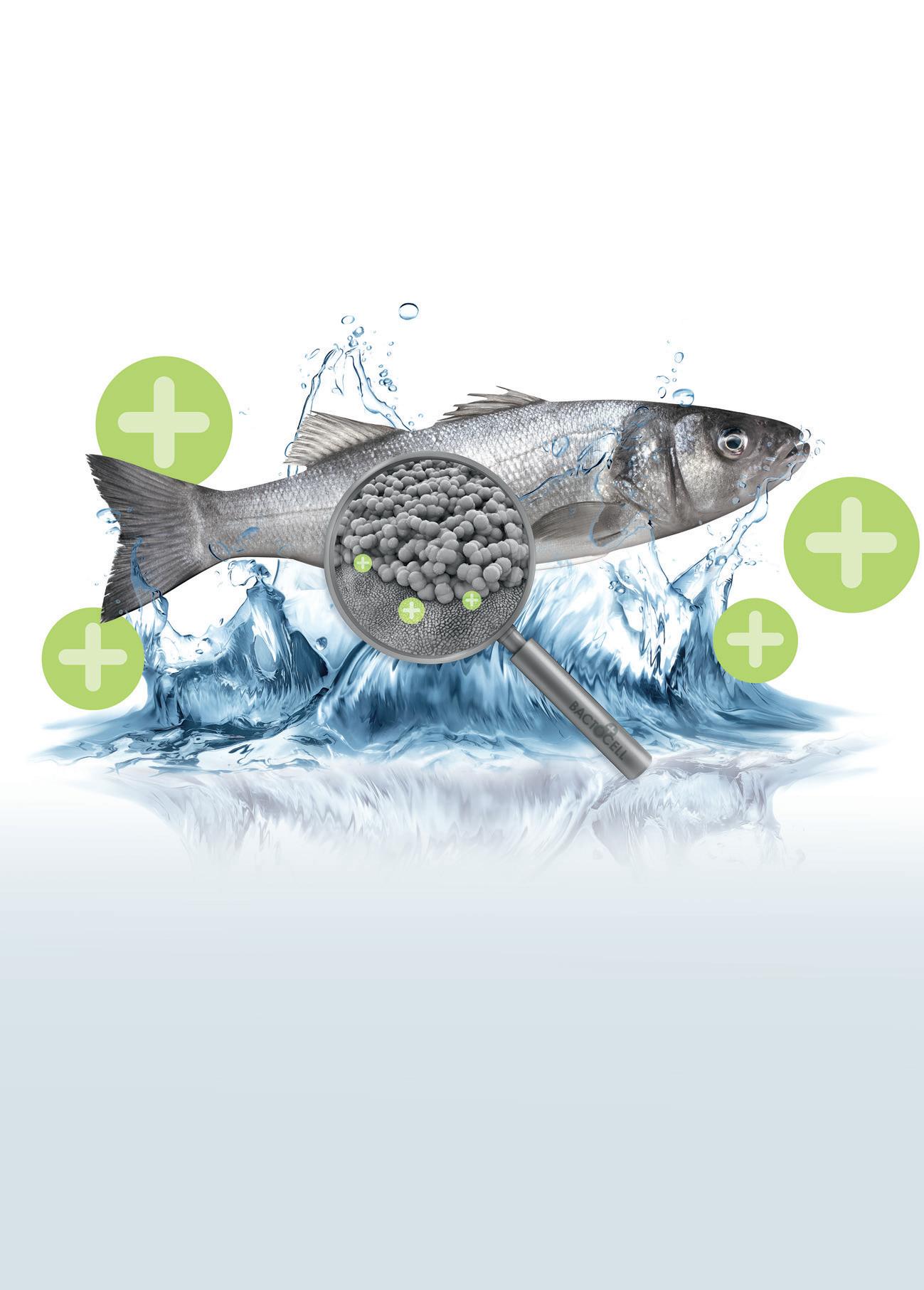
RCS Lallemand 405 720 194BCT_AQUA_ADfp_ENG_012017. LALLEMAND ANIMAL NUTRITION SPECIFIC FOR YOUR SUCCESS www.lallemandanimalnutrition.com aqua@lallemand.com Not all products are available in all markets nor all claims allowed in all regions.
LACTIC ACID BACTERIA FOR AQUACULTURE
Indonesia’s first shrimp broodstock multiplication centre
The country and region now have access to SPF broodstock for efficiency of the sector while lowering CO2 emissions
By Zuridah Merican
One weak link in broodstock distribution is the distance between broodstock breeding centres (usually in Hawaii or Florida USA) and the customers, mainly in Asia and India. The dire need for a broodstock multiplication centre (BMC) was highlighted during the pandemic; flight cancellations resulted in increasing mortality rates and stress in broodstock. At TARS 2021 which covered shrimp aquaculture, Steve Arce, Director of Technical Services at Kona Bay Shrimp-Hendrix Genetics Aquaculture emphasised the benefits of a local BMC, which, other than the better physiological well-being of broodstock and reduced stress of not travelling halfway round the globe, include acclimatisation of stocks to local conditions, as well as the ability to use BMCs as distribution centres to other remote markets. At the same conference, Marcela Salazar, Benchmark Genetics quoted statistics on the transport of broodstock - 1,000 broodstock travelling 12,615km and emission of 11.46 ton CO2 with each gram of shrimp using 40g of water.
Back in 2020, Hendrix Genetics set up PT Kona Bay Indonesia (KBI) to establish a BMC in Indonesia. The plan was that by early 2021, Indonesian shrimp hatcheries will be able to source high quality, specific pathogen free (SPF) broodstock, locally reared. It started with a temporary SPF facility in West Java, followed up with the construction of a brand new state-of-the-art SPF facility in Buleleng Regency in North Bali. In the next two years, according to General Manager of PT Kona Bay Indonesia, Ari Setiardhi, KBI targets broodstock production to reach 80,000 pieces per year. “Thus, we will continue to support the development of the shrimp industry by enhancing quality and supply with increased exports to the international market. Local distribution of SPF broodstock also mitigates potential pathogen vectors associated with locally grown broodstock.”

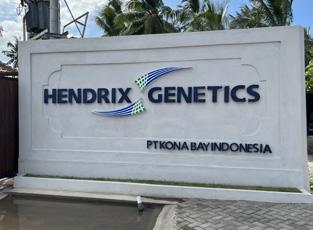
Operations at this BMC in North Bali began in the third quarter of 2022. Up to June 2023, KBI has produced five batches of broodstock and sold 7,034 pieces. By July 2023, this rose to 10,852 pieces. In May 2023, KBI announced the exports of its first shipment of Litopenaeus vannamei shrimp broodstock to Malaysia. “With this export, we are continuing to meet the demand for high performing broodstock, and improving access to quality genetics for shrimp farmers all over the world,” said Ari.
In June, PMI or Petambak Muda Indonesia (translated Young Shrimp Farmers, Indonesia) organised a post Shrimp Aquaculture Conference (SAC) visit to KBI. Here participants learnt firsthand the operations at this BMC. The visit began with an overview on shrimp and fish genetics at Hendrix Genetics by Robbert Blonk, Director of Research and Development. Blonk is responsible for the Hendrix Genetics aquaculture breeding programs
which cover L. vannamei , Atlantic salmon, rainbow trout and Pacific salmon.
BMC and NBC
The core of Hendrix Genetics shrimp breeding program is the nucleus breeding centre (NBC) in Kauai, Hawaii, where new lines of SPF broodstock are developed, multiplied and delivered to this BMC at the moment, and later to India, and later still to a future BMC, planned also for Asia. Ecuador which does not allow either shrimp imports or SPF stocks has its own NBC and BMC to produce clean broodstock (not SPF) for post larvae production. Additionally, there is a small NBC in Malaysia, specifically for the specific pathogen tolerant (SPT) program.
In 2022, Hendrix Genetics announced the formation of a new company, Kona Bay India Pvt Ltd. This means that Hendrix Genetics and Sapthagiri Hatcheries will jointly establish a broodstock multiplication centre for Indian hatcheries to source locally reared high quality broodstock. Blonk said that currently under construction, this will come online in late September 2023.
PT Kona Bay Indonesia (KBI)’s BMC in Indonesia in North Bali supplies high quality, specific pathogen free (SPF) broodstock to local and regional hatcheries.
8 Shrimp Aquaculture
September/October 2023 AQUA Culture Asia Pacific
Robbert Blonk (right) with Rizky Darmawan, President, PMI and Aditya Anindita and Dara Duhita, CV UTS.
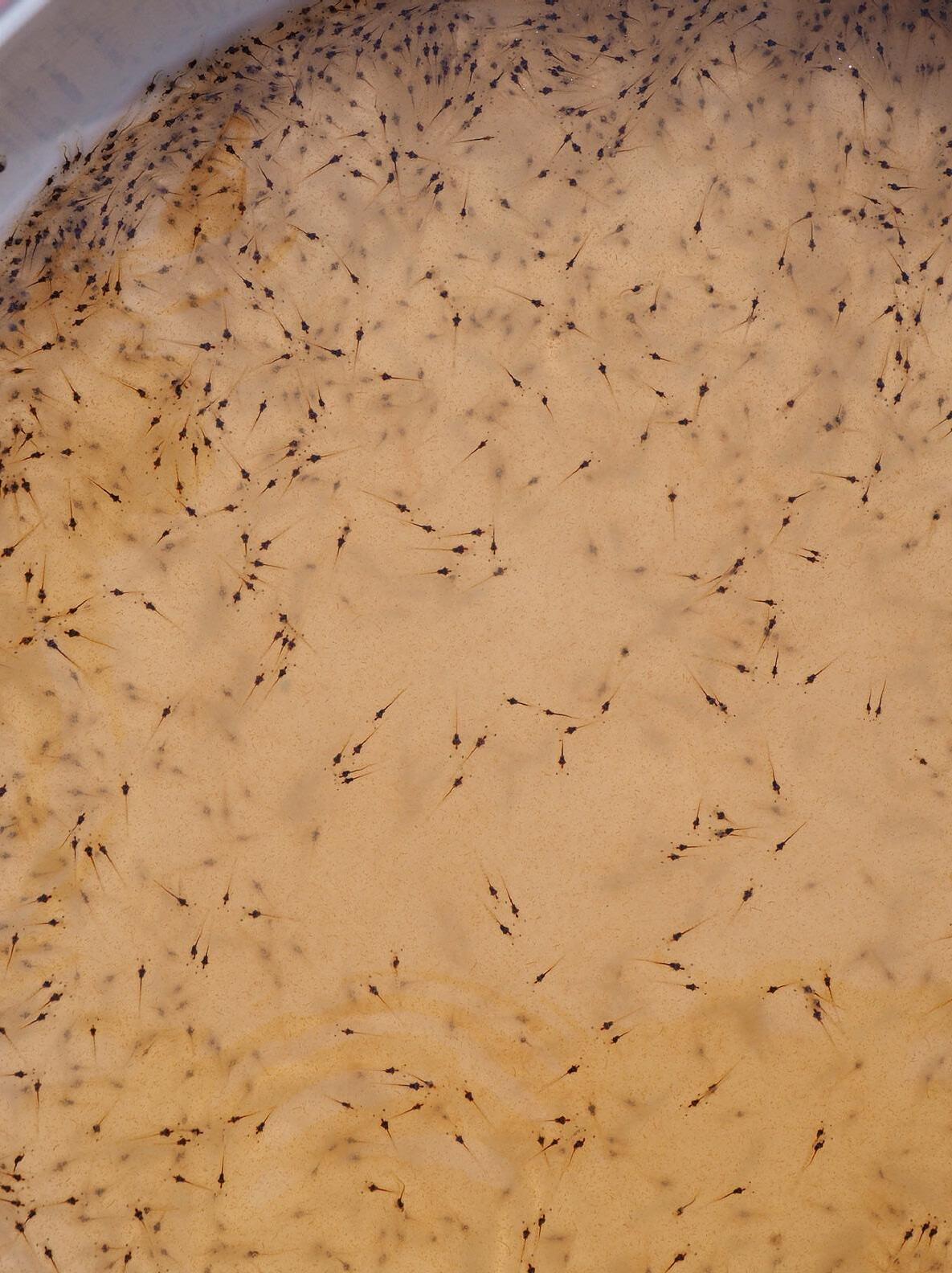

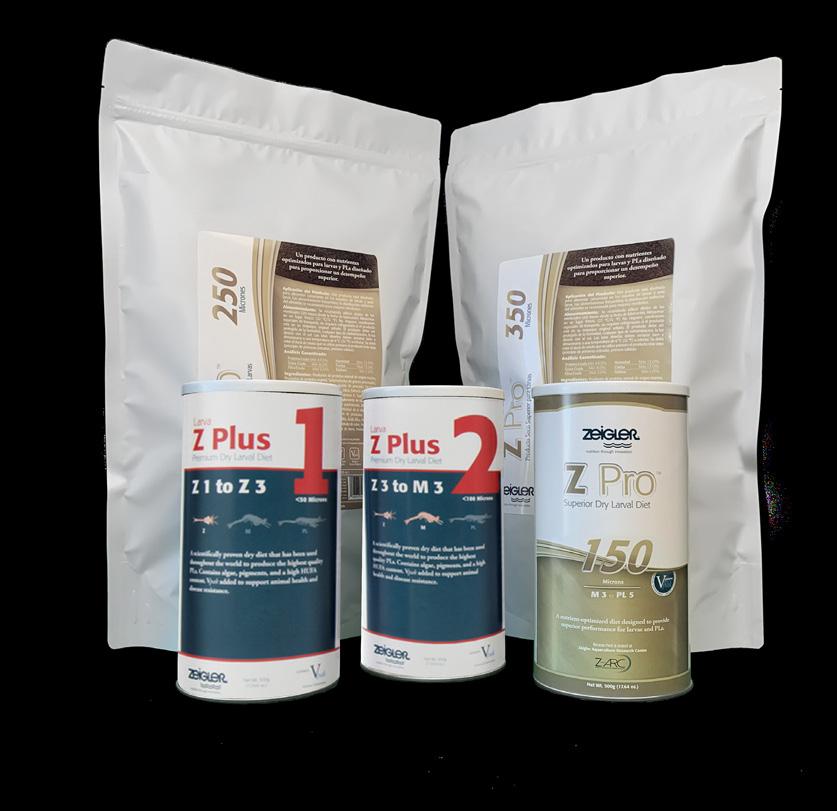
Ultimate Feed Combo Enhancing performance while improving water quality Recommended Feeding Guide (shrimp only) Larval Stages 250 Z Plus 1 Z Plus 2 Z Pro 150 Z Pro 250 Z Pro 350 <50 <100 350 150 Z1 Z2 Z3 M1 M2 M3 PL1 PL2 PL3 PL4 PL5 PL6 PL7 PL8 PL9 PL10 PL11 PL12 Z Pro™ Z Plus Larva
Shrimp Aquaculture
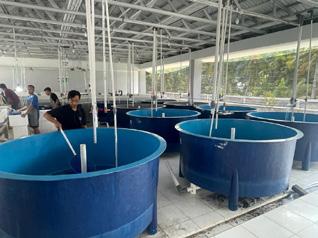
Operations at KBI
KBI produces broodstock certified as free from disease/ SPF produced from Parent Post Larvae (PPL) supplied by the Kona Bay Marine Resources NBC in Kauai, Hawaii. This begins with the imports of SPF post larvae (PL1015) from the Kauai facility. These undergo quarantine for 14 days, with constant disease monitoring by OIE/WOAH certified laboratories. Following tests by the government and approval to proceed, post larvae are reared to 3640g broodstock, depending on demand, selected and packed for delivery to hatcheries. In a press release, Ari said, “Here at KBI, we are always committed to the best management practices (BMP) for every process in our facility. The broodstock we produce in Indonesia have the same quality and genetic traits as the parents produced at the Kona Bay located in Hawaii.”
KBI implements a strict biosecurity system with a modern laboratory for monitoring the health status of the shrimp and water quality. KBI also operates using a sustainable cultivation process, one of which is the waste management unit (UPL) facility, where the waste produced does not have a negative impact on the surrounding environment.
The production steps include transfers of shrimp of 1g, 10g, 25g and finally 36-40g, to circular tanks of 16, 25 and 30 tonnes. At each transfer stages and at weekly intervals, random samples are collected for testing of 13 pathogens, conducted at Genics laboratory in Australia and the Aquatic Pathology Laboratory, University of Arizona, USA. This is parallel to constant selection based on size and condition of the shrimp.
Genetic traits and lines
Blonk stressed that the broodstock produced at this BMC is exactly the same genetically as the Kauai stock and is the latest generation. The difference is that the broodstock has been adapted for performance to local conditions, such as the water quality conditions in Indonesia. A shorter transport reduces stress and risk. “We make them accessible to small and big hatcheries. This means 99% less emissions and better animal welfare standards. Indonesia now has access to such broodstock for efficiency of the sector.”
At the NBC, siblings, stocked at optimal density are tested in sentinel ponds where there are disease and temperature challenges. They conduct challenges


From the delivery of 13,000 PL10-15, the BMC will end up with 7,000 broodstock for sale. There are steps to separate females and males and checking for spermatozoa, ovarian development, and overall physical/phenotypic quality. As a biosecurity measure, only pelleted high protein (>40% crude protein) feeds are used and later towards the end of the cycle, SPF maturation feeds are used to prepare them for maturation in hatcheries. Each cycle is 5 months. Monthly, the government checks the shrimp for 14 diseases and also on all systems before issuing health certificates to allow KBI to ship out the broodstock to hatcheries.
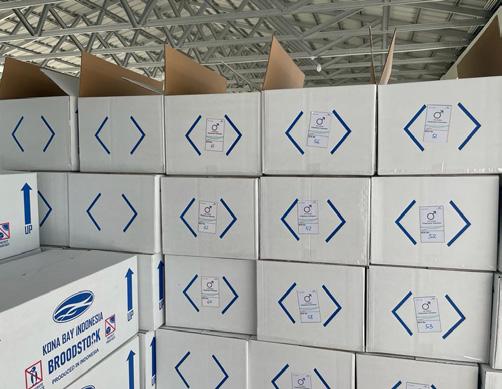
for EMS/AHPND tolerance and the multipliers of the top families are delivered to the BMC. Inbreeding is kept at 1-2% only. In Hawaii the testing is intense and rigorous and is overseen by both the Hawaii State Department of Agriculture (HDOA), and the United States Department of Agriculture (USDA). Challenge tests are carried out to get information on the selection and are used to optimise elite phenotype with increases in growth at each generation. Kona Bay is moving the bar.
Hendrix Genetics uses a multistage selection process, from mass selection to family selection and subsequently genomic selection to work on traits of commercial importance, including disease traits.
10
September/October 2023 AQUA Culture Asia Pacific
Broodstock in display tanks and packing broodstock.
TARS 2023 raises the bar in Asia’s shrimp aquaculture industry
Views on costs of production, marketing within Asia and matching nutrition to genetics
This year, The Aquaculture Roundtable Series or TARS covered the shrimp aquaculture industry. It was evident that the industry in Asia has been in stagnation mode and was going nowhere. Costs of production for Asian shrimp have risen tremendously, with high costs for feeds and energy inputs erasing margins of farmers and affecting all players along the supply chain. Meanwhile, prices have been dropping as the global market is facing headwinds of inflation and a looming recession while supply from Latin America (mainly from Ecuador) are on the rise.
Part of the challenge is the lack of efficiency due to poor survival rates but there is a larger systemic risk. The goal of TARS 2023 was the Regeneration of Asia’s shrimp aquaculture, bringing stakeholders together to proactively improve the culture model, mitigate disease, match nutrition to genetics, focus on sustainability and develop a strategic plan. The message was that evolving is not enough, regeneration is needed, and the responsibility falls on all those involved in the industry.
Held in Bali, Indonesia on August 16-17, the meeting had 253 participants, with 70 of them from Indonesia. Participants reflected on the current situation in Asia’s shrimp aquaculture, mired by ten-year lows in shrimp prices with a global oversupply situation. This year’s program featured 43 speakers, session chairs and panelists participating in 10 sessions looking to improve multiple aspects of shrimp farming.
Commercial shrimp farming began in the early 1980s and therefore, the industry in Asia is now seeing its first generation retiring or passing the business to the
next generation. The second meaning of regeneration is a succession plan for the next generation of shrimp aquaculture professionals and how to make shrimp aquaculture sexy to attract new players. The adage is that with this crisis comes opportunities.
Indonesia is an interesting country with a long history in shrimp aquaculture. It has grand plans to be a bigger regional player in the global shrimp aquaculture industry and aspires to move up from being the third largest producer in Asia, after India and Vietnam. Dr TB Haeru Rahayu, Director General of Aquaculture, Ministry of Marine Affairs and Fisheries, Indonesia delivered the opening address via video. Indonesia, he said, has invested IDR175 billion or USD11.4 million on its zonebased environmentally friendly pond model to spearhead shrimp aquaculture. Further expansion is planned in East Nusa Tenggara, covering an area of 1,800ha. The government and industry players need to make shrimp aquaculture efficient.
The State of Industry and Challenges is the flagship session of each TARS. This year, it was viewed via four vantage points:

• Why Asia’s industry is lacking and stagnating within the current crisis with low prices and high production costs.
• Potential of domestic and regional markets for Asia’s shrimp.
• While genetics is leading in terms of selective breeding, what is the potential for nutritional innovation.
• The case study on Indonesia’s shrimp farming industry.
11 Shrimp Aquaculture
The flagship of TARS, The State of Industry and Challenges session had the following speakers, from left, Robins McIntosh, Charoen Pokphand Foods Public Ltd, Thailand; Haris Muhtadi, Shrimp Club Indonesia; Brett Glencross, IFFO/University of Stirling, Scotland and Chris van Bussel, Kontali, Norway. The industry panelist was S Santhana Krishnan, SK Marine Technologies, India (right). Session Chair was Ronnie Tan, U.S. Grains Council, Malaysia.
September/October 2023 AQUA Culture Asia Pacific
Lifting the Dark Clouds that cover Asian Shrimp Farming
Robins McIntosh , Charoen Pokphand Foods, Thailand alternates between the Americas and Asia and evaluates the strengths and weaknesses of shrimp aquaculture in these regions. In his presentation aptly titled “Lifting the Dark Clouds that cover Asian Shrimp Farming,” he said, “In 2000, there were few issues and technology could be applied to give a quick turnaround. Asia tripled shrimp volumes in a very short time period. Today, we have problems but are there technological solutions?” More shrimp is being produced but without the reduction in costs of production, and markets are not increasing at the same rate. Average prices have fallen such as from THB254/kg (USD7.62) in 2014 when global supply was
HEALTH IS AT THE HEART OF OUR CONCERNS
Raju, Avan$ Feeds, Dhanunjaya Goud, Adisseo; Shrinibas Mohanty, Srinivasa Rao Patchala and Sai Deepak Murty, Avan$ Feeds and Radha Krishna Reddy, RKS Nature Biotech
Li=ing the Dark Clouds that cover Asian Shrimp Farming

Participants from India and Thailand, from left, Balu Shanmugam, SyAqua; Anuj Tyagi, Avanti Feeds; Ekanant Yuvabenjapol, Thai Union Feedmill, Thailand; Srinivasa Rao Patchala and Korupu Venkata Raju, Avanti Feeds, Dhanunjaya Goud, Adisseo; Shrinibas Mohanty, Srinivasa Rao Patchala and Sai Deepak Murty, Avanti Feeds and Radha Krishna Reddy, RKS Nature Biotech.
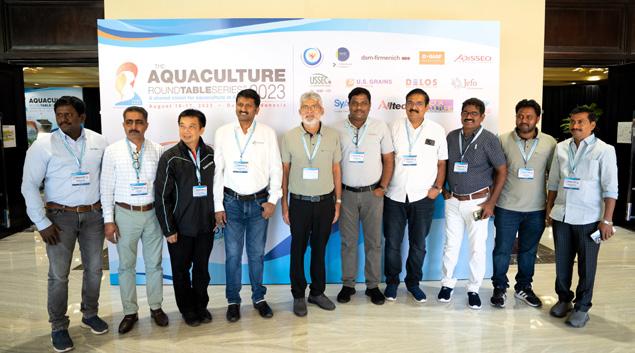
3.33 million tonnes to THB185/kg (USD5.6) in 2022 when global supply was 5.37 million tonnes. Global shrimp supply is estimated at 5.1 million tonnes in 2023.
Robins McIntosh, Charoen Pokphand Foods, Thailand alternates between the Americas and Asia and evaluates the strengths and weaknesses of shrimp aquaculture in these regions. In his presenta$on aptly $tled “Li\ing the Dark Clouds that cover Asian Shrimp Farming,” he said, “In 2000, there were few issues and technology could be applied to give a quick turnaround. Asia tripled shrimp volumes in a very short $me period. Today, we have problems but are there technological solu$ons?” More shrimp is being produced but without the reduc$on in costs of produc$on, and markets are not increasing at the same rate. Average prices have fallen such as from THB254/kg (USD7.62) in 2014 when global supply was 3.33 million tonnes to THB185/kg (USD5.6) in 2022 when global supply was 5.37 million tonnes. Global shrimp supply is es$mated at 5.1 million tonnes in 2023.
Wakeup call
“The wakeup call is for Asia which had a domina$ng posi$on in global shrimp prod uc$on. Asia is now trending down whereas La$n America (LATAM) is trending up. In three years, we can expect LATAM to overtake Asia. This is reflected in India and Ecuador. As a result of EMS decima$ng mature markets, investments in India and Ecuador had increased and transformed the global shrimp story.” Robins elaborated that Asia intensified culture models decades ago and now LATAM is just beginning to do so using Asian technology - aera$on, high quality feeds, higher stocking density, closed systems, automa$c feeders and more of domes$cally improved stocks. “It is Asia again but in a con$nent with more resources.”
BOOST YOUR BUSINESS BY OPTIMIZING YOUR HEALTH ADDITIVE STRATEGY
RESTRICT inappropriate use of antibiotics and chemicals
His message is that disease is not the problem, “Today we have management-type diseases where we really have not taken an ac$ve role to manage our systems, such as to reduce stresses and reduce the onset of chronic mortality. Technology has added produc$on but has not been defla$onary.
REDUCE losses from subclinical disease and outbreaks
INCREASE economical and ecological sustainability
BOOST feed perfomance and farm productivity

12 Shrimp Aquaculture
www.adisseo.com
Figure 1. Farm gate prices as of July2023 for sizes/kg 30, 40, 50,60,70. Source: Robins McIntosh in “Li\ing the Dark Clouds that cover Asian Shrimp Farming”.
PIC
Figure 1. Farm gate prices as of July2023 for sizes/kg 30, 40, 50,60,70. Source: Robins McIntosh in “Lifting the Dark Clouds that cover Asian Shrimp Farming”.
September/October 2023 AQUA Culture Asia Pacific
Wakeup call
“The wakeup call is for Asia which had a dominating position in global shrimp production. Asia is now trending down whereas Latin America (LATAM) is trending up. In three years, we can expect LATAM to overtake Asia. This is reflected in India and Ecuador. As a result of EMS decimating mature markets, investments in India and Ecuador had increased and transformed the global shrimp story.”
Robins elaborated that Asia intensified culture models decades ago and now LATAM is just beginning to do so using Asian technology - aeration, high quality feeds, higher stocking density, closed systems, automatic feeders and more of domestically improved stocks. “It is Asia again but in a continent with more resources.”

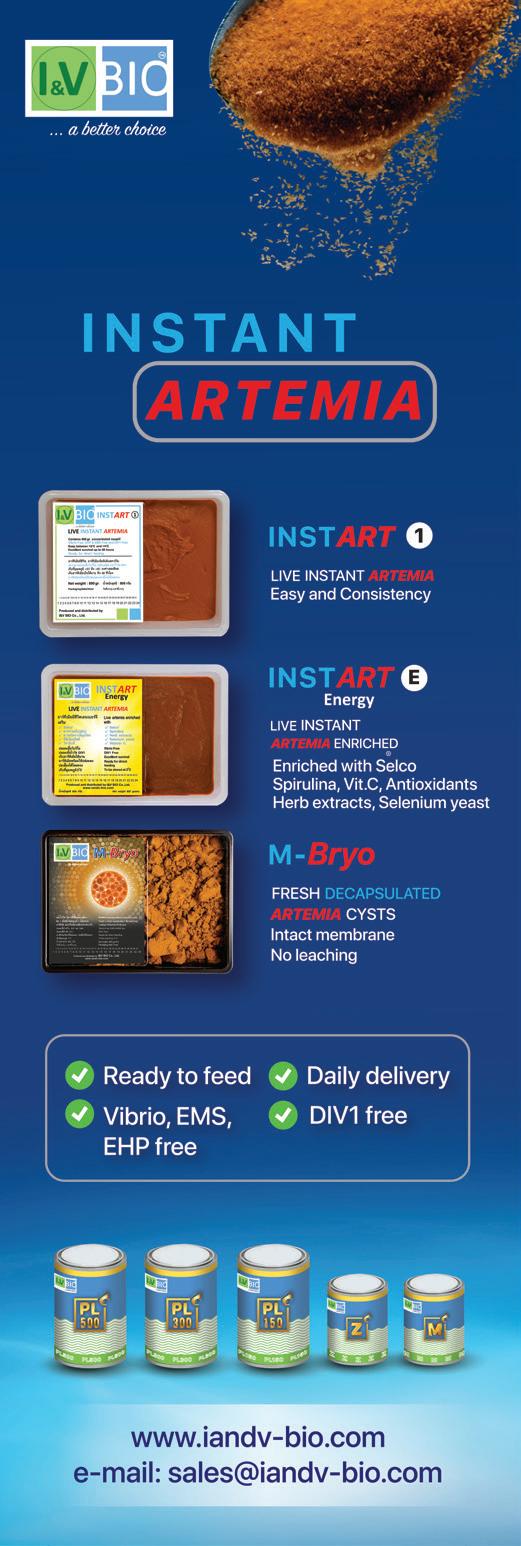
His message is that disease is not the problem, “Today we have management-type diseases where we really have not taken an active role to manage our systems, such as to reduce stresses and reduce the onset of chronic mortality. Technology has added production but has not been deflationary.”
High costs of production
With regards to farm gate prices, Robins said that Ecuadorian farmers do get less. Malaysian farmers benefit with higher prices because of the high local consumption. Farmers in Vietnam and Thailand need to work harder at their costs of production. “Farmers have no control on market forces, but they do have control on costs. We want technology for higher productivity, with reduced costs and more efficiency. When prices recover, Robins predicted that India and Indonesia are in the best position for the future.”
13 Shrimp Aquaculture
“Farmers have no control on market forces, but they do have control on costs. We want technology for higher productivity, with reduced costs and more efficiency. When prices recover, India and Indonesia are in the best position for the future.”
-Robins McIntosh
September/October 2023 AQUA Culture Asia Pacific
Shrimp Aquaculture
Law of carrying capacity
Robins stressed the first principle which is the law of carrying capacity. “Different ponds have different carrying capacity. There is also the farm carrying capacity and that of the environment to keep shrimp healthy. The system must be healthy, whether closed or open. When this exceeds, the farmer will pay for them.”
He showed that in 2014, with AHPND, the failure rate was 58% but fell to 0% with a recovery in 2016. But since 2021, high stocking density such as 165-180 PL/m2, failure rates are 12-17% and costs of production rose to USD4.80-5.50/kg (Table 1).
“In an oversupply situation, it will be the low-cost producer that will stay alive,” said Robins.
Back to fundamentals
The strong message is to go back to fundamentals. Among them, Robins raised the idea of secondgeneration biosecurity which is to secure shrimp health by increasing and protecting shrimp production through the prevention, control and management of biological risk factors. With post larvae, the worst enemy is not counting them. “With fast growing shrimp, feeding rate should be increased and stocking according to feeding rate and not according to density. This means adjusting to the genetic potential of the shrimp. In Ecuador costs of feed and seed constitute 65% but in Vietnam only 60%. The target is to limit failure rates which are low in Ecuador. The future will see tolerance markers developed for EHP in shrimp.”
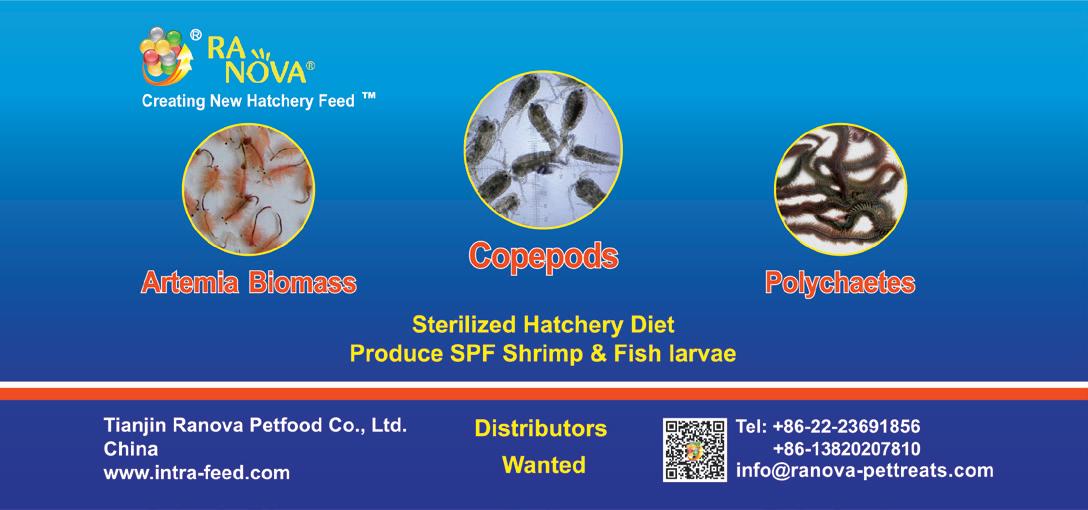
“Over the last 12 months, global trade was down 3% to 3.5 million LSE in tonnes indicating that only 57% of produced volume was exported and the rest 43%, was consumed locally.”
-Chris van Bussel
Creating markets: Intra Asia trade for Asian shrimp
In the last 12 months, there has been a large drop in shrimp demand in the US by 19% and EU by 10%. Shrimp exports were redirected to China which increased import volumes by 27%. Demand in other parts of Asia has remained stable. Therefore, Chris van Bussel, Kontali brought the focus to marketing vannamei shrimp within Asia itself.
Kontali which provides and analyses data, uses the LSE (live shrimp equivalent) to overcome some disconnects when estimating production and supply volumes and to follow up on a kilogram of shrimp from pond to plate.
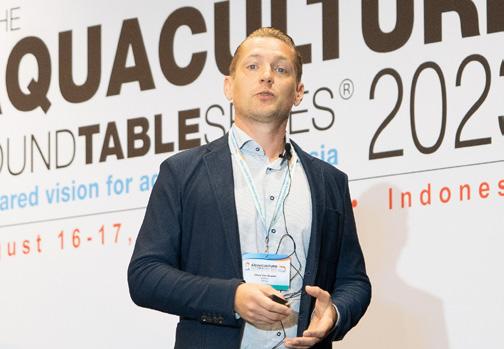
14
2010 2014 2016 2021 2022 PRE-AHPND AHPND RECOVERY ???? ???? Stocking Density 110 80 135 165 180 Failure Rate (%) 0 58 0 12 17 ADG 0.18 0.28 0.3 0.24 0.26 Harvest Size (g) 16 17 25 25 25 Cost (USD/kg) 2.80 14.0 3.25 4.80 5.50
Table 1. Effect of exceeding carrying capacity on failure rates and costs of production. The target is to limit failure rates which are low in Ecuador. Source: Robins McIntosh in “Lifting the Dark Clouds that cover Asian Shrimp Farming”.
September/October 2023 AQUA Culture Asia Pacific

Shrimp Aquaculture
LSE also allows for conversion factors and differentiation of species, as well as differentiating wild type and farmed. “Over the last 12 months, global trade was down 3% to 3.5 million LSE in tonnes indicating that only 57% of produced volume was exported and the rest 43%, was consumed locally,” said Chris. In 2023, it expects supply to be 6.25 million tonnes, with an increase of 6% in 2H 2023 as compared to 2H 2022. However monthly volumes, for the July to December period, are expected to drop by 13% because of stocking and harvest patterns.
Asia’s markets for vannamei shrimp
Supply of vannamei shrimp
According to Kontali’s data, Asia supplied 2.8 million tonnes LSE in the last 12 months. China is the world’s largest shrimp market at 1.8 million tonnes. Recently monthly volumes have been increasing, from 100,000 tonnes back in 2022 to 150,000 and 170,000 tonnes in 2023. Local production and imports from Ecuador, India and Thailand, have 50:50 share of this market. “Some 50% of imported shrimp into China are HOSO (headon shell-on). In contrast, US imports are mainly peeled shrimp, which totalled more than 1 million tonnes LSE.”
Supply of vannamei shrimp
In terms of farmed shrimp supply in 2023, Ecuador is expected to produce 1.3 million tonnes, a 12% increase over that of the last 12 months while it is predicted that India may produce 4% less at 1.0 million tonnes and Southeast Asian countries may contribute 0.9 million tonnes, which is down by 17%. India exported 950,000 tonnes in 2023, a 5% increase over that in 2022. Vietnam’s exports showed a 10% y-o-y decrease. It is redirecting exports towards Asia Pacific markets. Farm gate prices have been low since July. There is a similar situation with Indonesia, low prices, a 10% y-o-y and YTD 14% less. It exports mainly peeled shrimp to the US.
Mapping for potential market of Asian shrimp
The upside is the potential of domestic markets to partake in Asia’s supply of 2.8 million tonnes. Both the US and Thailand have the highest per capita consumption, hovering around 3kg/capita/year. The domestic market in Thailand is growing at 10%/year. In Asia, high per capita consumption already exists in countries like Malaysia and Vietnam. He divided country markets into groups such as highflyers which include Thailand, Vietnam, Taiwan and South Korea, already with a substantial local consumption; low hanging fruits such as China and Malaysia, already with more than 250,000 tonnes and 50,000 tonnes, respectively in local markets. “Local consumption in Asia is led by China which is increasing at 6-7% per year,” said Chris. A challenging producer is India with a minimal volume consumed locally.
In terms of farmed shrimp supply in 2023, Ecuador is expected to produce 1.3 million tonnes, a 12% increase over that of the last 12 months while it is predicted that India may produce 4% less at 1.0 million tonnes and Southeast Asian countries may contribute 0.9 million tonnes, which is down by 17%. India exported 950,000 tonnes in 2023, a 5% increase over that in 2022. Vietnam’s exports showed a 10% YOY decrease. It is redirecMng exports towards Asia Pacific markets. Farm gate prices have been low since July. There is a similar situaMon with Indonesia, low prices, a 10% YOY and YTD 14% less. It exports mainly peeled shrimp to the US.
The other two top markets in Asia are Japan and Korea. While 95% of Japan’s shrimp imports are from Asia, recent demand from Japan has been flat at 10,000 tonnes/month. Imports are mainly processed shrimp and import prices are usually USD1 below that of previous years. Korea is also a leading market for processed Asian shrimp.
After China, Thailand is Asia’s number two vannamei shrimp market at 230,000 tonnes and growing at 10% annually. There is an increasing trend in monthly volumes, a decreasing trend in export volumes and stable and low import volumes. It exports mainly peeled shrimp to Asian countries.
Chris calculated that the potential growth of local markets is 3X provided countries increase consumption to the levels of Thailand and the US. At a CAGR of 10%, this may take only 11 years.
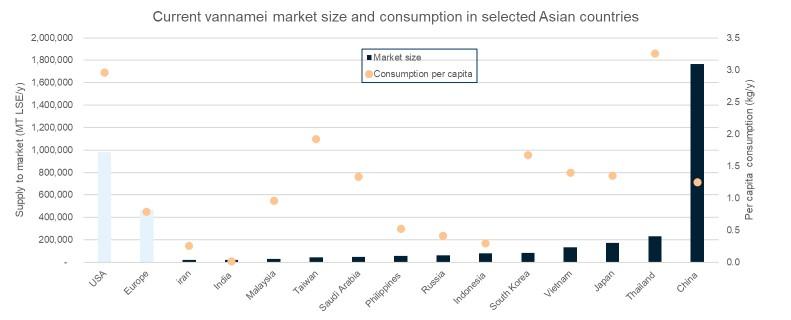
Asian vannamei supply to market is 2.8 Mmt
6
Intra-Asia Trade & Market Supply: PotenMal for domesMc consumpMon.”
Mapping for potenPal market of Asian shrimp
16
Figure 1. Current vannamei market size and consumpMon in selected Asian countries. Asian vannamei supply to market is 2.8 million tonnes. Source: Chris van Bussel on “Farmed Shrimp:
Systemizing the world of aquaculture and fisheries
September/October 2023 AQUA Culture Asia Pacific
Figure 2. Current vannamei market size and consumption in selected Asian countries. Asian vannamei supply to market is 2.8 million tonnes. Source: Chris van Bussel on “Farmed Shrimp: Intra-Asia Trade & Market Supply: Potential for domestic consumption.”
“It is time to reconsider requirements as we increase system intensity, especially as we progress towards less reliance on endogenous system nutrient sources. The approach to achieve this will be precision nutrition, but repeating nutrient requirements studies with new genotypes will be too slow and time consuming.”
- Brett Glencross

Matching nutrition to bespoke genetics
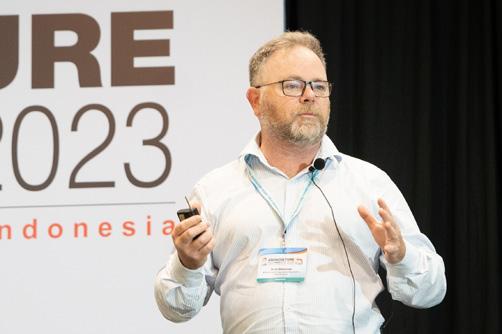
Shrimp genetics with lines from fast growth to robustness is credited for much of the expansion of shrimp farming in Asia, but it has still been elusive as to how to match nutrition to genetics to obtain the best from the shrimp. At this TARS, Dr Brett Glencross , IFFO and University of Stirling, Scotland discussed how to meet this challenge in “Modelling Precision Nutrition with Bespoke Genetics”.

Concurring with Robins, Brett said that biological systems are complex with many interactions between farmed shrimp and their environment. “The complexity of nutritional pathways, with various inputs, outputs and rates (and rate effectors) lends itself well to process modelling. Alternatively, we can also assemble data in an integrated approach using a computer-based model or construct a model and bring in AI to refine the data and to be more accurate,” said Brett.
“Modelling precision nutrition allows us to approach this using either a nutrient flow or demand model approach, so
we can predict what happens to any inputs. Conversely we can also predict what is needed to achieve an outcome and subsequently reverse engineer the optimal products and then apply that to see what outcomes are possible,” added Brett.
“This precision nutrition approach has been applied by various feed companies to prescribe and design many modern feeds. This is a powerful tool. For example, today in salmon farming, it is typical to have as many as 10 different feeds for the various stages and not counting tweaks made for specific demands and environments.”
Digestible protein and digestible energy
Diet specifications are now based on digestible protein and digestible energy which allows for absolute protein (and energy) levels to vary. This brings opportunities for the use of alternative and lower quality ingredients to be included in the formulation and reduce the costs of formulations. “Then, we can also move on to more precision, optimising individual levels of nutrients such as amino and fatty acids, vitamins for each animal and pellet sizes. In shrimp, the focus remains on protein demand (g/shrimp/day).”
Nutrient demand remains the foundation to nutrition. Brett discussed the various factors used to model what the animal needs for a particular outcome such as maintenance, growth and optimal health. Based on research with the monodon shrimp, the protein demand for zero gain was 4.5mg/g/day, whilst the average protein efficiency was 24%. Demands also need to focus on supplying nutrients for composition of targets. It is clear that shrimp use less protein as they age.
Interaction of nutrition and genetics

From building a model it is possible to see how nutritional parameters come into play and can be manipulated to maximise the potential of a genetic line. Review of a published study showed that factors such as better utilisation, lower maintenance, higher feed intake and growth potential were all observed in an improved genetic line. In this study (Figure 3) with wild type and selectively bred 8th generation black tiger shrimp in Australia, the selected shrimp ate less protein to grow more, but when fed more protein, grew even faster.
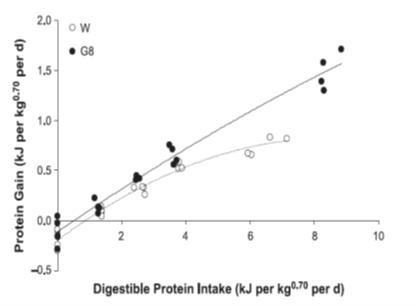
Brett concluded, “It is time to revisit our understanding of requirements as we increase system intensity, especially in those systems with less reliance on endogenous sources. The best for this is precision nutrition, but

Bre$ said, “It is .me to reconsider requirements as we increase system intensity, especially as we progress towards less reliance on endogenous system nutrient sources. The approach to achieve this will be precision nutri.on, but repea.ng nutrient requirements studies with new genotypes will be too slow and .me consuming.”
can diets do to support
poten1al? LND Diet HND Diet Wild-type Selec,vely -bred Wild-type Selec,vely -bred Protein 40% Lipid 6% Protein 50% Lipid 7%
Figure 1. What can diets do to support gene+c poten+al? Source: BreM Glencross on “Modelling Precision Nutri+on with Bespoke Gene+cs.”
What
gene1c
September/October 2023 AQUA Culture Asia Pacific 17 Shrimp Aquaculture
Figure 3. What can diets do to support genetic potential? Source: Brett Glencross on “Modelling Precision Nutrition with Bespoke Genetics.”
Shrimp Aquaculture
repeating nutrient requirements studies with new genotypes will be too slow and time consuming. There is no need to redo all the nutrition R&D, we need to develop better models to understand the holistic requirements and then test those outputs. Fundamentally, animals require nutrients, not ingredients. However, ingredient supply remains a challenge. Several years ago, fishmeal was typically included at 33% in shrimp feeds. Today, it is around 15%. Marine ingredients remain a strategic contributor, with shrimp feeds being the world’s largest user of the resource. However, the importance of ingredient sustainability is growing. Using lifecycle assessment (LCA) data and databases like that of the Global Feed Lifecycle Assessment Institute is becoming increasingly important.
“We cannot separate progressing our understanding of optimal requirements from future raw material supply. Although animals need nutrients, it is our management of ingredients that ensure their supply”.

Indonesia strives to be regional leader
Shrimp Club Indonesia is the leading association of shrimp farmers and its President Haris Muhtadi , said that the country’s shrimp aquaculture industry is underrated. Production volumes in 2022 was around 300,000 tonnes and 70% of this volume is exported to the US. There are obstacles – a fragmented industry with many small farms spread all over the archipelago, a complex distribution channel, long transportation such as 12 hours from farm to processing plants which are mainly located in Central Java, Lampung and Jakarta and lastly, difficulties in maintaining shrimp quality.

Indonesia can capitalise on its advantages, quantity and quality of coastal areas and water resources, low labour costs. “For us, it is how to modernise, position the country as a major producer. In terms of co-existence of mangrove ecosystems and shrimp farming, a project in Sulawesi is underway and we can use this narrative to move forward.”
Issues abound such as disease outbreaks and biosecurity and Haris outlined some developments such as almost 90% of farms have lined ponds. Harvest targets are 20-30 tonnes/ha with better biosecurity. “The focus on biomass is no longer possible. For producers, it is focussing on EBITDA which means we search for precision farming. We believe in stocking density based on carrying capacity
“For us it is how to modernise, position the country as a major producer. In terms of co-existence of mangrove ecosystems and shrimp farming, a project in Sulawesi is underway and we can use this narrative to move forward.”
- Haris Muhtadi
and post larvae quality for higher survival rates. At the farm level, size does not matter since we are seeing large farms failing. Farms which are 20-50 ponds in size have been more sustainable and controllable. Some farms are no longer expanding by adding more ponds.”
The industry is looking forward to better marketing strategies and eradicating bad practices of of heavy soaking over 2-4 days. For markets in Europe and China, such practices are not allowed. Together industry members are coming together to have mini processing centres for better freshness of shrimp and certification to enter new markets.
“We are serious on a unified branding of Indonesian shrimp. Meanwhile, there is a local campaign to eat one shrimp per day. We believe with Indonesia’s large population, if we succeed, we do not need to rely totally on export markets.”
We want Indonesia to be a significant investment hub for sustainable shrimp aquaculture but before that we need to make the business investible.”
18
September/October 2023 AQUA Culture Asia Pacific
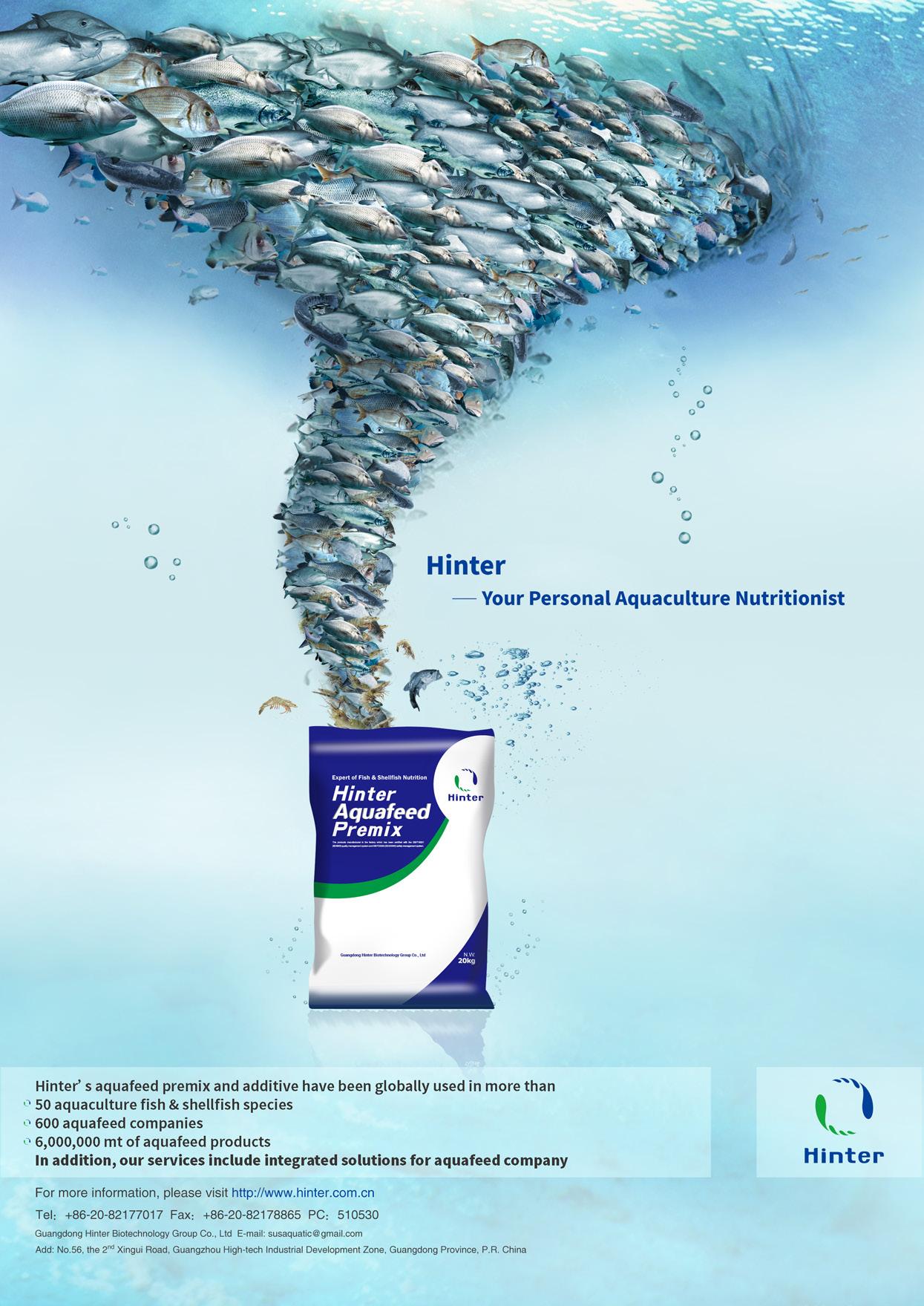
Cost management amidst current price crisis in shrimp farm production
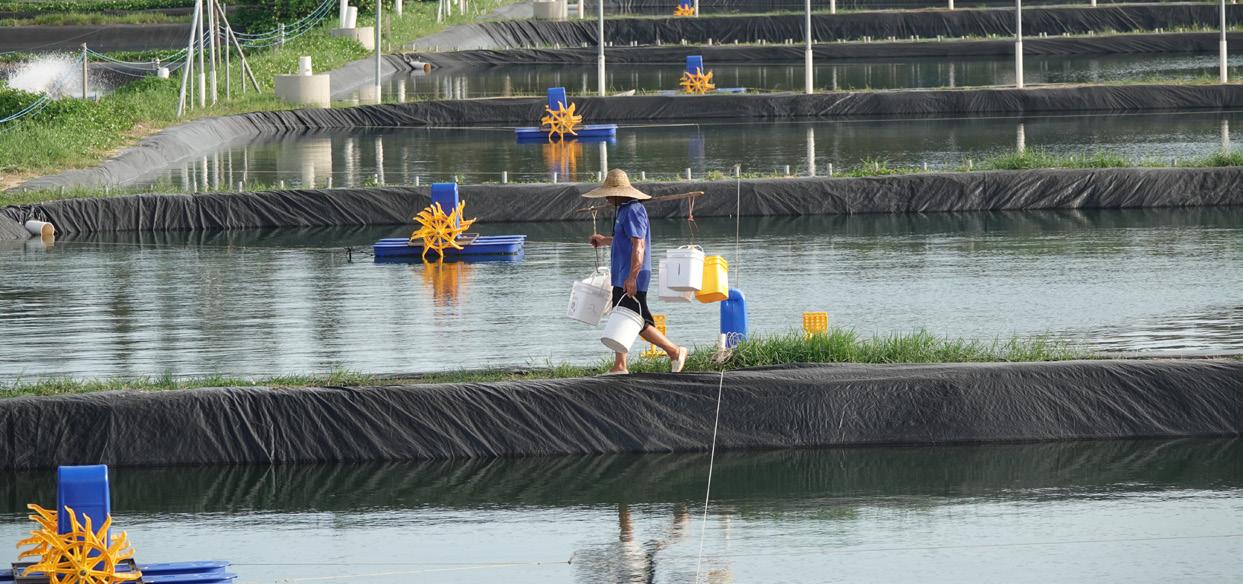
Controlling and cutting production costs wisely start from pond preparation to managing inputs
By Soraphat Panakorn
Today, many shrimp farmers face rising costs for almost all production inputs. There has been little attention on controlling costs when shrimp prices were high. However, today with low farm gate prices, shrimp farming is on the verge of being a loss-making business. During farm visits, I noticed that some farmers hold their shrimp biomass in ponds as prices are too low for them to harvest and be profitable. On the other hand, we also see that some farms are running cycles as usual since they are still profitable.
How does this latter group manage? I followed several of them to learn on reducing shrimp production cost. In my opinion, if the farmer can lower the average production cost by around 20%, they should be profitable.
What should be the optimum shrimp production cost today?
Today, current shrimp prices have been at the lowest since 2013. Farm gate prices of shrimp in each country or region, have fluctuated but recently, they have stabilised. The lowest farm gate price is still in Ecuador, followed by India. However, since the second quarter of 2023, shrimp demand in India is improving, prices are rising fast. Farm gate prices in three countries, Vietnam, Thailand and Indonesia are very close to one another (Table 1).
Malaysia and China are not considered in this discussion since most of the shrimp produced are consumed domestically. It is interesting to note that the larger the
domestic consumption the better the farm gate prices. Therefore, it is wise for producing countries to work on promoting more domestic consumption.
The production cost in each farm must be only 80% of the current farm gate price. In Thailand, the current price is USD3.00/kg for 10g shrimp (size 100/kg). Therefore, the farmer must be able to produce at a cost of production (COP) of USD2.40/kg to have a USD0.60 profit. But currently, the COP for this size is around USD3.40/kg. Therefore, the farmer needs to reduce the COP by USD1.00 to survive and continue farming. There are two ways to lower shrimp production cost.
Lower stocking density
This is the easiest way to get a good crop with lower production cost but may not be suitable for a farmer who is currently leasing land for his farm, which is common in Ecuador. Some 10 years ago, I wrote on the succces with unconventional farming practices (Aqua Culture Asia Pacific, January/February 2015, p8-14).
Recently, I met this farmer in Thailand who told me that he is still profitable and is expanding his farm. When I first wrote on his farm, he had 150 ponds and today he has 280 ponds. Over a period of 17 years, he has not faced any failed crop. Furthermore, he manages to control his COP at USD2.50/kg for size 100/kg. His concept is to let nature support productivity. The general process is:
Prices in USD Size Indonesia India China Ecuador Vietnam Thailand Malaysia 100 2.98 2.92 3.66 1.80 3.33 2.92 3.77 90 3.18 3.04 - 4.05 80 3.31 3.28 4.47 2.00 3.53 3.62 4.38 70 3.57 3.41 2.30 3.69 3.56 4.86 60 3.77 3.53 5.43 2.50 3.61 3.8 4.97 50 4.04 3.77 2.50 4.01 4.36 5.08 40 4.5 4.13 6.14 3.15 4.37 4.7 5.49 30 5.36 5.35 3.60 4.96 5.08 6.02 20 6.62 5.9 6.05 4.20 6.37 6.79
Table 1. A selection of farm gate prices in USD. Note: All prices are for reference only and might vary from region to region. Data was collected with the assistance of colleagues from these countries.
20 Shrimp Aquaculture September/October 2023 AQUA Culture Asia Pacific
• In cases where the pond bottom cannot be dried up, it is advisable to fill up the pond water immediately after harvest.
• The best pond sizes range from 1,500 to 2,500m2 with water depths of only 60-100 cm. Note that shrimp can adapt themselves to suit swings in temperature when it occurs routinely.
• The recommendation on aeration is 5HP/acre (13HP/ha) using 4-arm aerators with a total of 30-35 paddlewheels and 1.5-inch (3.8cm) dip.
• Fully run the aerator at a speed of 60-80 rpm for 20 days to completely circulate the water around the pond during the pond preparation period.
• Ten days later, apply water probiotics and fermented rice bran to initiate natural food production such as benthos or insect larvae. This usually takes 10 days.
• Stocking density is at 30PL/m2 to be aligned with the natural pond cleanup process and support shrimp growth.
• Aeration must run throughout the crop with no breaks. This is to keep water moving thoroughly to clean pond bottom and ensure mixing. The minimum dissolved oxygen (DO) must match stocking density as shown in Table 2.
• Feed less at 60-70 % of the recommended feeding rate (as per feeding table) for 3 meals/day.
• Apply water and soil probiotics regularly over the entire crop duration and reduce the application of other health care and water treatment products.
• Harvest 0.8-1kg/m2 of water at size 30-40/kg at days of culture (DOC) 100.
Table 2. Matching dissolved oxygen (DO) to stocking density based on observations. The caveat is that pond parameters are at optimal levels.
The aim is to achieve less in volume but a high return on investment. It is also to secure higher profit margins. Ultimately, the aim is to reduce the global shrimp supply which may lead to better prices in the near future. The farmer faces less stress and risks, and is able to manage disease better, at such a low density. Chances of forced or emergency harvests are lowered.
Management costs
Here it is maximising cost by adopting a six-point root cause management strategy. Firstly, the farmer’s mindset must change from being a farmer to that of an aquaculture businessman and adopt more farm management tools. He/she should be open to learn more on cost and systems management, from finances, human resources, warehousing, mechanical, electrical, climate to marketing and biology. The farmer needs to upgrade from just managing a farm to that of managing a company.
Wenger.com
Make Higher Quality Feed More E ciently
Precise control of product density for floating and sinking options
Ingredient flexibility for all aquatic species

High-capacity systems reduce operating costs
Legendary Wenger quality, throughput, and flexibility
Wenger extrusion systems are ideal for salmon, shrimp, and RAS feeds
Shrimp stocking density (PL/m2) Minimum DO at pond bottom (ppm) <20 1 20-50 2 50-100 3 100-200 4 >200 5
21 Shrimp Aquaculture September/October 2023 AQUA Culture Asia Pacific
Shrimp Aquaculture

The terms “LEAN” that is being adopted in other businesses must be used in shrimp farming operations as quickly as possible. (LEAN = Reduce unnecessary movements, waiting time, ineffective processes, waste and correction of ineffective work, overproduction, unnecessary material supply, inventory, transportation etc)
Key is understanding the cost management concept where the target is not to reduce expenditure by removing an item from the process but to spend only on what is necessary, highly effective and verifiable. The cost will be reduced because the output is higher from the same input and not from reduced expenses. It goes deeper into the root of production cost and seeking effective solutions to minimise it. In Table 3, the production process is divided into “6 +2” root costs.
Costs Share
Shrimp feed 40-50%
Post larvae
2-15% (depend on harvest size and survival rate)
Energy 10-30% (depend on farming practices)
Healthcare products 7-10%
Labour 3-10%
Tool and equipment as a precision cost 7-10% +1 +2
Rental cost in some countries is around 3-15%
Disease have increased cost at an average of 20%
Table 3. “6 +2” root costs
Next is how to minimise expenditure for each cost component.
Shrimp feed
Feed cost is around 40-50% and this can be lowered by providing natural food, both in earthen and lined ponds. However, it is important to ensure that there has been no disease outbreaks with previous crops in the surrounding areas. Fermented rice bran, applied 14 days before stocking promotes growth of a cocoon of blood worms which is feed for the newly stocked post larvae.
Consequently, the farmer provides only 20% of the recommended feed per day until all the blood worms are consumed. The full feeding program will commence after
2 weeks. While this practice reduces feed consumption, it also supports stronger shrimp leading to better feed conversion ratio (FCR).
Another strategy is to use feeds with lower crude protein (% CP), although the farmers must accept a lower growth rate of shrimp. The advantage is a lower nitrogen discharge into the pond water as well as in water resources. Usually, farmers in several countries push for fast growth which is driven by feeds with high CP as much as 40%, 42% or as high as 45%. If the genetic potential of the animal is fast growth and conditions are favourable, definitely it will be possible to reach the maximum growth rate. However, in most cases, it is difficult to meet this expectation, leading to failures.
There are many farmers using less costly low protein feed such as those in Ecuador, a majority in India and Indonesia and some in Thailand and Vietnam. These feeds with only 32% or 35% CP are effective with acceptable growth rates and margins and are sustainable.
Setting a feed supply ceiling
Based on some farm records, peak feed consumption is at DOC 60-70 or shrimp at size 12-15g. Feed should not exceed 38kg/day per 100,000 shrimp. But many farmers are used to feeding to satiation i.e. with unlimited feed supply which finally leads to over feeding and high FCRs, along with more water pollution, more energy and higher water exchange, and more healthcare products applied to keep shrimp healthy. Concurrently, the farmer is also stressed.
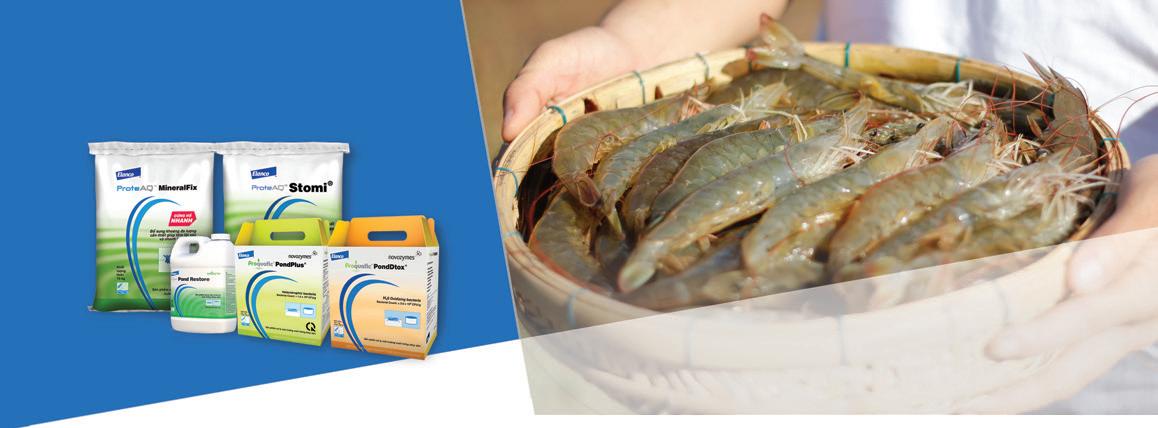
Appropriate feeding time
As we know, shrimp prefer to eat when key parameters such as dissolved oxygen and temperatures are optimal. In precision feeding, the farmer must check these two parameters at a feeding spot and feed the shrimp accordingly. Blind feeding leads to excessive FCR which in turn leads to higher production cost. (Related article: Effective feeding in shrimp culture, Aqua Culture Asia Pacific, March/April 2011, p8-13).
Auto feeder
The effective use of automatic feeders can lead to a sharp drop in FCR with uniform size and less nutrient leaching. Maximising its efficacy requires a deep understanding of the functioning of a specific autofeeder and mathematical calculations which few in the industry pay attention to.
22
C M Y CM MY CY CMY K Elanco Ad 186x62dot5mm FA.pdf 1 31/08/2023 5:24 PM
September/October 2023 AQUA Culture Asia Pacific
OUR OBJECTIVE:
OUR OBJECTIVE:
To support our customers to combine sustainability and economical performance
To support our customers to combine sustainability and economical performance
is a blend of natural products dedicated to stress management based on natural defenses stimulation and control thanks to anti-inflammatory and antioxidant effects.
is a blend of natural products dedicated to stress management based on natural defenses stimulation and control thanks to anti-inflammatory and antioxidant effects.
2
is a blend of unique oleochemicals and active matrix selected for aquaculture application to help the reduction of parasitic challenges.


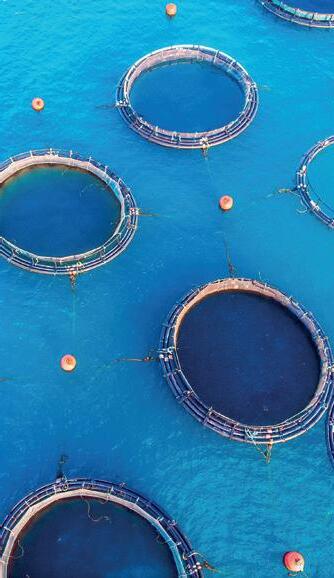
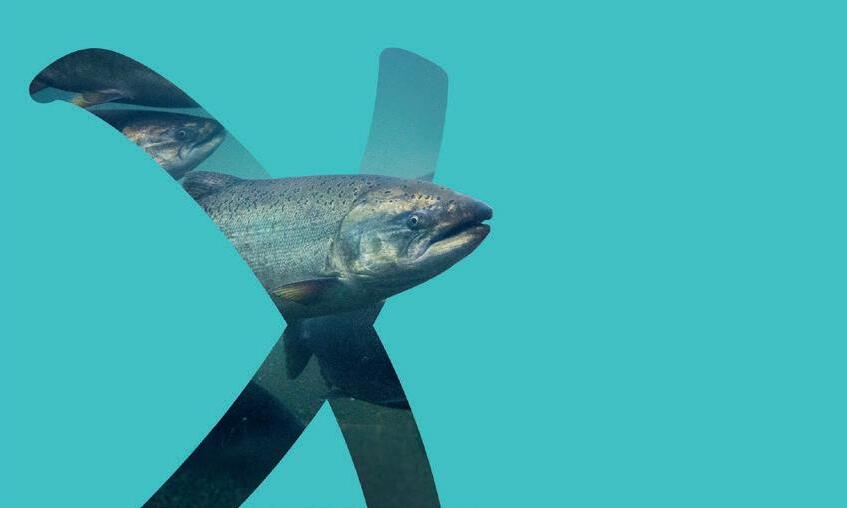



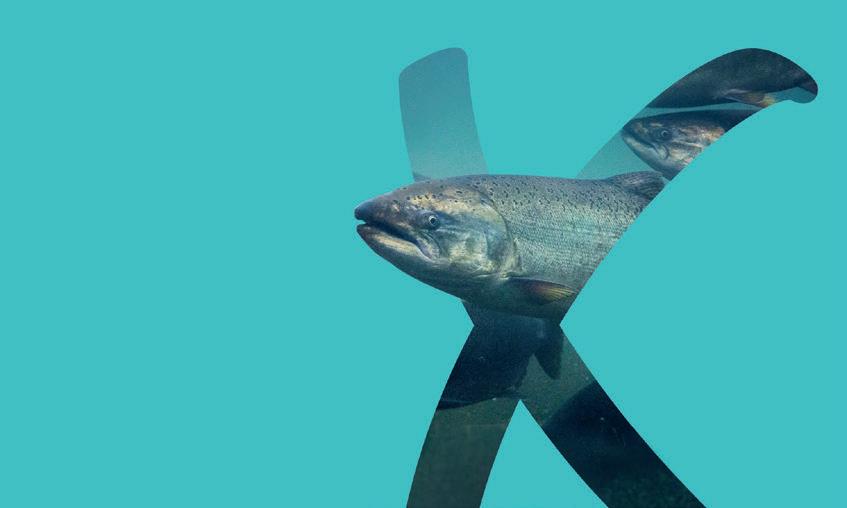
2 1 3
3 4
is a natural solution specially developped for Aqua challenges leading to better economical results thanks to a wide spectrum modes of actions essentially linked to the gut balance modulation.
is a natural solution specially developped for Aqua challenges leading to better economical results thanks to a wide spectrum modes of actions essentially linked to the gut balance modulation.


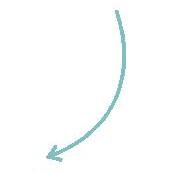


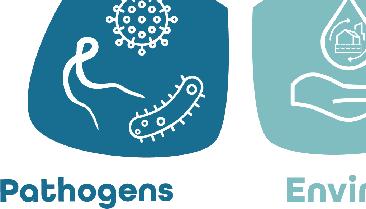

Find miXscience on © Marketing miXscienceAvril 2022
Find miXscience on © Marketing miXscienceAvril 2022 contact@mixscience.eu



4

contact@mixscience.eu
is a blend of Bacillus spp. strains dedicated to biocontrol in all aquaculture farming systems. 1
A COMPLETE SOLUTION BASED ON 4 PRODUCTS
is a blend of Bacillus spp. strains dedicated to biocontrol in all aquaculture farming systems.
is a blend of unique oleochemicals and active matrix selected for aquaculture application to help the reduction of parasitic challenges.
A COMPLETE SOLUTION BASED ON 4 PRODUCTS
Shrimp Aquaculture

The recommendation is first to start with under feeding at around 80% of shrimp demand. Subsequently, fine tune to find the optimum level by slowly reducing feed until the growth rate reduces by around 10% with lower nitrogen accumulation in the pond and water quality improves as compared to full feeding. The farmer needs to work out the optimal condition which is a combination of total ammonia nitrogen (TAN), DO, transparency, average daily growth (ADG) and pH.
Additionally, the best feed quality comes with freshness. When this mission is accomplished, it is possible to bring down FCR by 0.3-0.4 with cost savings of USD0.3-0.4/kg shrimp.
Lower stocking density for faster growth
Again, I strongly suggest that under current conditions, farmers should stock below the pond carrying capacity to avoid problems when conditions become unpredictable. This could bring down the production cost by USD0.2-0.3/ kg shrimp.
Energy optimisation
Energy is a weak critical control point since many farmers do not know exactly what is the energy supply required to meet their day to day demands in operating a cycle. Energy in some farms is in short supply which leads to low survival rates while some farmers have an oversupply which leads to rising costs. Some farmers lose a massive amount of production due to a small failure such as the breaking down of aeration and brown-out of electricity especially during critical times. Managing these require the following measures.
• Use smaller and shallower ponds and stock at a lower density. This will help to supply more DO and help to reduce losses.
Post larvae management requires selecting the best quality post larvae and nursing ‘unqualified post larvae’ over 7-14 days. On the right is a nursing tank at a farm in Thailand.
Post larvae management.
Generally, the cost of post larvae (PL) is USD0.0035/PL. To produce one kg shrimp of size 150/kg, the cost will be USD0.5/kg and for size 50/kg, it will be USD0.17/kg. How can we get the lowest cost from post larvae? Here are some tips.
• Select the best quality post larvae and do not accept free post larvae.
• If you cannot reject ‘’unqualified” post larvae, carry out nursing to enrich and disinfect them within a period of 7-14 days. With intensive care, this can be better than direct stocking.
• Ensure effective pond preparation so that the pond is free of any undesirable conditions that could lead to a crop failure in a very short time. Ensure that the water quality is optimal for stress-free shrimp growth.
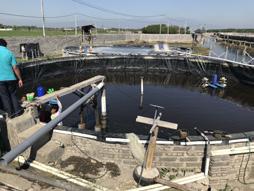
• Release post larvae into ponds with care, using an appropriate stocking technique. Avoid any further stress for the post larvae during stocking since it is already stressed during transport. Furthermore, the water quality in grow out ponds are very different from that in the hatchery.

• In the first week post stocking, focus on water quality parameters and feeding. Make sure that water quality in the pond is as close as possible to that of the water in the hatchery.
• Explore the best aeration practice. In this case, the farmer needs to find out the depth of a paddle to dip, the best rpm, the distance of each paddlewheel, when to run the aerator i.e. when to run less and when to run more, ways to check performance of the devices and how to ensure its performance as well.

• Control DO consumption. Generally, DO in water is taken up by three groups, phytoplankton, bacteria in water and soil and the shrimp. So, we need to have clean water, clear pond bottom, feed available on demand, apply less oxygen consuming microorganisms and shrimp to swim less.
• Optimise farm equipment. This is ensuring that equipment is always in the best condition before running a new crop. High quality and reliable brands of motors and engines are suggested. Energy transfers via the gearbox need frequent lubrication especially during hot weather. For electricity, try to use balance phase and use the appropriate energy driver to meet the demand of the pond. When energy is transferred via a metal pipe to propel paddle wheel, make sure that there is less friction.
• Frequently check energy consumption. The ampere meter needs to be frequently clamped around the wire to prevent increase in friction or drop in motor efficiency. Immediate fixing is required if the ampere value rises.
• Ensure good equipment maintenance. Prior to the start of each crop, there should be thorough checks and cleanups to ensure all devices are running efficiently to avoid breakdowns during a crop cycle.
• Supply adequate DO to meet optimum requirement and not to under or oversupply. DO monitoring is needed and the farm should have a dedicated person to continuously check DO in a suitable spot. DO must be aligned to the optimum requirement based on stocking density.
24
September/October 2023 AQUA Culture Asia Pacific
Energy optimistaion is to explore the best aeration practice (left) and a roller bar is used to reduce friction during energy transfer via metal pipe to propel paddle wheel (right).
There are many techniques for farmers to adopt to minimise energy use. A farmer in Chumphon province Thailand achieves a 40% reduction of electricity cost by fully adjusting energy management in his farm. Everyone can do this and once achieved, it can reduce production cost from energy supply by around USD0.3/kg shrimp.
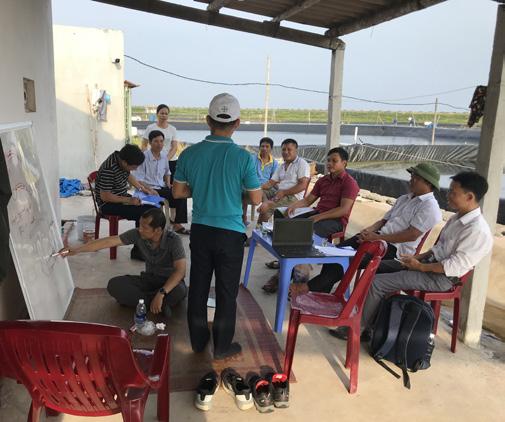
Health care products
To promote better water quality and animal health, products such as lime, minerals, vitamins, probiotics and disinfectants are commonly used. The share in the cost of production is generally around 7-10%. To make the most of these products, here are some suggestions.
• Ensure that all staff study and fully understand how to use all products in the right manner. Each farm should have a product champion to study thoroughly the mode of action of a product.
• Identify each problem clearly before deciding on which product to use and use only if the product will add value to the crop cycle. There should be a consensus on its use.
• Adopt only a qualified and trusted product with registration or has been scientifically proven with ROI.
• Apply the product at the right dosage, right methodology, and at the right time.
• Follow the result closely to prove that it really works.
Many healthcare products in the market come with good ROI since the aim is to help improve animal health, survival rate and immunity as well as increase yield and prevent severe losses. Guidelines on how to select a good healthcare product was published in Aqua Culture Asia Pacific, November/December 2019, p24-26. Precise feeding, low stocking, well prepared pond, good animal immunity can also help to reduce cost of the healthcare products by around USD0.1/kg of production cost.
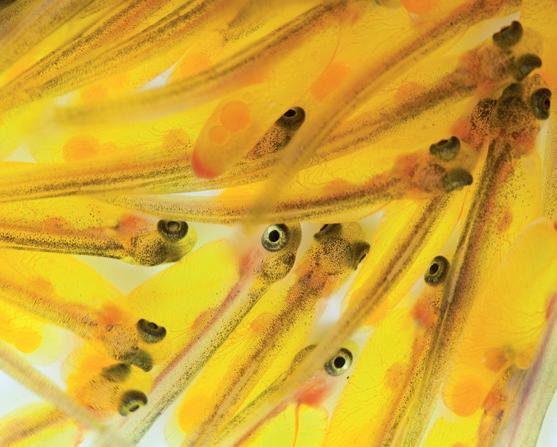
25 Shrimp Aquaculture Pole Position! Great upgrade of your feeds! Leiber ® Beta-S Highly purified ß-glucans | Immunity booster | Increased resilience | Improved vaccinations Leiber ® Beta-S Plus The ß-glucan alternative | Synergistic blend of pure ß-glucans and MOS Visit our website: leibergmbh.de Leiber GmbH | Hafenstraße 24 | 49565 Bramsche Germany | info@leibergmbh.de 070223_Leiber Anzeige_Aquaculture Asia Pacific_87,5 mm x 262 mm + 3 mm Beschnitt.indd 1 07.02.23 11:02
September/October 2023 AQUA Culture Asia Pacific
Staff training at a farm in Vietnam. A sense of ownership encourages staff to give a maximum performance potential.
Farm workers
Labour is an important component in shrimp farming and efficient staff can significantly help to lower production cost. It is important to have enthusiastic staff. Here are some tips.
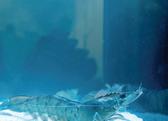
• Target some good staff and lift their skills by providing proper training or support them with a right academic knowledge.
• Promote a sense of responsibility by giving them room to develop, such as referring them to a health care topic and encouraging some to be product champions. Ultimately, we also improve team performance.
• A clear job description and key performance index (KPI) underscores their major responsibility. Remember to evaluate their performance and reward them fairly.
• When someone in the team has a special skill, promote and reward him/her. A person will be happy to work harder or cover more job functions when compensated with better pay. This could also bring down the cost of each job as well.
• Treat a good worker with good welfare, attention, and respect. Give them a sense of ownership and many will work to give his/her maximum performance.
• Support staff with necessary tools and equipment and train them well on how to use them effectively.
• Set out working guidelines/protocols for each activity together with your staff on the ‘’why and how” and how to do it properly.
Successful labour management can save USD0.2/kg shrimp.
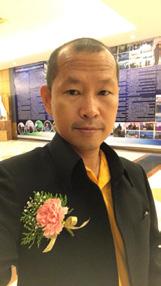
Depreciation cost
Farm equipment left abandoned is a waste. This precision cost has been allocated to the production cost. To reduce this cost, equipment should be well used over their life span, without any accidental failure during operations and properly maintained to give best performance always. What can we do for this?
We should have only trusted and efficient devices/ brands at the farm. All devices should come with the right manual and staff should be well trained to handle them as well. Each farm must have a maintenance group, with trained person/s to take care of each device.
At the end of each crop, all devices must undergo thorough checks and problems fixed. All must be 100% ready for the next crop to avoid any sudden failures during a crop cycle.

Investing in the above has added costs but will be compensated with availability of efficient equipment and a longer working life. This could bring down costs to around USD0.1-0.2%/kg shrimp as well.
Costs of leases

Many farmers think that the best way is to get the highest yield from leased farms. The correct way is to operate continuously without crop losses via disease or failures. The value of the lease comes with stable performance, which is possible by aligning to pond carrying capacity.
Disease outbreaks

Low survival rates from disease outbreaks have been a major cause for rises in production cost. On average the increase in production cost has been around 20% globally. As indicated earlier, farmers can minimise or avoid this in several ways: good pond preparation, lower stocking density, supply feed and DO on demand and use strong shrimp genetic or fast growth lines and provide optimal care.
By following the suggestions mentioned above, cost savings can reach USD1.1-1.4/kg. The current price crisis is mainly due to the oversupply of shrimp and soft demand from major markets. However, I expect that a combination of high disease prevalence and climatic changes, may soon lead to a slowdown in the global shrimp supply. However, here in Asia, we need to be resilient and be ready for the near future when the supply demand balance favours producers.
PREMIUM PETFOOD PETFOOD SNACKS AQUA FEED Contact Extru-Tech today at 785-284-2153 or visit us online at extru-techinc.com SINGLE SCREW MULTIPLE MARKETS SINGLE SCREW EXTRUSION SYSTEM OPTIMIZES FLEXIBILITY AND MARKET OPPORTUNITIES Optimize the return on your capital investment with a single screw extrusion system. Buy one system and cost-effectively deliver product to multiple market opportunities. • One system capable of economy up to super premium fresh meat petfood • Aquatic feeds that range from floating to sinking shrimp feed • Capitalize on high margin petfood treat opportunities • Significantly lower operating cost per ton versus competitive systems An Extru-Tech Single Screw Extrusion System provides all the flexibility and production efficiencies at around half the cost of competitive extrusion systems with high operating costs. P.O. Box 8 100 Airport Road Sabetha, KS 66534, USA Phone: 785-284-2153 Fax: 785-284-3143 extru-techinc@extru-techinc.com www.extru-techinc.com ET-337D.indd 1 1/28/21 8:21 AM
26 Shrimp Aquaculture September/October 2023 AQUA Culture Asia Pacific
Soraphat Panakorn is Aquaculture Technology Specialist of Novozymes, based in Thailand. Email: january161975@gmail.com
Maintaining feed attractability with independence from the marine ingredients supply chain
An attractability assay with white shrimp shows the potential of a functional palatability enhancer with no ingredients of animal origin
By Sofia Morais and Nicola Pontefract
Shrimp are notably picky about their food and mostly use chemical cues to locate and evaluate it, although mechanosensory inputs are also important during the ingestion phase. For this purpose, shrimp have extremely well-developed chemosensory organs (sensilla) for sensing food, including a long-range system (located in the antennules) that is involved in odour-activated search, and a short-range or contact system (found mainly in the walking legs and mouthparts) that is used for food detection and palatability assessment.
On the other hand, shrimp farming is commonly practised in vast areas and in environments with low visibility and rich in dissolved chemicals. Such conditions do not facilitate the quick detection of feeds by the shrimp, which then cause difficulties to the farmer in feeding management. These circumstances create ideal conditions for feed wastage and nutrient leaching, leading to environmental contamination and lower feed nutritional quality, which ultimately results in poor feeding efficiency and profitability.
Fishmeal and feed palatability
In the early days of commercial shrimp farming, high levels of fishmeal ensured good attractability and palatability of shrimp feeds. However, over the years, the industry had to gradually decrease fishmeal inclusion levels in feeds in order to address sustainability, availability and cost concerns. Concomitantly, we began seeing a rise in the utilisation of specialty ingredients and additives to compensate for the decreased feed attractability and palatability associated with reduced fishmeal content.
However, in many cases, these ingredients are fisheries by-products themselves and, therefore, greatly dependent on the same or similar (constrained and variable) natural resources. This holds special relevance in the present (and expected future) circumstances of limited marine ingredients supply, which have been exacerbated by the recent suspension of the fishing season in Peru’s main anchovy zone, as well as by the return of the “El Niño”.
Achieving feed attractability
Here we discuss a feed attractability enhancing strategy which allows industry to be independent of the turbulence associated with the marine ingredient market dynamics. Furthermore, it does not contain ingredients of animal origin.
Animals are known to naturally have high variations in their composition, which is influenced by their diets and seasonal fluctuations (including maturity stage, energetic reserves, etc). In that respect, synthetic, yeast and plant-based products are more easily standardised and consistently available year-round. Luctamax is a specially formulated and concentrated functional palatability enhancer containing selected sources of amino acids and nucleotides, among other flavouring substances, derived from yeast extracts, vegetable protein hydrolysates and synthetic sources. Its benefits as a palatability enhancer, leading to higher feed intake, have been previously investigated and demonstrated, but additionally, we want to verify its potential to attract shrimp to the feed, and lead to a faster initiation of feeding. Moreover, we aim to compare its efficacy with dimethyl propiothetin (DMPT), a chemical compound with a well-recognised attractant effect in aquatic animals.
The attractability assay
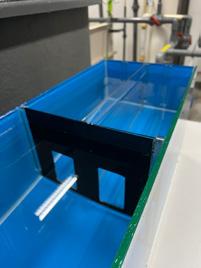
The experimental system devised by Pontus Research (Singapore) comprises three chambers separated by acrylic dividers, as depicted in Figure 1. Whiteleg shrimp (Litopenaeus vannamei) were sourced from Universal Aquaculture and acclimatised in a flow-through recirculating aquaculture system (RAS) under optimal environmental conditions (27-30°C; pH 7.6-7.8; 8:16 hour light: dark ratio; 30-35 ppt; 200-300L/hour flow rate) prior to the commencement of the assay.
For each test, ten shrimp averaging 6-8g were placed in the acclimation chamber. Following a 30-minute acclimation period, shrimp were fed to satiation on a commercial feed, 2 hours before the start of the trial. Each feed (2g - control vs experimental) was randomly placed in either chamber A or B, as pre-assigned by a random group generator.
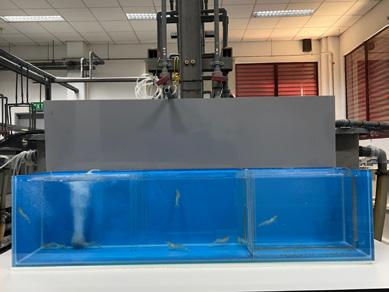 Figure 1. Attractability assay system depicting the system design and different chambers (left image: side view; right image: aerial view).
Figure 1. Attractability assay system depicting the system design and different chambers (left image: side view; right image: aerial view).
27 Feed Technology September/October 2023 AQUA Culture Asia Pacific
The two experimental feeds (formulated and manufactured by Sparos) had the same basal formulation as the control (Table 1), differing only on the attractant that was supplemented: 0.1% of Luctamax or 0.1% of DMPT bromide. Then, the feed odour was allowed to disperse through the system for 10 minutes, after which the removable divider was lifted, allowing shrimp access to the choice chambers.
The time taken for the first shrimp to begin feeding (“time to strike”) was recorded, in addition to the number of individuals in each chamber at 1, 2, 5, 10, and 15 minutes post partition removal. The test was repeated five times for each of the experimental diets, following complete system drainage and cleaning to ensure the total neutralisation of any lingering odours. Due to the non-normality of the data, Kruskal-Wallace nonparametric tests was carried out in SPSS v22.0.0.0, utilising a Conover-Iman post hoc analysis to determine if significant differences could be observed.
Preference and chemical attraction

When given a choice between the attractantsupplemented feed and the control feed (Figure 2), 71% of the shrimp chose the chamber containing the Luctamax treatment, significantly more (p<0.05) than the control (29%). In the case of DMPT vs control, the distribution of shrimp between the two chambers was 55%:45% (p>0.05).
Similarly, the average number of shrimp observed in each chamber over successive time points suggested (p>0.05) that the Luctamax-containing feed was more enticing, as more shrimp were consistently found in the chambers containing this feed from 2 mins after lifting the divider onwards (particularly at 5 and 10 mins; Figure 3).
Time to initiate feeding
The time taken for the first shrimp to approach and start feeding each diet was quite variable (Figure 4), which did not enable the detection of statistically significant differences (p=0.105). Nonetheless, on average, this time was more than halved in the Luctamax treatment compared to the control (86 vs 199 seconds, respectively), while the reduction in “time to strike” was much lower in the DMPT treatment (148 seconds). Moreover, the variability of the measurement (value of SE) was substantially reduced in the Luctamax treatment, indicating a more consistent feeding response.
Conclusion
Results from the present study indicate that it is possible to substantially improve the attractiveness of shrimp feeds using a concentrated palatability enhancer containing no ingredients of animal origin at a dosage as low as 1 kilogram per tonne of feed.
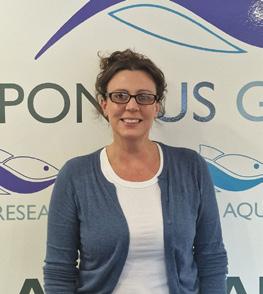
DMPT vs Control
the control and experimental diet is denoted by (*).
28
Feed Technology
Ingredients % Fishmeal 60 16.0 Squid liver meal 1.5 Poultry meal 11.0 Wheat gluten 2.0 Corn gluten meal 3.2 Soybean meal 44 32.0 Wheat meal 19.5 Wheat bran 5.4 Vitamin & Mineral Premix PV01 1.0 Choline chloride 60 0.2 Dicalcium phosphate 1.8 L-Lysine HCl 99% 0.1 Soy lecithin 3.0 Fish oil 1.0 Soybean oil 2.3 Composition Crude protein, % feed 40.0 Crude fat, % feed 9.1
basal
Table 1. Formulation and proximate composition of the
diet.
0% 10% 20% 30% 40% 50% 60% 70% 80% 90% 100% Luctamax
*
vs Control
% Distribution of shrimp
0 50 100 150 200 250 300 Control Luctamax DMPT Time (seconds)
Figure 2. Average percentage (%) distribution of shrimp observed within the choice chambers. Significant difference (p<0.05) observed between
0.0 0.5 1.0 1.5 2.0 2.5 3.0 3.5 4.0 1 2 5 10 15 Number of shrimp Time (minutes) Control Luctamax DMPT
Figure 4. Time to strike data presented as mean ± SE (p=0.105).
Figure 3. Number of shrimp observed in each feed chamber over successive timepoints. Data presented as mean ± SE (n=5). No significant differences were observed (p<0.05).
MSc, PhD, is the Innovation AQUA Team Leader at Lucta S.A., Spain. Email: sofia.morais@lucta.com
September/October 2023 AQUA Culture Asia Pacific
Nicola Pontefract, MSc, PhD, is the Research Scientist for Pontus Research Ltd, UK and Singapore. Email: nmp@pontusresearch.com

























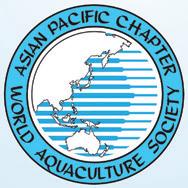
A multifunctional feed additive complex enhances shrimp growth and health
By Orapint Jintasataporn, Yann Lever and Nilo Nequinto
A multifunctional feed additive complex enhances shrimp growth and health
Supplementation of a multifunctional feed additive complex improved growth, nutrient utilisation, immune response and survival of shrimp while reducing Vibrio damage in tissues
Supplementation of a multifunctional feed additive complex improved growth, nutrient utilisation, immune response and survival of shrimp while reducing Vibrio damage in tissues
By Orapint Jintasataporn, Yann Lever and Nilo Nequinto
diseases such as vibriosis and acute hepatopancreatic necrosis disease (AHPND) continue to plague shrimp farms thereby limiting the productivity, sustainability and scalability of this global industry. First detected in China in 2009, AHPND has continued to spread to various countries in Asia and the Americas, resulting in reduced production and drastic economic losses to shrimp farmers.
The Pacific white shrimp or whiteleg shrimp Penaeus vannamei is the most produced farmed shrimp species with a world production of over 5.8 million tonnes in 2020 (FAO, 2022).
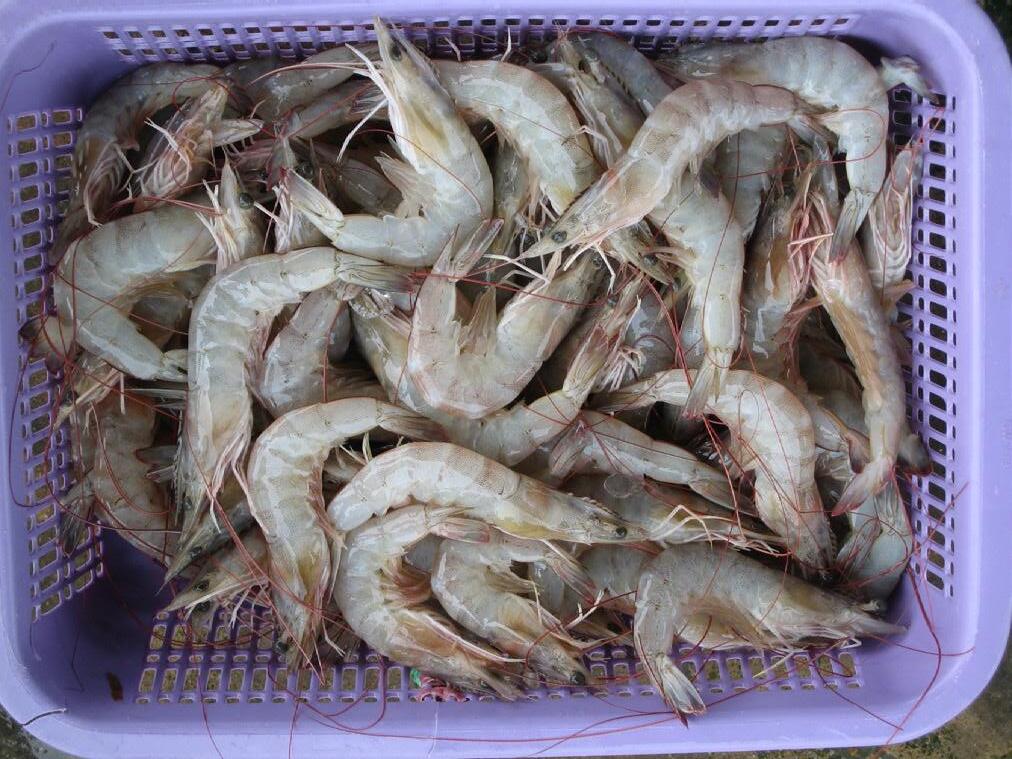
antioxidative and anti-bacterial properties, proven to improve gut development and integrity as well as boost immune system response in aquatic animals.
The intensification of shrimp culture systems has resulted in increased outbreaks of shrimp diseases. Bacterial diseases such as vibriosis and acute hepatopancreatic necrosis disease (AHPND) continue to plague shrimp farms thereby limiting the productivity, sustainability and scalability of this global industry. First detected in China in 2009, AHPND has continued to spread to various countries in Asia and the Americas, resulting in reduced production and drastic economic losses to shrimp farmers.
GAQP supplemented diets may help to enhance growth performance, improve nutrient utilisation, protect gut health as well as enhance shrimp resistance to diseases. It is conceived that by combining these various feed additives, the synergistic beneficial effects to the farmed shrimp will be greater than the total sum of the impact of each individual component. To this end, a feeding and disease challenge trial was conducted to evaluate the impact and efficacy of GAQP on the growth and health of the Pacific white shrimp, Penaeus vannamei.
Diseases caused by these Vibrio bacteria are often treated prophylactically and/or therapeutically using antibiotics which have often been misused and
Diseases caused by these Vibrio bacteria are often treated prophylactically and/or therapeutically using antibiotics which have often been misused and overused. Antibiotic-resistant Vibrio bacteria have been reported in shrimp farms resulting in environmental concerns as well as potential public health safety issues for seafood consumers. The current global regulatory trend is to ban the prophylactic use of antibiotics and restrict their use for disease treatment in aquaculture. Viable alternatives to harmful antibiotics in controlling bacterial diseases in shrimp farming are currently of great research and commercial interests.
Globamax AQ Pro™ (GAQP, Global Nutrition International, France) is a multifunctional feed additive complex comprising a proprietary combination of protected calcium butyrate, yeast-derived products and natural polyphenols. These collective bioactive compounds are known to have
Growth performance and digestive enzymes
There were three treatment diets; 0.2% GAQP diet supplemented with 2kg GAQP/tonne of feed, 0.35% GAQP with 3.5 kg/tonne of feed and control diet without addition of GAQP. Diets were formulated with base ingredients which included 38% soybean meal and 20% animal proteins consisting of fishmeal, squid meal and poultry by-product meal (7%, 3% and 10%, respectively). Other ingredients which included wheat flour, tuna oil, soybean oil, lecithin, vitamins and minerals contributed to the nutritionally balanced diet. All diets were isonitrogenous (38-39% crude protein) and iso-lipidic (6-6.5% crude lipid).
31 Feed Technology
Photo courtesy: WingKeong Ng.
September/October 2023 AQUA Culture Asia Pacific
At the start of the feeding trial, 30 shrimp (mean initial weight, 1g) were stocked in each 300L tank and randomly assigned one of the dietary treatments. There was seven replicates for all diets (n=7). Shrimp were fed 5-10% of their body weight three times daily for a duration of 8 weeks.
Water quality parameters were maintained at optimal levels throughout the culture period (water salinity, 15 ppt; dissolved oxygen, >5 ppm; temperature, 28-30 º C; pH, 7.5-8.3; NH3, <0.3 ppm; NO2-, <0.1ppm). The feeding trial was carried out at the Department of Aquaculture, Faculty of Fisheries, Kasetsart University, Thailand.
All surviving shrimp were batch-weighed every 2 weeks to monitor growth performance and the production parameters calculated. At the end of the feeding trial, digestive enzyme activities were measured.
Growth performance
Amylase activity increased in the gut of white shrimp fed GAQP-added diets which was significant at the 0.2% dosage (Table 1). All other digestive enzymes showed quantitative increase in activity but were not significantly different (P>0.05) compared to shrimp in the control group.
Supplementation of GAQP significantly (P<0.05) enhanced growth performance, even after a short duration of 2 weeks (Figure 1). An increased shrimp production of about 13% was estimated based on the biomass of shrimp obtained after 8 weeks of feeding. Shrimp fed supplemented diets showed an average survival of 88-89% compared to the control group with a survival of 84% (P=0.06). Feed conversion ratio (FCR) significantly improved in shrimp fed the supplemented diets, irrespective of dosage (Figure 2).
Growth performance

Supplementation of GAQP significantly (P<0.05) enhanced growth performance, even after a short duration of 2 weeks (Figure 1). An increased shrimp production of about 13% was estimated based on the biomass of shrimp obtained after 8 weeks of feeding. Shrimp fed supplemented diets showed an average survival of 88-89% compared to the control group with a survival of 84% (P=0.06). Feed conversion ratio (FCR) significantly improved in shrimp fed the supplemented diets, irrespective of dosage (Figure 2).
Table 1. Endogenous digestive enzyme activity in the gut of Pacific white shrimp Penaeus vannamei fed diets supplemented with Globamax AQ Pro for eight weeks.
AHPND challenge test and Vibrio counts
Figure 1. The beneficial effect of Globamax AQ Pro supplementation on growth performance and production of Pacific white shrimp Penaeus vannamei. Different letters indicate significant difference among groups (ANOVA followed by Duncan’s Multiple Range test, P<0.05).
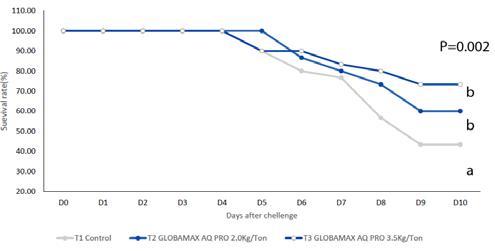
Figure 2. The beneficial effect of Globamax AQ Pro supplementation on feed conversion ratio (FCR) of Pacific white shrimp Penaeus vannamei. Different letters indicate significant differences among groups (ANOVA followed by Duncan’s Multiple Range test, P <0.05).
Table 1. Endogenous digestive enzyme activity in the gut of Pacific white shrimp Penaeus vannamei fed diets supplemented with Globamax AQ Pro- for eight weeks.
AHPND challenge test and Vibrio counts
After 6 weeks of the feeding trial, three replicates from each treatment group were challenged with Vibrio parahaemolyticus (AHPND strain) with the remaining replicates serving as negative control. Shrimp were immersed in a bath treatment of V. parahaemolyticus at a concentration of 2.4 x10 6 CFU/mL. Shrimp mortality was then monitored for 10 days. Before and after the disease challenge, Vibrio count in the hepatopancreas and intestine were determined. After the disease challenge, Vibrio count in the shrimp haemolymph was also analysed.
After 6 weeks of the feeding trial, three replicates from each treatment group were challenged with Vibrio parahaemolyticus (AHPND strain) with the remaining replicates serving as negative control. Shrimp were immersed in a bath treatment of V. parahaemolyticus at a concentration of 2.4 x106 CFU/mL Shrimp mortality was then monitored for 10 days. Before and after the disease challenge, Vibrio count in the hepatopancreas and intestine were determined. After the disease challenge, Vibrio count in the shrimp haemolymph was also analysed.
Shrimp fed diets either with 0.2% or 0.35% GAQP had significantly higher survival than the positive control group (Figure 3) Shrimp survival increased from 43% in the control challenged group to 73% in shrimp fed the 0.35% treatment diet Both groups fed supplemented diets did not differ statistically.
Shrimp fed diets either with 0.2% or 0.35% GAQP had significantly higher survival than the positive control group (Figure 3). Shrimp survival increased from 43% in the control challenged group to 73% in shrimp fed the 0.35% treatment diet. Both groups fed supplemented diets did not differ statistically.
Figure 3. Survival of Pacific white shrimp Penaeus vannamei fed Globamax AQ Pro-added diets and challenged with AHPNDcausing bacteria, after a feeding trial period of 6 weeks. Different letters indicate significant difference among groups.
Figure 2. The beneficial effect of Globamax AQ Pro supplementation on feed conversion ratio (FCR) of Pacific white shrimp Penaeus vannamei Different letters indicate significant differences among groups (ANOVA followed by Duncan’s Multiple Range test, P <0.05).
32
Feed Technology
46 85 139 193 255 46 94 151 214 289 46 95 148 210 289 0 50 100 150 200 250 300 Week 1 Week 2 Week 4 Week 6 Week 8 Production (g/tank) Titre du graphique Control GLOBAMX AQ PRO 2.0kg/tonne GLOBAMAX AQ PRO 3.5kg/tonne +7% +8% +11% +10% +8% +10% a a ab b b b a b ab b a b
Figure 1. The beneficial effect of Globamax AQ Pro supplementation on growth performance and production of Pacific white shrimp Penaeus vannamei Different letters indicate significant difference among groups (ANOVA followed by Duncan’s Multiple Range test, P<0.05).
1.36 1.25 1.31 1.46 1.14 1.13 1.17 1.27 1.11 1.16 1.2 1.27 1 1.25 1.5 1.75 2 Week 2 Week 4 Week 6 Week 8 Feed Conversion Ra3o Titre du graphique Control AQ PRO 2.0kg AQ PRO 3.5kg a a b ab b ab a b b -16% -18% -10% -7% -11% -8% -13% a b b a b ab b b a
Enzyme Control GLOBAMAX AQ PRO 2.0 kg/tonne GLOBAMAX AQ PRO 3.0 kg/tonne p-value Trypsin (unit/g tissue) 7.02 7.16 7.33 0.8272 Chymotrypsin (unit/g tissue) 8.52 9.09 8.94 0.8105 Amylase (unit/g tissue) 76.85 (a) 115.65(b) 94.66 (a) 0.001082** Lipase (unit/g tissue) 1 1.31 1.15 0.1337 Protease (unit/g tissue) 29.16 33.04 33.53 0.4059
September/October 2023 AQUA Culture Asia Pacific
Figure 3. Survival of Pacific white shrimp Penaeus vannamei fed Globamax AQ Pro-added diets and challenged with AHPND-causing bacteria, after a feeding trial period of 6 weeks Different letters indicate significant difference among groups.
The presumptive Vibro counts of the hepatopancreas and intestine from shrimp fed supplemented diets were mostly significantly lower compared to the control group (Figure 4) After the disease challenge with AHPND, the Vibrio count in the haemolymph, hepatopancreas and intestine were significantly lower in shrimp fed diets with 0.35% supplementation which may beneficially modulate the bacterial population in these shrimp tissues
The presumptive Vibro counts of the hepatopancreas and intestine from shrimp fed supplemented diets were mostly significantly lower compared to the control group (Figure 4). After the disease challenge with AHPND, the Vibrio count in the haemolymph, hepatopancreas and intestine were significantly lower in shrimp fed diets with 0.35% supplementation which may beneficially modulate the bacterial population in these shrimp tissues.
Immune response and tissue histology
Immune parameters were measured before and after the disease challenge At the end of the feeding trial, the hepatopancreas and intestine were dissected for histopathological analysis Tissues were fixed in 10% buffered formalin, embedded in paraffin wax, 4-µm serial sections performed and stained with haematoxylin and eosin before observation under the light microscope. Morphometric measurements of the intestinal villi height were also conducted
Immune response and tissue histology
Immune parameters were measured before and after the disease challenge. At the end of the feeding trial, the hepatopancreas and intestine were dissected for histopathological analysis. Tissues were fixed in 10% buffered formalin, embedded in paraffin wax, 4- µ m serial sections performed and stained with haematoxylin and eosin before observation under the light microscope. Morphometric measurements of the intestinal villi height were also conducted.
Immune response indicators such as haemolymph protein and lysozyme activity were significantly increased in shrimp fed treatment diets, irrespective of dosage (Figure 5). Antioxidant enzymes such as superoxide dismutase which also play a role in aquatic animal health defenses were also significantly increased with GAQP supplementation. Haemocyte count, phenoloxidase and glutathione activities were not significantly different among the two dietary treatment groups. After disease challenge, haemocyte count, haemolymph protein and phenoloxidase activity were not significantly different among the treatment groups (data not shown).
Immune response indicators such as haemolymph protein and lysozyme activity were significantly increased in shrimp fed treatment diets, irrespective of dosage (Figure 5). Antioxidant enzymes such as superoxide dismutase which also play a role in aquatic animal health defenses were also significantly increased with GAQP supplementation. Haemocyte count, phenoloxidase and glutathione activities were not significantly different among the two dietary treatment groups. After disease challenge, haemocyte count, haemolymph protein and phenoloxidase activity were not significantly different among the treatment groups (data not shown).


Representative light micrograph of the hepatopancreas and intestine of white
fed 0.2% GAQP for 8 weeks
33 Feed Technology
Figure 4. Vibrio count in the hepatopancreas, intestine and haemolymph of Penaeus vannamei fed Globamax AQ Pro supplemented diets before and after being challenged with AHPND-causing bacteria. Histogram bars of the same colour with different letters are significantly different (P <0.05).
Figure 4. Vibrio count in the hepatopancreas, intestine and haemolymph of Penaeus vannamei fed Globamax AQ Pro supplemented diets before and after being challenged with AHPND-causing bacteria. Histogram bars of the same colour with different letters are significantly different (P <0.05)
1.88 2.63 1.4 4.61 4.51 0.78 1.57 1.23 4.56 4.18 0.87 2.21 0.63 3.25 3.49 0 0.5 1 1.5 2 2.5 3 3.5 4 4.5 5 Before Challenge Hepatopancreas Before Challenge Intestinal After Challenge Hematocyte After Challenge Hepatopancreas After Challenge Intestinal Vibrio count log CFU/mL Control GLOBAMX AQ PRO 2.0kg/T GLOBAMAX AQ PRO 3.5kg/T a b a ab b a
Figure 5. Immune response of Penaeus vannamei fed Globamax AQ Pro-added diets for 6 weeks and before disease challenge. Different letters indicated significant differences among treatments. THC= total haemocyte count, HPro = Haemolymph protein; PO= phenoloxidase activity; LZ= lysozyme activity; SOD= superoxide dismutase; Gluta= glutathione activity.
Figure 5. Immune response of Penaeus vannamei fed Globamax AQ Pro-added diets for 6 weeks and before disease challenge. Different letters indicated significant differences among treatments. THC= total haemocyte count, HPro = Haemolymph protein; PO= phenoloxidase activity; LZ= lysozyme activity; SOD= superoxide dismutase (SOD); Glutan= glutathione activity
THC (10 cell/ml) PO(10 unit/min/mg Protein) PO(10 unit/min/mg Protein) LZ(10 unit/ml SOD(unit/ml) Gluta(nMole/ml) HPro (g/dL) September/October 2023 AQUA Culture Asia Pacific
shrimp
under normal condition is presented in Figure 6. The histopathology of these tissues in shrimp fed the 0.35% treatment diet was similar (data not shown). Intestinal villi in shrimp fed supplemented feeds were markedly longer and had more folds compared to the control group. Intestinal villi length ranged from 154.8-255.1µm and 105.4-267.0µm in shrimp
Representative light micrographs of the hepatopancreas and intestine of white shrimp fed 0.2% GAQP for 8 weeks under normal condition are presented in Figure 6. The histopathology of these tissues in shrimp fed the 0.35% treatment diet was similar (data not shown). Intestinal villi in shrimp fed supplemented feeds were markedly longer and had more folds compared to the control group. Intestinal villi length ranged from 154.8-255.1µm and 105.4-267.0µm in shrimp fed 0.2% or 0.35% GAQP, respectively, compared to 19.3-45.1µm in shrimp fed the control diet.
The addition of this feed additive complex in shrimp diets seemed to offer protective properties against intestinal villi shortening which might have occurred due to antinutritional factors from the high soybean meal diet used in this study. The additive might have partly contributed to the enhanced ability of shrimp to digest and absorb nutrients which ultimately improved feed utilisation.
Benefits of supplementation
Shrimp fed diets supplemented with GAQP at both doses were observed to have better growth performance and FCR. By protecting the hepatopancreas and intestine from Vibrio infections and maintaining its structural integrity from damage by antinutrients from plant-based ingredients, this feed additive complex ensures that these organs function optimally in the digestion and assimilation of nutrients, thereby ensuring healthy shrimp growth. An increase in amylase activity in shrimp fed supplemented diets was also observed in the present study.
In the present study, by supplementing GAQP in shrimp diets, we showed the improvement in immune response and the subsequent increased survival of shrimp during
Figure 6. Representative histopathological morphology of the (A) hepatopancreas and (B) intestine of Penaeus vannamei fed 0.2% Globamax AQ Pro after 8 weeks. Both tissues showed normal appearance of the hepatopancreas and intestinal villi structures.

an AHPND infection. Some anti-bacterial activities were demonstrated with a lower Vibrio count in the hepatopancreas, intestine and haemolymph of shrimp. This could in part also explain the better survival of shrimp fed treatment diets during the disease challenge trial.
In conclusion, Globamax AQ Pro is a multifunctional synergistic complex that combines the gut development and bacterial inhibitory effects of protected calcium butyrate. The gut protective and cellular antioxidant effects of natural polyphenols along with the enhanced stress-coping capabilities was also demonstrated. The immunity-enhancing effects of organic selenium and yeast polysaccharides elicited optimised growth and health of farmed shrimp without the use of antibiotics.
November/December 2023
Issue focus: Health and Disease Management
Industry Review: Catfish and Freshwater Fish
Feed/Production Technology: Feed Enzymes, Post Harvest Processing
Deadlines: Articles/Adverts – September 20
Orapint Jintasataporn, Ph.D is professor at the Department of Aquaculture, Faculty of Fisheries, Kasetsart University, Thailand.
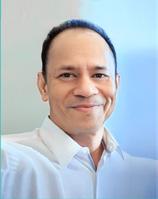
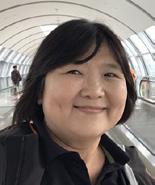
Yann Lever is Technical Manager, Global Nutrition International, France.

Nilo Nequinto, Asia-Pacific Director, Global Nutrition International, France.
Email: nilo.nequinto@globalnutrition.com
January/February 2024
Issue focus: Nursery & Hatchery
Industry Review: Marine Shrimp
Feed/Production Technology: Functional Feeds/Additives/ Controlled Systems
Deadlines: Articles/Adverts – November 15, 2023
Email: zuridah@aquaasiapac.com/enquiries@aquaasiapac.com
34 Feed Technology
September/October 2023 AQUA Culture Asia Pacific
Unleashing shrimp resilience: The power of organic trace minerals
The important role of organic trace minerals in bolstering shrimp immunity
By Henry Wong and Will Lin
In the aquaculture industry, disease remains a relentless adversary, inflicting substantial losses and raising concerns on the sustainability of shrimp farming. To combat this, a diverse range of health and immunostimulant products are available in the market, each vying to fortify shrimp health and bolster immune functions. Amidst a sea of advice advocating for enhanced biosecurity measures, advanced water management techniques and prudent pond management practices, it is imperative that we revisit the very foundation of shrimp nutrition which has a role in shrimp immune functions.
As the industry grapples with this challenge, a vital yet often overlooked aspect comes to the fore: the role of organic trace minerals in bolstering shrimp immunity. Shrimp aquaculture has witnessed the rise of various strategies to combat diseases, but the potential of trace minerals such as zinc, copper, and selenium remains underexplored with promising implications.
Trace minerals play pivotal roles in cellular metabolism, the construction of skeletal structures, the preservation of colloidal systems, the equilibrium of acid-base levels, as well as functions encompassing immunity enhancement, stress mitigation, disease resilience and various other physiological operations. Furthermore, they emerge as integral components within hormones and enzymes, effectively serving as cofactors or activators for a spectrum of enzymatic reactions.
Traditionally, the sources of dietary minerals for supplementation in aquaculture have been predominantly inorganic forms, often manifested as salts such as zinc sulphate or copper sulphate. This preference arises from the low cost and ready availability of these inorganic forms. However, a downside to inorganic trace minerals has emerged, marked by low bioavailability, active reaction with feed components and potential adverse environmental impacts. Compounding this, the use of
plant-based ingredients, now very common in aquafeeds, introduces antinutritional factors that can further hamper mineral bioavailability.
Organic trace mineral technology
In response to these limitations, a significant paradigm shift has unfolded in the pursuit of improved bioavailability and environmental sustainability with organic trace mineral technology. Often referred to as mineral chelates or proteinates, these organic forms are typically created by complexing or chelating elements like copper, iron or zinc with peptide or amino acid ligands.
This transformative process not only enhances mineral bioavailability but also confers stability within biological systems, unlocking new dimensions of effectiveness and efficiency. One standout solution that embodies this organic mineral technology is Alltech’s Total Replacement Technology (TRT). This revolutionary approach showed the feasibility of replacing substantial doses of inorganic trace minerals with minimal quantities of their organic counterparts, while yielding improved performance outcomes. Alltech’s pioneering Bioplex® and Sel-Plex® formulations of organic trace minerals have been proven to enhance animal performance even at lower inclusion levels.
Organic minerals and fish meal inclusion: Shrimp immunity insights
A compelling study, conducted in Ecuador, delved into the interplay of fishmeal inclusion rates and organic trace mineral effects on shrimp immunity (Reves et al., 2018). The study had shrimp fed diets with different inclusion rates (0%, 50%, 100%, with the 100% group reflecting an actual 15% fishmeal content per kg of feed) and the type and dosage of trace mineral supplementation. The trace minerals were administered in two forms: organic mineral proteinate (Bioplex) and selenium yeast (Sel-Plex), alongside inorganic sources at varying levels of inclusion (50% and 100% each).
Treatment FM IM OM Total Haemocyte Count Phenoloxidase Plasma protein A 0 100 0 21,000,000ab 45,000b 85,762b B 0 0 100 19,600,000ab 50,667b 100,640ab C 0 0 50 22,000,000a 50,000b 92,290ab D 50 100 0 20,200,000ab 66,333ab 88,650ab E 50 0 100 16,200,000b 49,667b 95,168ab F 50 0 50 19,000,000ab 58,333ab 98,688ab G 100 100 0 19,800,000ab 51,333b 89,710ab H 100 0 100 23,300,000a 57,000ab 114,620a I 100 0 50 18,900,000ab 93,000a 100,220ab
35 Feed Technology September/October 2023 AQUA Culture Asia Pacific
Table 1. Haematological and immunological parameters with varying levels of fishmeal (FM) and varying levels and sources of trace mineral supplementation
(IM;
inorganic minerals, OM; organic minerals)
increased abundance of potentially beneficial bacteria and reduced levels of potentially harmful bacteria, suggesting a potential link between microbiome diversity and shrimp health and immunity."
Results unveiled that shrimp receiving 100% Bioplex and Sel-Plex alongside 100% fishmeal attained the highest immunological parameters, including total haemocyte count and plasma protein levels. Moreover, the response rate in phenoloxidase was most pronounced when shrimp were supplemented with 50% Bioplex and Sel-Plex alongside 100% fishmeal. Conversely, shrimp fed 100% inorganic minerals and 0% fishmeal exhibited the lowest phenoloxidase activity and plasma protein levels. This study affirmed the impact of organic trace minerals on shrimp immune functions, even with lower fishmeal content in the shrimp diet.
Organic zinc and shrimp immunity
Zinc is widely recognised for its essential role in various physiological processes, including growth of the animal and the metabolism of proteins, carbohydrates and lipids. However, its contribution to immune function should not be underestimated. Zinc serves as a critical cofactor and component in a range of enzymes vital for antioxidant mechanisms and immune responses.
These enzymes include alkaline phosphatase (AKP), metallothionein (MT), superoxide dismutase (SOD), and copper/zinc superoxide dismutase (Cu/Zn SOD).
A recent study conducted by China Ocean University sheds light on the influence of different zinc forms on biological systems (Yang et al., 2022). The study reveals that lower levels of organic zinc in the diet (60ppm, 90ppm) are more effective in enhancing the antioxidant capacity of shrimp plasma and hepatopancreas compared to higher doses of inorganic zinc (120ppm). This enhancement is evident through increased activities of key enzymes like total superoxide dismutase (T-SOD), Cu/Zn SOD, catalase (CAT), and total antioxidant capacity (T-AOC, Figure 1)
120ppm; O30-O120-organic zinc- 30,60,90 and 120ppm) Source: Yang et al., 2022
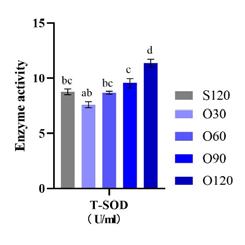
Figure 1.
zinc on antioxidant capacity of Litopenaeus
. (A) enzyme activities of plasma; (B) enzyme activities of hepatopancreas. (S120-inorganic zinc 120ppm; O30-O120-organic zinc30,60,90 and 120ppm).Source: Yang et al., 2022.
Moreover, the significant role of zinc in shrimp immune response is well-established. Notably, the same study highlights the positive modulation of the immune system with organic zinc at significant lower levels than inorganic zinc, as evidenced by heightened activities of acid phosphatase, pro-phenoloxidase, lysozyme, haemocyanin immunity-related gene expressions of hepatopancreas (Figure 2). Furthermore, organic zinc not only improves shrimp immunity but also induces favourable changes in the intestinal microbiota community, characterised by increased abundance of potentially beneficial bacteria and reduced levels of potentially harmful bacteria, suggesting a potential link between microbiome diversity and shrimp health and immunity.

Organic copper and shrimp immunity
Copper represents a vital trace element for shrimp as it has a pivotal role as an indispensable component of haemocyanin, which governs oxygen transportation in crustaceans. This trace mineral serves as a crucial cofactor or constituent within a range of enzymes with integral roles in numerous significant physiological processes including immune functions. These include cytochrome c oxidase, responsible for ATP production; ferroxidase, vital for maintaining iron metabolism equilibrium; tyrosine oxidase, facilitating the synthesis of melanin from tyrosine; lysyl oxidase, contributing to collagen synthesis; and Cu/Zn SOD, participating in antioxidant reactions.
A recent study sought to assess the effects of dietary copper source and level on haematological parameters, antioxidant capacity and immune response of white shrimp (Yang et al., 2023). An 8-week feeding trial was conducted, revealing that copper concentrations in plasma and muscle, along with gene expression of metallothionein and copper-transporting ATPase 2-like in hepatopancreas, were higher in shrimp fed organic copper (Figure 3). Organic copper substantially enhanced antioxidant capacity, manifested as higher activities of T-SOD, Cu/Zn SOD, CAT, glutathione peroxidase (Gpx) and T-AOC, coupled with lower plasma malondialdehyde concentration (MDA, Figure 4).
Additionally, gene expressions of key enzymes such as SOD, Cu/Zn SOD, CAT and Gpx within hepatopancreas were upregulated (Figure 5). The immune response was equally bolstered, evident through higher total haemocyte count, augmented activities of acid phosphatase, alkaline phosphatase, phenoloxidase, haemocyanin, and lysozyme in plasma and heightened gene expressions of alkaline phosphatase, lysozyme, and haemocyanin within hepatopancreas. These findings underscore the significant role that copper can play in bolstering the immune functions within shrimp.

Organic Copper and shrimp immunity
Copper represents a vital trace element for shrimp as it has a pivotal role as an indispensable component of haemocyanin, which governs oxygen transporta2on in crustaceans. This trace mineral serves as a crucial cofactor or cons2tuent within a range of enzymes with integral roles in numerous significant physiological processes including immune func2ons. These include
36 Feed Technology
A
Figure 1 Effects of organic and inorganic zinc on an2oxidant capacity of Litopenaeus vannamei (A) enzyme ac2vi2es of plasma; (B) enzyme ac2vi2es of hepatopancreas. (S120-inorganic zinc
B
Effects of organic and inorganic
vannamei
Figure 2 Effects of organic and inorganic zinc on immunity of Litopenaeus vannameiaand gene expressions of hepatopancreas. (ACP, acid phosphatase; LZM: lysozyme; ProPO,prophenoloxidase; Hemo, haemocyanin) Source: Yang et al., 2022
Figure 2. Effects of organic and inorganic zinc on immunity of Litopenaeus vannamei and gene expressions of hepatopancreas. (ACP, acid phosphatase; LZM: lysozyme; ProPO,prophenoloxidase; Hemo, haemocyanin). Source: Yang et al., 2022.
September/October 2023 AQUA Culture Asia Pacific
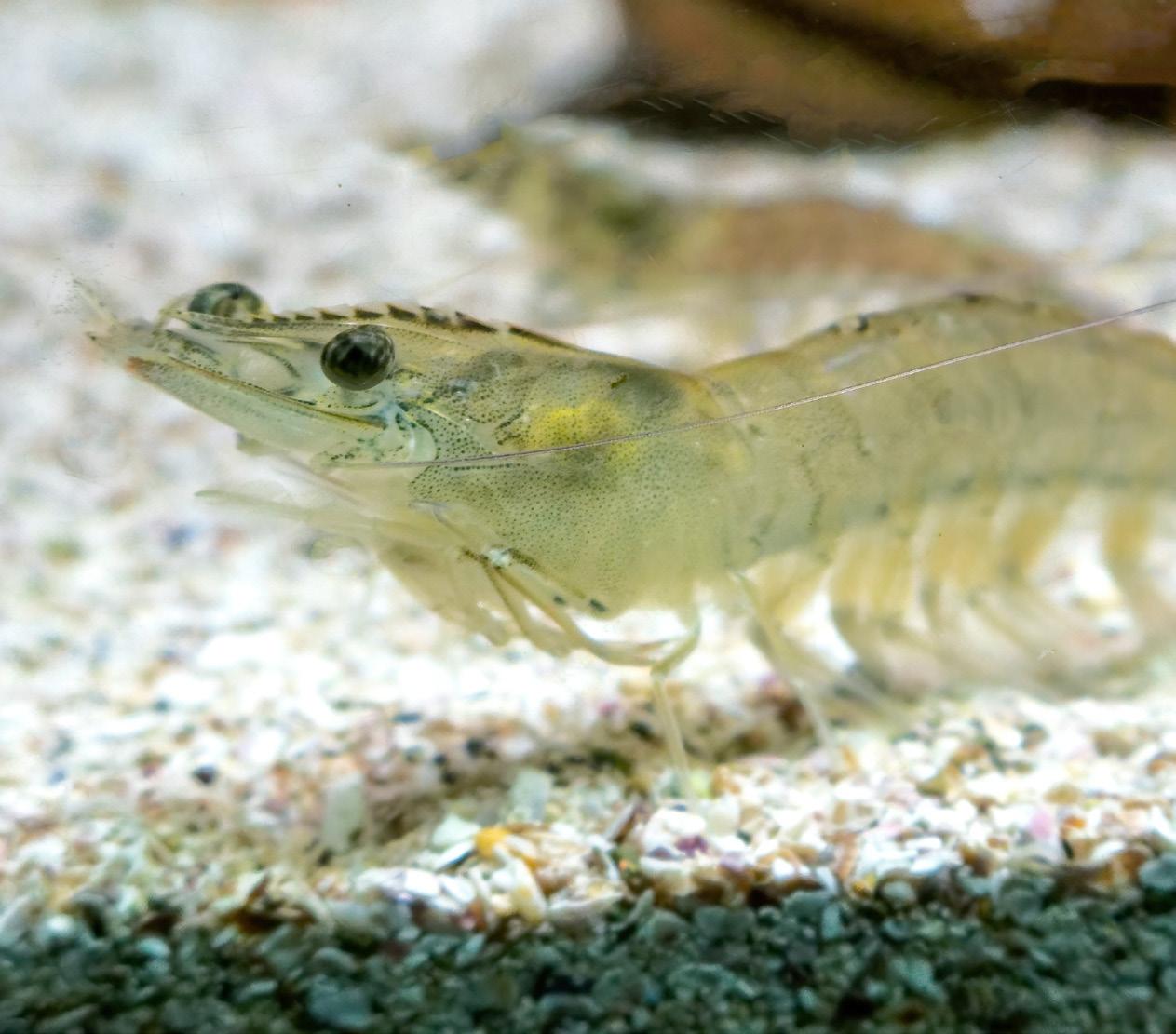
minerals could offer more with less? What if Alltech Mineral Management program provides natural nutritional solutions to meet the challenges of aquaculture and achieve the best animal production, health, performance, and profitability. A highly efficient mineral diet The ability to feed minerals at lower rates Opportunity to better health and performance Quality and traceability Mineral excretion reduction Contact your local Alltech representative or email knowyourminerals@alltech.com to learn more about Alltech Mineral Management and TRT.
total haemocyte count, augmented ac2vi2es of acid phosphatase, alkaline phosphatase, phenoloxidase, haemocyanin, and lysozyme in plasma and heightened gene expressions of alkaline phosphatase, lysozyme, and haemocyanin within hepatopancreas. These findings underscore the significant role that copper can play in bolstering the immune func2ons within shrimp.
Figure Effects of organic and inorganic copper on muscle and plasma copper accumula2on (A) and copper transport related gene expression in hepatopancreas of white shrimp (B). MT: metallothionein; ATP7b like: copper transpor2ng ATPase 2 like. S-30 ppm inorganic copper; O1, O2, O3 and O4 are pper in 10, 20, 30 and 40ppm respec2vely. Source: Yang et al., 2023
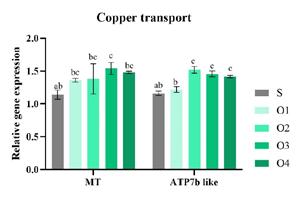
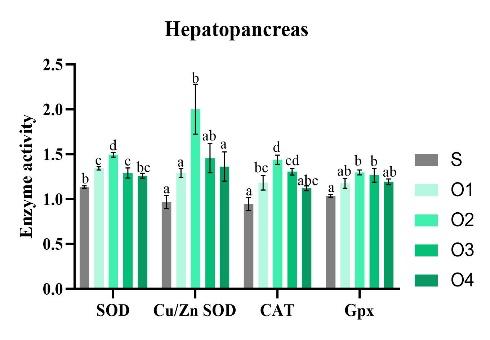
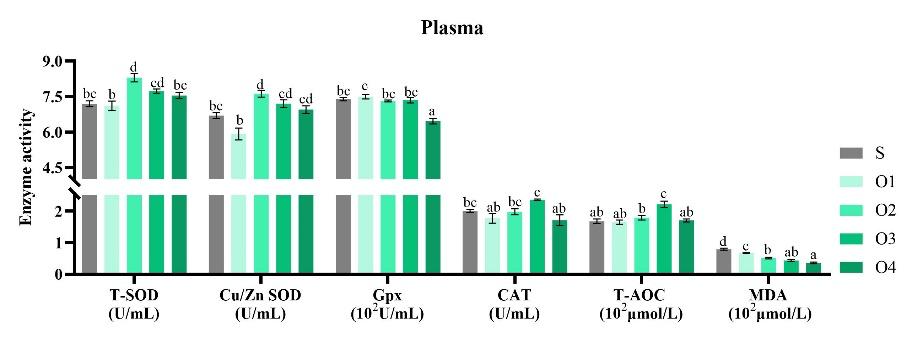
Figure 3. Effects of organic and inorganic copper on muscle and plasma copper accumulation (A) and copper transport related gene expression in hepatopancreas of white shrimp (B). MT: metallothionein; ATP7b like: copper-transporting ATPase 2 like. S-30 ppm inorganic copper; O1, O2, O3 and O4 are organic copper in 10, 20, 30 and 40ppm respectively. Source: Yang et al., 2023.
transport related gene expression
white shrimp (B). MT: metallothionein; ATP7b like: copper-transpor2ng ATPase 2 like. S-30 ppm inorganic copper; O1, O2, O3 and O4 are organic copper in 10, 20, 30 and 40ppm respec2vely. Source: Yang et al., 2023
Figure 4. Effects of organic and inorganic copper on an2oxidant capacity of white shrimp. (A) enzyme ac2vi2es of plasma; (B) gene expressions of hepatopancreas. Source: Yang et al., 2023
Selenium yeast and shrimp immunity
Figure 4. Effects of organic and inorganic copper on an2oxidant capacity of white shrimp. (A) enzyme ac2vi2es of plasma; (B) gene expressions of hepatopancreas. Source: Yang et al., 2023
exhibited a significant survival rate of 55% after 12 days post-WSSV challenge, while the control diet showed zero survival rate (Figure 6).
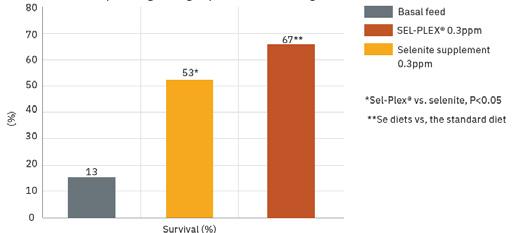
Selenium yeast and shrimp immunity
Selenium yeast and shrimp immunity
Selenium, a pivotal trace mineral, fortifies shrimp immune systems through its indispensable role in selenoproteins— critical proteins that counteract oxidative stress by neutralising deleterious free radicals and reactive oxygen species. This antioxidant function safeguards immune cell integrity, optimising their efficacy in mounting responses. Organic selenium forms, such as selenium yeast, exhibit heightened bioavailability and efficacy, further reinforcing shrimp immunity and safeguarding their health and disease resistance. Several studies have investigated how selenium yeast promotes viral shrimp disease resistance. Sritunyalucksan et al. (2011) conducted research where shrimp were fed diets containing no added Se or an additional 0.3ppm Se in the form of inorganic Se (selenite) or organic Se (Sel-Plex.) over a 5-week period.
Selenium, a pivotal trace mineral, for2fies shrimp immune systems through its indispensable role in selenoproteins cri2cal proteins that counteract oxida2ve stress by neutralising
Selenium, a pivotal trace mineral, for2fies shrimp immune systems through its indispensable role in selenoproteins cri2cal proteins that counteract oxida2ve stress by neutralising
deleterious free radicals and reac2ve oxygen species. This an2oxidant f immune cell integrity, op2mising their efficacy in moun2ng responses. Organic selenium forms, such as selenium yeast, exhibit heightened bioavailability and efficacy, further reinforcing shrimp immunity and safeguarding their health and disease resistance. Several studies have inves2gated how selenium yeast promotes viral shrimp disease resistance. (2011) conducted research where shrimp were fed diets containing no added Se or an addi2onal 0.3ppm Se in the form of inorganic Se (selenite) or organic Se (Sel week period.
The study concluded with a Taura syndrome virus (TSV) challenge trial to evaluate disease resistance and impact through haemocyte numbers, RT-PCR, and survival rate. Similar to trials in other species, organic Se from Sel-Plex improved growth, haemocyte numbers and survival ader TSV challenge, while inorganic Se improved survival to a lesser extent but had no impact on growth or haemocyte counts (Figure 5). Gill histology and RT-PCR confirmed reduced disease severity in the Sel-Plex Se group.
Giang and Hung (2015) conducted a 6-week feeding trial inves2ga2ng the effects of selenium yeast on white shrimp disease resistance ader a white spot syndrome virus (WSSV) challenge.
Shrimp fed with 0.3ppm selenium yeast exhibited a significant survival rate of 55% ader 12 days post-WSSV challenge, while the control diet showed zero survival rate (Figure 6)
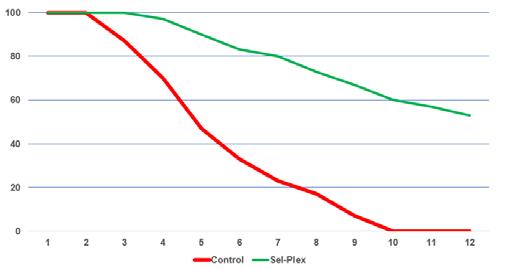
The study concluded with a Taura syndrome virus (TSV) challenge trial to evaluate disease resistance and impact through haemocyte numbers, RT-PCR, and survival rate. Similar to trials in other species, organic Se from Sel-Plex improved growth, haemocyte numbers and survival after TSV challenge, while inorganic Se improved survival to a lesser extent but had no impact on growth or haemocyte counts (Figure 5). Gill histology and RT-PCR confirmed reduced disease severity in the Sel-Plex Se group.
Giang and Hung (2015) conducted a 6-week feeding trial investigating the effects of selenium yeast on white shrimp disease resistance after a white spot syndrome virus (WSSV) challenge. Shrimp fed with 0.3ppm selenium yeast
Undoubtedly, the u2lisa2on of organic trace minerals specifically zinc, copper, has been resoundingly proven to be a game-changer when it comes to enhancing prowess of shrimp, especially in the face of mul2farious challenges such as an2 in plant-based raw material, reduc2on of fishmeal inclusion, environmental stress, challenges, viral threats, and more, as enumerated above. These findings underscore revela2on: organic trace minerals are not just complementary addi2ves but they veritable defenders of shrimp health in the ever-evolving landscape of aquaculture. -end-
Dr Henry Wong is Commercial Development Director -Asia Aquaculture, Alltech.
Undoubtedly, the utilisation of organic trace minerals— specifically zinc, copper, and selenium—has been resoundingly proven to be a game-changer when it comes to enhancing the immune prowess of shrimp, especially in the face of multifarious challenges such as anti-nutrition factors in plant-based raw material, reduction of fishmeal inclusion, environmental stress, bacterial challenges, viral threats, and more, as discussed above. These findings underscore a pivotal revelation: organic trace minerals are not just complementary additives but they stand as veritable defenders of shrimp health in the ever-evolving landscape of aquaculture.
Dr Will Lin is Research and Technical Director, Alltech Greater China

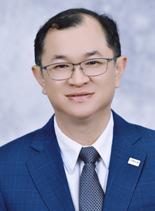
Yang J, Wang T, Lin G, Li M, Zhang Y, Mai K. The Assessment of Dietary Organic Homeostasis, Antioxidant Capacity, Immune Response, Glycolysis and Intestinal White Shrimp (Litopenaeus vannamei Boone, 1931). Antioxidants. 2022; 11(8):1492. https://doi.org/10.3390/antiox11081492
Jinzhu Yang, Zhonghao Zhang, Gang Lin, Mingzhu Li, Yanjiao Zhang, Kangsen Mai, Organic copper promoted copper accumula2on and transport, enhanced low tolerance and physiological health of white shrimp (Litopenaeus vannamei Boone, Fish & Shellfish Immunology, Volume 132, 2023, 108459, hnps://doi.org/10.1016/j.fsi.2022.108459
doi: 10.2306/scienceasia1513-1874.2011.37.024
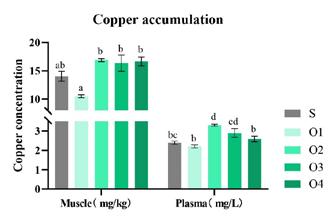
38 Feed Technology
Figure 5. Organic selenium 0.3ppm as Sel-Plex® promoted the survival rate ader TSV challenge Source: Sritunyalucksan et al, 2011.
Figure 5. Organic selenium 0.3ppm as Sel-Plex® promoted the survival rate after TSV challenge. Source: Sritunyalucksan et al, 2011.
Figure 6 Sel-Plex promoted the survival rate ader 12 days -WSSV challenge. Source: Hung, 2015.
-end
Figure 6. Sel-Plex promoted the survival rate after 12 days -WSSV challenge. Source: Giang and Hung, 2015.
Dr Henry Wong is Commercial Development Director -Asia Aquaculture, Alltech.
Dr Will Lin is Research and Technical Director, Alltech Greater China
A
B A B
A B
Figure 4. Effects of organic and inorganic copper on antioxidant capacity of white shrimp. (A) enzyme activities of plasma; (B) gene expressions of hepatopancreas. Source: Yang et al., 2023
Figure 3. Effects of organic and inorganic copper on muscle and plasma copper accumula2on (A) and copper
in hepatopancreas of
A B A B
A B September/October 2023 AQUA Culture Asia Pacific
You can only improve what you measure!
A mandatory step before releasing a new dietary solution to the aquafeed market is running tests to control and improve the performance of products
By Mikael Herault, Clément Martineau, Dachawat Poonnual and Freddy Balbi
In the aquafeed industry, more and more stakeholders own their testing facilities to control and improve the performance of their products and customize them to various species, growth stages and rearing environments.

Historically, most large aquafeed manufacturers owned in-house testing facilities to develop and assess, dietary tailor-made formulations meeting the nutritional requirements of various aquaculture species, and their specific growth stages. More recently, they started to develop feed ranges dedicated to rearing environments (RAS farms) or environmental challenges (summertime or wintering). Today, even medium-size and small aquafeed manufacturers have setup their own facilities to optimise their testing capacities, operational costs and control over the methods and results.
With regards to feed additive suppliers, in many cases, they will rely on studies implemented on terrestrial mammals to promote their products to the aquaculture industry. Most committed ones will contract public institutions, such as universities, or private CROs (contract research organisations) to assess the value of their technical solutions in some very specific conditions. However, very few of them have the dedicated budgets to invest in several aquaculture studies and/or setup aquaculture testing facilities.
At Symrise Aqua Feed, a company developing and producing palatability enhancers and functional protein hydrolysates for shrimp and fish feed, a dedicated team of passionate researchers and technicians relies on internal, and external testing facilities, to assess the performance of the technical solutions developed internally or by industry partners. Thus, aquafeed manufacturers are assured that proposed solutions will meet their needs.
A pioneer in fish testing among aquafeed ingredient suppliers
Since the beginning of Symrise Aqua Feed in 2006 (formerly known as Aquativ), Aqualis EMEA is a mandatory step before releasing a new dietary solution to the aquafeed market. Aqualis EMEA facilities comprise a permanent rental of two independent testing units belonging to a French research institute dedicated to marine sciences. It has 24 tanks, each of 100L capacity (Figure 1). Both units are supplied with sand filtrated seawater thermoregulated to 20°C all year round. Minimum water exchange rate is 200% per hour, which guaranties the best water quality for the European seabass juveniles used as a model fish species for all commercially farmed marine fish species because of its high requirements in feed palatability and nutrition.
Experimental conditions are standardised as much as possible to reduce the variability of the different KPIs measured during the palatability, nutritional and health studies. Fish are mostly fed ad libitum using online automatic feeders to maximize dietary palatability performance, which can be specifically measured with short-term feeding trials of 2 to 3 weeks.
Palatability performance
Here, palatability performance is defined as the percentage of the maximum growth gain observed when top-coating an internal reference palatability enhancer (PE) onto an internal reference basal diet (nutritionally balanced extruded plant-based feed). This strategy allows the ranking of palatability performance resulting from all the products compared to these two control diets while reducing fish response variability (Figure 3). Due to its long track record, palatability performance assessment is also routinely used to control the batch quality of the proposed solutions or to determine the product shelf-life.
Nutritional studies
For nutritional studies, an on-site feed processing laboratory allows for the pelleting process of experimental feeds where dietary variables can be graded fishmeal and/or feed additive qualities or levels. Before starting the feeding trials, in-house NIR devices will confirm that feed specifications meet formulation expectations. While it is not possible to run disease challenges within these testing facilities, environmental (temperature, anoxia) or husbandry (net chasing, crowding, grading, vaccination and swim tunnel) challenges remain possible, along with the measurements of some immune or stress related parameters such as fish serum lysozyme activity or cortisol levels. In this case, procedures must be submitted and approved by a local Ethical Committee and the 3R rule will apply (replace, reduce, refine). In respect of local regulations, technicians and researchers are regularly trained to animal experimentations and their legal requirements.
Testing hub for main species in Asia Pacific
Asia is the leading regional producer of aquaculture products with the widest diversity of farmed species and rearing practices. Obviously, it is necessary to work locally and target new model fish species such as tilapia for omnivorous fish species and Asian seabass, or snakehead, for carnivorous ones.
39 Feed Technology
Figure 1. View of testing facilities at Aqualis EMEA
September/October 2023 AQUA Culture Asia Pacific
Commented [ZM5]: We have featured this picture before. Please find an alterna4ve if possible
Corporate Social Responsibility
CSR is an important component of Aqualis sites and is embedded in the DNA of Symrise Aqua Feed. Tested individuals are purchased from qualified local hatcheries and given to local farmers at the end of feeding studies, while RAS waste waters are reused for their nutritional value within an in-house aquaponic system (Figure 5).

LATAM regional shrimp dedicated testing platform
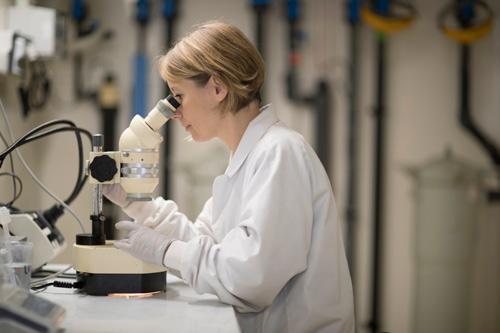
Tes<ng hub for main species in Asia Pacific Asia is the leading regional producer of aquaculture products in the world with the widest diversity of farmed species and rearing prac6ces. Obviously, it is necessary to work locally and target new model fish species such as 6lapia for omnivorous fish species and Asian
Aqualis APAC was opened in 2020 and has been upgraded recently. Today, the facilities consist of two RAS units of 32 tanks, each with 500L capacity, and possibly run both with brackish and fresh waters (Figure 4). As white shrimp Penaeus vannamei is another widely farmed species in Asia, two RAS sets of 32 aquaria were set up to allow specific palatability assessments with this species. A feed processing lab also permits the production of pelleted sinking feed. Similar to at Aqualis EMEA, experimental diets can be checked by an in-house NIR or external lab analysis. Fish and shrimp are currently fed manually ad libitum while waste feed and faeces are removed one hour after feeding either by syphoning or using individual tank, aquarium, and pump aspiration. In the four mentioned species, palatability, nutritional and health studies are feasible, thanks to partnerships with local universities for analysis of immune or physiological parameters.

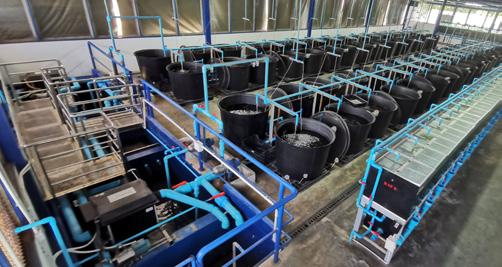
Ecuador is now the largest producer and exporter of farmed shrimp. Farming practices are completely different in LATAM compared to Asia, not to mention the significant differences of post larvae genetics (SPR vs SPF) or access to feed raw materials. This is why Symrise Aqua Feed has set-up Aqualis LATAM operations, relying on two local partners, a university in Ecuador (Figure 6) and a private CRO in Peru.
Commented [ZM9]: Added plse confirm
[MH10R9]: ok
Their facilities consist of a set of 30 to 40 tanks of 1m² area, where shrimp nutritional and health studies are conducted at a density of 40 shrimp/m² in clear water conditions. Experimental diets are pelleted within a feed processing lab of Symrise Aqua Feed using local feed manufacturers’ raw materials, with in-house NIR controlled feed specifications.
Figure 2. Aqualis EMEA technician checking fish nutritional condition
Figure 3. Ranking of palatability performance of different aquafeed solutions as measured at Aqualis EMEA (% of relative growth gain between positive control diet at 100% and negative control diet at 0%)
Figure 2 Aqualis EMEA technician checking fish nutri6onal condi6on
Figure 3. Ranking of palatability performance of different aquafeed solu6ons as measured at Aqualis EMEA (% of rela6ve growth gain between posi6ve control diet at 100% and nega6ve control diet at 0%)
pelleted 102% 104% 100% 66% 63,0% 62% 30% 17,1% 13% 0% 20% 40% 60% 80% 100% 120% Extrapal L Extrapal P Positive control Symrise Aqua Feed Shrimp soluble L Salmon silage L FM Prime FM Standard Fish hydrolysate P (competition) FM Coproduct Palatable performance nromalized to the positive control
Commented
to
2 pix: one for facili4es - one for our colleague?
Commented
[MH6R5]: OK then if possible
include
Commented [ZM7]: New sub4tle
[MH8R7]: OK
Commented
Figure 4. View of RAS and testing facilities at Aqualis APAC
Figure 5. RAS waste waters are reused for their nutritional value within an in-house aquaponic system.
Figure 6. View of Aqualis LATAM shrimp testing facilities
40 Feed Technology September/October 2023 AQUA Culture Asia Pacific
Conclusion
The aquafeed industry is still growing rapidly, while facing new challenges, in addition to the ones listed at the beginning of this article. The need for testing more sustainable and functional diets is increasing as fishmeal and fish oil prices soar and while various new ingredients are proposed in the market at an industrial scale. Another illustration of sustainability is water eutrophication, which is now more controlled, mostly to ensure required water quality but also to not compromise on biodiversity. Dietary formulations, and resulting dietary digestibility, play an important role in this important topic.
It is therefore mandatory for the main aquafeed players to rely on their own testing facilities to ensure they have enough testing capacities while making sure the implemented experimental conditions fully meet their specifications. However, external CRO or public institutions, will remain essential for specific needs or more fundamental projects.
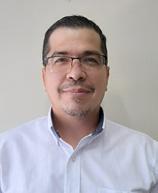

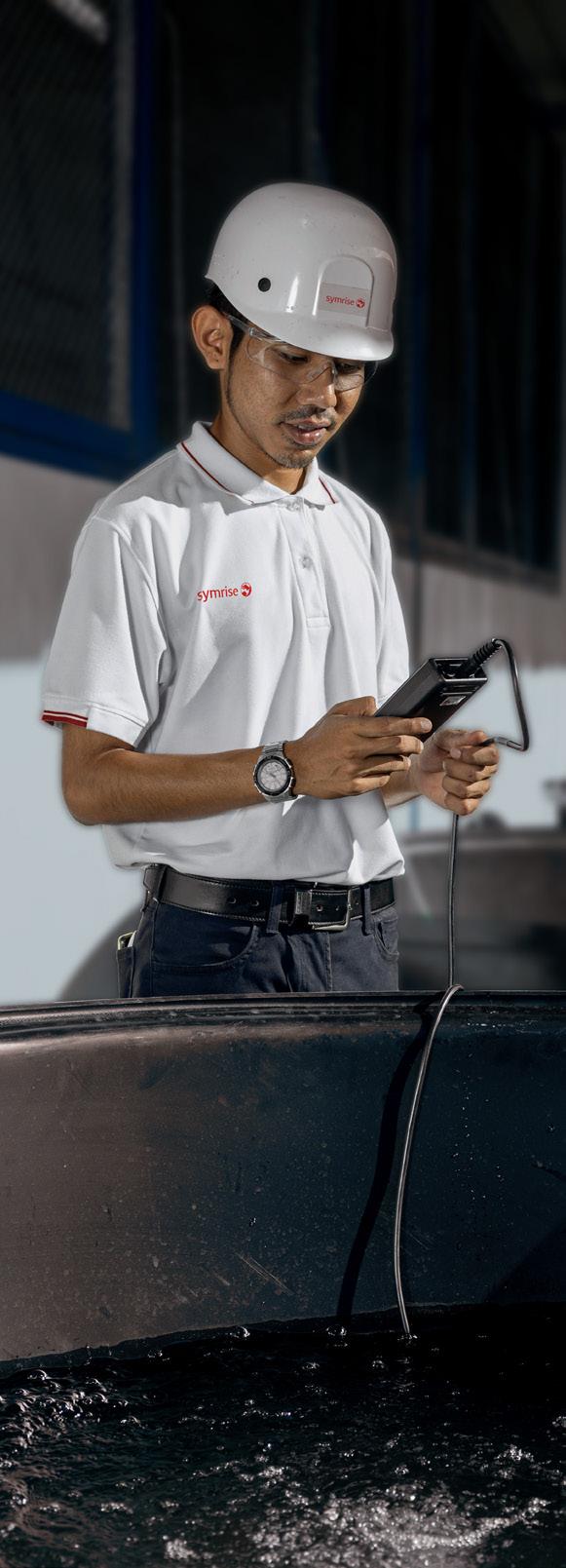
Thus, at Symrise Aqua Feed, more than 60 feeding trials were conducted in 2022 with 75% of them focusing on dietary palatability while 25% were investigating further proposed solutions at the nutritional and health levels. Such tests are essential at all levels of the organisation reflecting the different steps of a product life cycle.
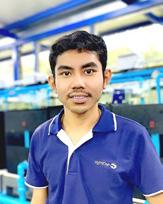
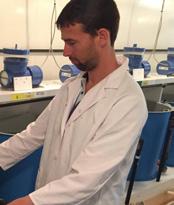
As an illustration, 35% of these assays aim to improve proposed solutions and 50% at demonstrating their performance within the local aquaculture environment and economics, including collaborative trials with aquafeed manufacturers. Finally, 20% of feeding trials are implemented to control the batch-to-batch product quality and most of all to improve testing methods, especially on more challenging species such as white shrimp, because you can only improve what you measure accurately.
always inspiring more
Aqualis, performance measurement centers aquafeed.symrise.com Mikael Herault, Performance Measurement – Global. Email: mikael.herault@symrise.com Clément Martineau, Performance MeasurementAqualis EMEA Dachawat Poonnual, Performance MeasurementAqualis ASPAC Freddy Balbi, Performance Measurement - Aqualis LATAM
41 Feed Technology September/October 2023 AQUA Culture Asia Pacific
Southeast Asia’s first trivalent vaccine for the tilapia
Following trials in Thailand, Malaysia, Ghana and Latin America, an official launch of the vaccine took place in Thailand
VIRBACand Manit Farm have officially launched in Thailand, Tilavac S3, the first trivalent vaccine protecting the tilapia against three major serotypes of Streptococcus agalactiae (1a, 1b and III). These serotypes are responsible for disease outbreaks in tilapia farming in Thailand and elsewhere.
The launch, hosted by Kasetsart University, gathered most of the major players in Thailand’s tilapia industry as well as researchers working on fish health. The President of Kasetsart University, Khun Chongrak Wachrinrat, officiated the ceremony and honoured the event with his presence throughout the whole presentation session.

Manit Farm, under the guidance of Managing Director, Amorn Luengnaruemitchai initiated the project in 2017. In the following two years, Virbac (at that time it was Ictyopharma) conducted a massive epidemiological campaign throughout the largest production areas in Southeast Asia, with a major focus on Thailand, Indonesia, Vietnam, Malaysia and the Philippines. The vaccine development was carried out by Ictyopharma, the French Contract Research Organization or CRO. The intellectual property was then successfully passed to Virbac.
In 2019, the first large-scale commercial trial with Tilavac S3 in Asia was organised in the province of Phetchaburi and Kohn Kean. The trial was possible - thanks to the support and the import authorisation provided by Kasetsart University. This created the possibility of data gathering for studies on the field efficacy of the vaccine.
Virbac chaired the ceremony, led by its Global Director of Aquaculture Division, Dr Pierre Henning and the General Manager of Virbac Thailand, Dr Yotin Dokrakklang. The Key Account Manager for Asia and the Middle East, Dr Roberto Cascione was instrumental in initiating, together with Ictyopharma and Manit Farm, the whole
vaccine project. Tilavac S3 is finally commercially available since 2023 in Thailand. It is also registered in ndonesia, Ghana and Colombia.
Integrated with tilapia farming
The vaccine has proven efficacy and compatibility with tilapia farming practices within Thailand, and have met the needs of farmers by providing fingerlings that performed better in terms of survival and major husbandry parameters, such as feed conversion ratio (FCR), average daily growth (ADG) and average body weight (ABW).
Despite being a vaccine formulated to meet needs of the industry in Southeast Asia, Tilavac S3 is currently used in large-scale vaccination programs in Africa and South America, proving its positive efficacy and impact on farming operations. At this launch ceremony, Virbac shared the official data obtained from trials performed in Thailand, Malaysia, Ghana and Latin America. The data enhances the importance of vaccination as the only method to reduce the impact of the disease in tilapia aquaculture.
This vaccine development is also a testament on the challenges and future ambitions of both Manit and Virbac to advance tilapia farming in the region. It is also a shared objective to invest in the mechanisation of the vaccination husbandry practice (i.e. vaccination machine), to further support the needs of the Thai tilapia farming industry.
“For Virbac, Tilavac S3 is a solid reality of the now available large-scale vaccination campaign, under the guidance and the experience of Manit Farm and the Virbac team,” said Henning. “Nevertheless, Virbac is fully aware of the constant and more complex disease patterns of the aquaculture industry and is constantly investing resources for developing new vaccines and technology to support the challenges in tropical aquaculture.”
42 Aquaculture Innovation
At the launch of Tilavac S3 , (from led) Amorn Leungnaruemitchai, Managing Director Manit Farms; Wilawan Harsup, CEO, Manit GeneAcs; Dr Chongrak Wachrinrat, President of Kasetsart
September/October 2023
At the signing ceremony for the agreement between Manit and Virbac on the vaccination project in Thailand (from left), Amorn Leungnaruemitchai, Managing Director Manit Farms; Wilawan Harsup, CEO, Manit Genetics; Dr Chongrak Wachrinrat, President of Kasetsart University; Dr Pierre Henning, Global Director of Aquaculture Division, Virbac; Dr Roberto Cascione, Key Account Manager for Asia and Middle East and Dr Yotin Dokrakklang, General Manager, Thailand.
AQUA Culture Asia Pacific
TILAVAC S3
Streptococcus agalactiae serotype Ia, Ib, and III vaccine for Nile Tilapia
Our Tilavac S3 Vaccine
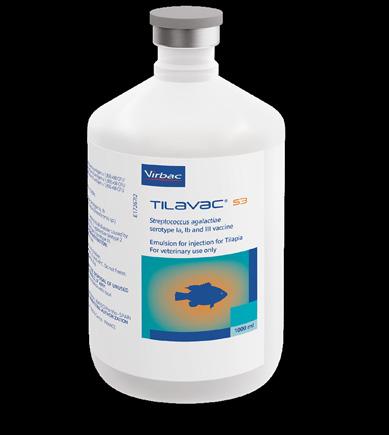
This product is a trivalent oil-adjuvanted vaccine administered by intraperitoneal injections for the protection against Streptococcus agalactiae serotype Ia, Ib, and III, in Nile Tilapia (Oreochromis niloticus).


• Why Use Vaccines?
A prophylaxis solution for the sustainability of the aquaculture industry. An intraperitoneal injection vaccine for early onset immunity and eight month protection. Benefits rapid recovery rates during outbreaks. Reduces feed conversion and improves survivability during warmer seasons with higher effects when applying herd immunity.

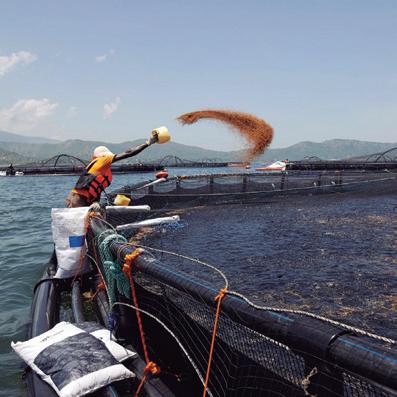

The reason for vaccinations in tilapia farming*
Annually, over 6,000,000 tonnes of tilapia ( Oreochromis niloticus ) are produced globally, compared to 3,000,000 tonnes of Atlantic salmon. The growth coefficient for tilapia over 10 years (20102019) was 5.9%, but in 2022, the growth coefficient was expected to be 3.7% due to the interruption from the COVID-19 pandemic (GOAL 2021, Global Seafood Alliance, 2021). With a mortality rate of up to 60-85% during very strong outbreaks, streptococcosis is still one of the major threats of the tilapia industry.
However, if we look at the vaccination rate of this leading industry, we will discover that 35% of the total tilapia produced in South America and only 1% of the whole production of Africa and Asia are currently vaccinated. This is a great contrast to the farmed salmon industry where 100% of the fish are vaccinated. No doubt, in Asia, as we push for more secure production, there is a need for vaccination programs. Moreover, the epidemiological situation and disease presence are constantly evolving, creating a growing and continuous need for new prophylactic methods.
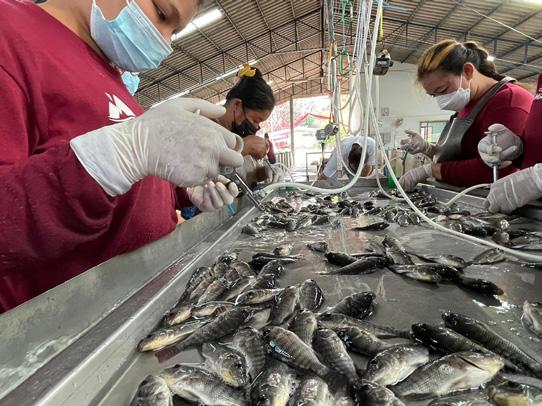

Therefore, even the classic Streptococcus agalactiae prophylaxis is changing toward a multivalent approach where, indeed, Tilavac S3 vaccine (Virbac, France) is the only trivalent vaccine available in the market, protecting against all major pathogenic serotypes of S. agalactiae (1a, 1b and III).
Virbac is committed to developing new technologies and to playing a major role in state-of-the-art fish health approaches. Thanks to a field-oriented, highly experienced team and strong understanding of the farmers’ needs, the company promotes and provides continuous monitoring of the major farming areas to understand and react promptly to the industry. As the largest producer of tilapia globally but with a low vaccination rate, the Asian tilapia industry may need to move forward with vaccination as part of a better health management strategy if it wants to stay ahead.
44 Aquaculture Innovation
* Extracted from Roberto Cascione, 2022. Tilapia vaccines – new developments and new market approaches. Aqua Culture Asia Pacific, March/April 2022, p14-16.
September/October 2023 AQUA Culture Asia Pacific
Tilavac S33 is an injection emulsion for intraperitoneal (IP) vaccination. Today, this is the most efficient administration route. Investing in the mechanisation of the vaccination husbandry practice is a future step for both Manit Farms and Virbac.
Net zero carbon protein: The cornerstone of a sustainable food system
Fermentation technology enables the use of low carbon-intensive platform molecules as intermediates from the energy and chemical sectors for single-cell protein production
By Henk Noorman
Sourcing feed protein differently
While feeding our planet’s growing population of 8 billion people, the current food system generates 34% of global greenhouse gas (GHG) emissions. This equates to 18GT of CO2eq annually, of which animal products create 10GT. Naturally, a growing population and middle-class demand for more food – and under conventional agriculture, will produce more CO 2 eq.
There is also a physical challenge to growing more food. Not only does increased agriculture potentially result in increased emissions, but where do we find the physical resources to grow them? Where will an additional 20% or even up to 50% of farmed land projected to be needed by 2050 come from, if not deforestation? Where is the fresh water and fertiliser to be sourced?
Now, imagine a food system decoupled from agriculture and fishery. A system that produces protein at net zero, without deforestation or overfishing of the world’s oceans, nitrogen (N) and phosphorus (P) effluent run-off, loss of biodiversity, or long-distance transportation. Remarkably, such a food system is not a fantasy. Large-scale investments take place for generating renewable energy to produce green ammonia and low-carbon feedstocks from biogenic CO 2, and there is an opportunity to turn them into singlecell proteins.
A food system is evolving that couples the energy transition, from fossil to renewables, with the protein transition, from plant crops and animal-derived protein to microbial proteins. The potential of industrial-scale fermentation technology is vast and could legitimately produce regionally assured food composed of net zero carbon nutrients: proteins, vitamins, and fats; food made affordable by the value chain and preferentially selected by end consumers.
The dynamics of climate change and population growth
Two global megatrends dominate the news: climate change, related to the emissions of greenhouse gases, and food security challenges, associated with deforestation and overfishing, which releases carbon from the soil and oceans into the atmosphere. Combined with the increase in the overall global population and growing middle class, these impending megatrends will challenge us to be able to provide food for all within the planetary boundaries.
Consequently, we will likely witness a growing protein gap of up to 100 million tonnes in 2050 (Figure 1) and face the challenge of complying with net zero pledges (Figure 2).


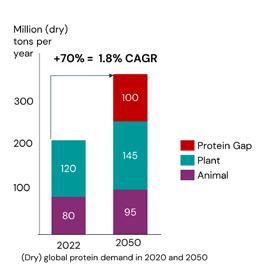
Managing convergent challenges
There is a solution to both challenges from unexpected allies: the chemical and energy industry. The need for cleaner energy, fuels and materials is already increasing the terawatts of renewable electricity produced by sun and wind, giving rise to biofuels and biochemicals. Green energy carriers such as hydrogen and carbon monoxide from water and CO 2 powered by renewable electricity can be used to produce low-carbon-intensive platform molecules.
Sources: https://ourworldindata.org; Together we tackle the protein gap, Feed Planet Magazine; Future protein supply and demand: Strategies and factors Influencing a sustainable equilibiurm- PMC (nih.gov); A meta-analysis of projected global food demand and population at risk of hunger for the period 2010-2050 (nature.com); Microsoft Word - Synthesis_Report. doc (fao.org)
By using precision biotechnology, we can convert the fruits of the energy transition into building blocks for the production of single-cell proteins, at scale, for use in the food and animal feed industries. Not only does this start to address the protein gap, but this localised model also removes the essentials of conventional agriculture, which is the inherent need for land and water.
45 Aquaculture Innovation
Figure 1. (Dry) protein demand in 2020 and 2050
Figure 2. The path towards net zero, recommended by the SBT initiative. Source: https://sciencebasedtargets.org/resources/ files/Net-Zero-Criteria-Draft-for-Public-Consultation-vl-0.pdf
September/October 2023 AQUA Culture Asia Pacific
Single-cell proteins can provide readily available, proteinrich microbial biomass in the form of algae, yeast, bacteria or fungi (Figure 3). Naturally occurring microorganisms can convert platform molecules into proteins, perfectly suited to replace fish meal, wheat gluten, soy or pea protein concentrates, and other plant proteins. This can be achieved by combining biotechnology with new Bioscience to train and evolve microorganisms to become super protein producers and maximise the nutritional value of the non-protein part of the cell structures.
hydrogen and, with oxygen, produce protein bacteria. Protein Brewery uses sugars from arable land as feedstocks for their microbial protein. Alternative protein sources such as insects or microalgae are also being explored and commercialised but suffer from scaling issues.
Lastly, some companies, like us, use low-carbon-intensive platform molecules as intermediates from the energy and chemical sectors, which are becoming abundantly available at lower cost, and are relatively easy to handle.
Renewable energy costs have dropped dramatically in the last decade thanks to massive upscaling. At a current cost of USD 0.03-0.06/kWh, renewable energy is already comparable to fossil (Figure 4). Governmental mandates have accelerated the transition and will continue to do so as the higher deployment of renewable energy generation projects is undertaken – potentially putting downward pressure on prices. Further affordability is recognised in the value chain in the form of CO 2 eq emission reduction when a net zero protein source investment becomes competitive at a financial cost of €100/tonne CO 2 eq.

The creation of mega +100 kilo tonnes (kt) plants producing microbial protein would not only partly solve a protein production problem but also reduce carbon emissions equivalent to substitute 400kt CO 2 equivalents (a value of €40 million) emitted by non-GM (genetically modified) soybean meal and absorb 200kt biogenic carbon, at an approximate value of €20 million.
Single-cell protein: the near future?
The field of ‘single-cell’ protein biotechnology has advanced and, with new tools, is allowing us to develop novel value chains. Companies such as Calysta have developed and commercialised special bioreactor systems with methaneconsuming bacteria capable of producing protein from natural gas, which releases fossil CO2. Others, like Deep Branch, Air Protein and Solar Foods, capture CO 2 and
dsm-firmenich possesses the microbial workhorses best suited to produce protein using state-of-the-art fermentation technology. The microbes are versatile, agile and omnivorous consumers of carbon molecules. Initial trials with fish found no adverse effects on growth and survival when replacing 100% fishmeal and 50% soy protein concentrate, with high inclusion levels at above 15% (Figure 5). dsm-firmenich has over 150 years of biotechnology experience in strain and process technology and industrial-scale fermentation. More than twenty industrial fermentation sites produce over a hundred products, such as natural algal omega-3 fatty acids, vitamins, sweeteners, enzymes, savoury compounds, aroma ingredients, probiotic bacteria and hydrocolloids for food texturing.
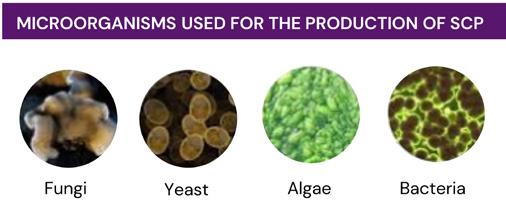
Interestingly, the synergistic coupling of the energy, chemical and food industries could become the key enabler at an industrial scale for resolving the seemingly opposed challenges of GHG emissions and the need to feed a growing population with protein sustainably. The growing need for proteins to close the impending gap of 100 million tonnes by 2050, and the need to reduce 18G tonnes of carbon from our food system, can be achieved with industrial-scale microbial proteins as one of the key solutions. dsm-firmenich’s strain library and industrial-scale fermentation technology could make a significant contribution - allowing us to meet these challenges head-on.
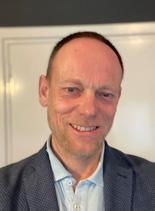
Reference
Food systems are responsible for a third of global anthropogenic GHG emissions | Nature Food
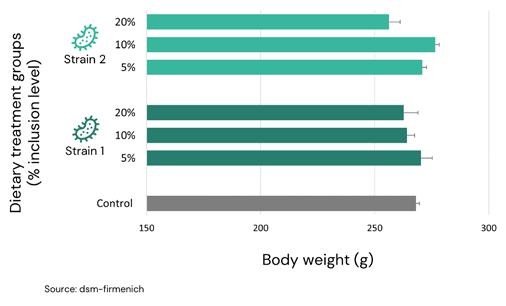 Figure 3. Microorganisms used for the production of single-cell proteins. Source: https://byjus.com
Figure 4. Global weighted average and project-level LCOE (levelized costs of energy) of newly commissioned utility-scale renewable power generation technologies.2010-2021. Source: IRENA Renewable Cost Database.
Figure 5. The effect of single cell protein inclusion on the growth performance of rainbow trout. Source: dsm-firmenich.
Figure 3. Microorganisms used for the production of single-cell proteins. Source: https://byjus.com
Figure 4. Global weighted average and project-level LCOE (levelized costs of energy) of newly commissioned utility-scale renewable power generation technologies.2010-2021. Source: IRENA Renewable Cost Database.
Figure 5. The effect of single cell protein inclusion on the growth performance of rainbow trout. Source: dsm-firmenich.
46 Aquaculture Innovation September/October 2023 AQUA Culture Asia Pacific
Henk Noorman is Senior Science Fellow in dsm-firmenich, based in the Netherlands
Yunlong grouper – a hybrid grouper that withstands low temperatures

Chin-Chiu Lin discusses the farming of Yunlong grouper, which after 40 years of hybrid grouper development in Taiwan, show resistance to low temperatures and have superior meat quality

The Yunlong grouper is a hybrid of giant grouper Epinephelus lanceolatus (male) and longtooth grouper Epinephelus moara (female). This grouper has the desirable traits of the giant grouper: fast growth, large size and exhibiting the characteristics of the longtooth grouper (also known a kelp grouper in Taiwan) such as delicate meat quality, tolerance to cold and wide temperature changes and flexibility to different food types. The Yunlong grouper can be crowned as the ultimate favourite grouper species to be cultured in Taiwan.
Thetis Corporation’s Chin-Chiu Lin said that 10 years ago while working in Merit Ocean Biotechnology Co. Ltd, he was entrusted by a farm in Yilan County, Taiwan, to carry out the artificial breeding of 10 wild-caught longtooth grouper broodstock due to their unsuccessful attempt. “We initially took 100g of fertilised eggs for larvae rearing, and it turned out we were able to culture more than 8,000 fish fry,” said Lin.
Thetis Corporation’s ChinChiu Lin (holding a 10-12kg grouper) has been working on the Yunlong grouper for more than 10 years. This grouper can be crowned as the ultimate favourite grouper species to be cultured in Taiwan.

47 Industry Review
Juvenile Yunlong grouper in Taiwan, at 40-50g.
September/October 2023 AQUA Culture Asia Pacific
to feed only in early March. “Yunlong grouper had inherited the characteristic from longtooth grouper, surviving through many cold waves over the years, while the giant grouper has already stopped feeding,” said Lin.
Unfortunately, the longtooth grouper fry was not popular because of the slow growth rate. The two companies closed their business soon after due to various reasons. Lin purchased the broodstock and fry to keep the research going, and kept them at a fishpond in the Cigu district, Tainan, for further studies.
He added that the Yunlong grouper is also an omnivorous animal and can feed on artificial pellets or rough fish, which are advantageous for aquaculture. “Currently, we feed them with artificial feed twice a week during winter, whereas we give them a combination of rough fish and feeds in summer.”
Lin’s pond covers 8ha and is located at Taiwan’s westernmost point. This area is well known for its natural environment, and where farmers practise low-density and drug-free farming for decades. His neighbour Mrs Huang is an experienced fish and clam farmer and helps to take care of the longtooth grouper broodstock and fry. She and Lin work together to produce and promote the Yunlong grouper.
A study titled “Growth and reproduction of the kelp grouper and its tolerance to low temperature,” published by the Mariculture Research Centre, Fisheries Research Institute, Council of Agriculture, Taiwan in 2020, states that the longtooth grouper E. moara is known as real kelp grouper in English. It belongs to the order Perciformes , family Serranidae , and genus Epinephelus , and is mainly distributed in the northwest Pacific, including Japan, Korea, Taiwan, and the coastal areas of China. The flesh is delicious, tender and highly priced at NTD 650800/kg (USD 21-26). The longtooth grouper has been categorised as kelp grouper in the past decade. Chinese researchers employed morphological, biomolecular, and cell genetics analyses to validate the longtooth grouper.
Dispute over the classification of longtooth or kelp grouper
The longtooth grouper is mainly distributed in the northwest Pacific region, which includes the seas around Japan, Korea, China, Hong Kong and Taiwan. The longtooth grouper is a temperate to subtropical species; its body is greyish brown in colour, with six horizontal dark-coloured stripes. The stripes are more apparent in their early stages and sometimes indistinct in adulthood.
Grouper that can withstand low temperature
Yunlong grouper’s meat is enriched with fat evenly distributed between the muscle bundles and subcutaneous tissue, which can even be eaten as sashimi. "Now, the local fish farmers opt for Yunlong grouper rather than the hybrid grouper (giant grouper x tiger grouper Epinephelus fuscoguttatus) even though it is three times more expensive than the latter, at NTD 600/kg (USD 20/kg) for Yunlong grouper, due to its excellent taste.”
“The orange-spotted grouper has lesser subcutaneous fat and therefore requires careful heat control to prevent overcooking. In contrast, Yunlong grouper has a higher and more evenly distributed fat content, resulting in a milky-white, rich, and tasty soup without extensive temperature monitoring during cooking,” said Lin.
Lin pointed out that there has been considerable debate on the classification of the longtooth grouper in Taiwan, where it is commonly known as kelp grouper Epinephelus brunneus . The wild fish he obtained was caught in Yilan County and shares similar morphology with the longtooth grouper E. moara found in Japan and Korea. However, confusion over names for these fish and physical characteristics have led to controversy over their authenticity and classification.
In recent years, the effects of climate change have worsened, resulting in more frequent and intense cold spells in winter. Consequently, reports of tropical fish species, such as groupers, freezing to death in Taiwan have become more common. Hence, developing grouper species that can withstand low temperatures is crucial for promoting the sustainable growth of grouper aquaculture in Taiwan.
The Mariculture Research Centre bought several longtooth grouper to rear and test on low-temperature tolerance a few years ago. The study demonstrated that longtooth grouper (1-2kg) experienced hypothermia when the temperature (initially at 24°C) dropped to 8.27°C ± 0.12 after 67.67 ± 0.58 hours. In contrast, the giant grouper suffered from hypothermia when the temperature reached 12.77°C ± 0.31 after 29.67 ± 1.53 hours. The experiment showed that longtooth grouper is more capable of withstanding low temperatures.
Moreover, the Yunlong grouper, which possessed the genes of giant grouper, shows rapid growth whereby they can gain 0.6kg in 8 months and 3-4kg in 2 years compared to the longtooth grouper, which gained 0.6kg after more than a year (Figure 1). The fish that are reared for 4 years and above 16kg will be marketed to maximise the feed efficiency and meat yield and at the same time, the fish are processed and sold by well-designed cutting sections.
Based on the information from the Baidu encyclopaedia, E. moara is the longtooth grouper, while E. brunneus is kelp grouper. On the other hand, the Fish Database of Taiwan from Academia Sinica indicated that E. moara is synonymous with E. brunneus
Overview of Yunlong grouper aquaculture in mainland China
The artificial breeding of Yunlong grouper started in 2010 in China. It started from the research on sperm cryopreservation techniques, broodstock breeding and the breakthrough of problems arising throughout the breeding process. In 2014, the first hybrid Yunlong
48 Industry Review
Figure 1. Growth curve of Yunlong grouper (E. moara x E. lanceolatus)
55.4 515.7 798.0 19.6 129.0 139.4 0 100 200 300 400 500 600 700 800 900 1,000 0 50 100 150 200 250 300 350 400 Average weight (g) Days of Culture
Yunlong grouper Longtooth grouper
September/October 2023 AQUA Culture Asia Pacific
Figure 1. Growth curve of Yunlong grouper (E. moara x E. lanceolatus)
Huang mentioned that longtooth grouper and Yunlong grouper are indeed tolerant to low temperatures. During the January 2016 East Asia cold snaps, the water temperature in the Cigu, Tainan ponds dropped to 6°C. Surprisingly, they did not suffer any losses for the longtooth grouper and Yunlong grouper; in fact, the fish could feed again once the water temperature returned to 10-15°C in February. The giant grouper, on the other hand, started to feed only in early March. “Yunlong grouper had inherited the characteristic from longtooth grouper, surviving through many cold waves over the years, while the giant grouper has already stopped feeding,” said Lin.
He added that the Yunlong grouper is also an omnivorous animal and can feed on artificial pellets or rough fish, which are advantageous for aquaculture. “Currently, we feed them with artificial feed twice a week during winter, whereas we give them a combination of rough fish and feeds in summer.”
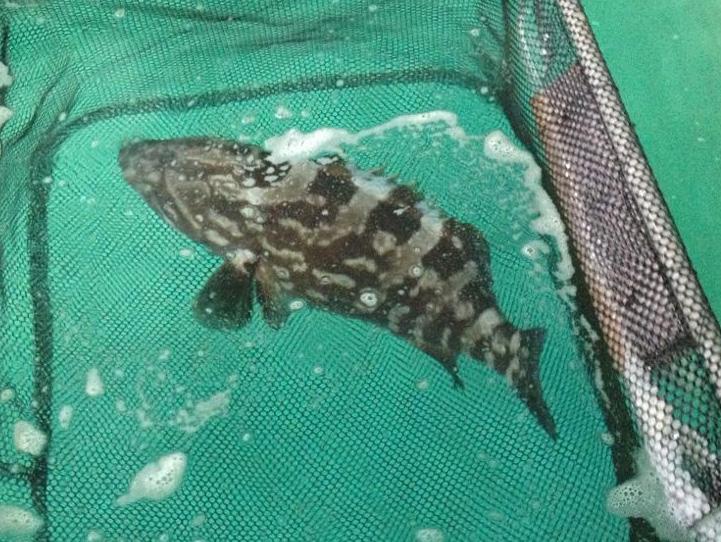
Yunlong grouper’s meat is enriched with fat evenly distributed between the muscle and subcutaneous tissue, which can even be eaten as sashimi. “Now, local fish farmers opt for Yunlong grouper rather than the hybrid grouper (giant grouper x tiger grouper Epinephelus fuscoguttatus ) even though it is three times more expensive than the latter, at NTD 600/kg (USD 20/ kg) for Yunlong grouper, due to its excellent taste.”
“The orange-spotted grouper has lesser subcutaneous fat and therefore requires careful heat control to prevent overcooking. In contrast, Yunlong grouper has a higher and more evenly distributed fat content, resulting in a milky-white, rich, and tasty soup without extensive temperature monitoring during cooking,” said Lin.
Moreover, the Yunlong grouper, which has the genes of giant grouper, shows rapid growth whereby they can gain 0.6kg in 8 months and 3-4kg in 2 years compared to the longtooth grouper, which gained 0.6kg after more than a year (Figure 1). The fish that are reared for 4 years and above 16kg will be marketed to maximise the feed efficiency and meat yield and at the same time, the fish are processed and appropriately cut into several sections.
IFA v6 FOR AQUACULTURE

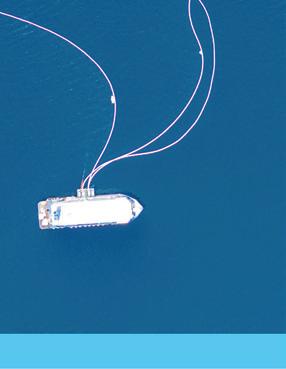
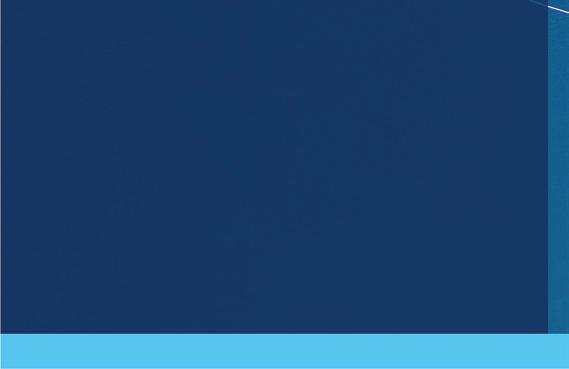
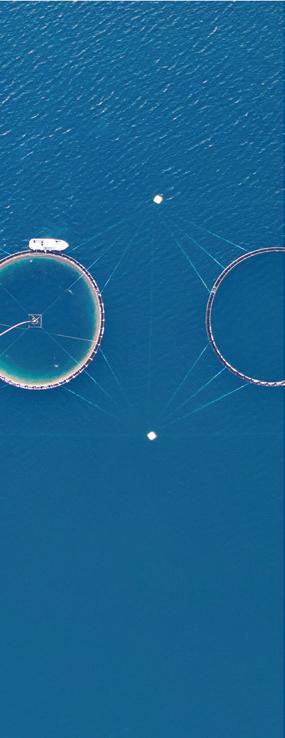
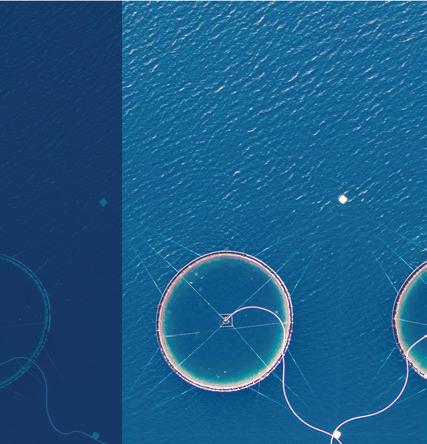

49 Industry Review Discover more at www.globalgap.org/ aquaculture
Developed
through extensive industry collaboration,
is a global standard for responsible farming practices that covers all stages of production.
RAMS T E R, STREAMLINED , AND I NEVIRD-TCAPMWWW.GLOBALGAP.ORG FOLLOW US
September/October 2023 AQUA Culture Asia Pacific
The Yunlong grouper is a hybrid of the giant grouper Epinephelus lanceolatus (male) and longtooth grouper Epinephelus moara (female).
Images of the Yilan strain of the longtooth grouper Epinephelus moara. Right, the stripes are more apparent in their early stages and sometimes indistinct in adulthood. Left, this grouper is experiencing a high level of deformity and low survival.
Overview of Yunlong grouper aquaculture in mainland China
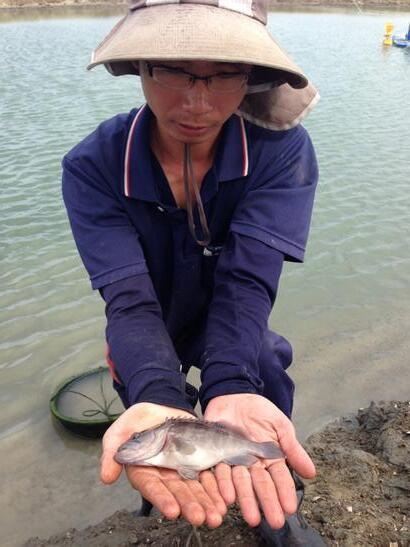
The artificial breeding of the Yunlong grouper started in 2010 in China. It started from the research on sperm cryopreservation techniques, broodstock breeding and the breakthrough of problems arising throughout the breeding process. In 2014, the first hybrid Yunlong grouper was produced through the collaboration of the Yellow Sea Fisheries Research Institute and Laizhou Mingbo Aquatic Co., Ltd.
Yong-Sheng Tian, the project leader of the Yellow Sea Fisheries Research Institute, pointed out that the female broodstock of Yunlong grouper, the longtooth grouper, lives in the northernmost part of China. It is resistant to the cold and can grow in coastal seas off Fujian province. Even though the flesh of the longtooth grouper is delicate and delicious, the bottlenecks have been its relatively slow growth (it usually takes 3-5 years to meet the export standards for Japan and South Korea) and high requirements for the culture environment.
The Yunlong grouper grows faster, weighing more than 500g in about 8-10 months and weighing over 3kg after 2 years of farming. “The Yunlong grouper’s meat can replace longtooth grouper as sashimi. This is recognised by customers from Japan, Korea and other countries.”
Dong-Liang Mao at the aquaculture department of Laizhou Mingbo Aquatic Co., Ltd., pointed out that Yunlong grouper prefers a water temperature of around 18°C, which is much lower than that required by other groupers (25°C). This helps to lower the production cost. The longtooth grouper is currently experiencing a high level of deformity and low survivability. However, the newly developed Yunlong grouper has overcome this disadvantage. The next milestone is to gradually expand
the breeding and farming scale for Yunlong grouper and promote this new variant to markets.
Currently, the Yunlong grouper in Fujian province sold at the farm exceeds CNY50 per half kg (USD14/kg), a high price among farmed fish.

Afterthoughts
In nature, many groupers spawn and release sperm in open water areas, providing opportunities for different species of grouper eggs to be fertilised and produce hybrid groupers. This is undeniably true. Therefore, it is less precise to distinguish the grouper species based on differences in appearance and patterns. Studies using genetic sequencing have been conducted to differentiate the “genetic origin” of the oil grouper. Still, they failed to obtain and confirm whether the collected sample was of “pure breed” as planned, and the study ultimately came to nothing.
The more commonly known “hybrid tiger grouper” also has similar issues. Even in wild-caught female tiger grouper (intended for future egg collection and hybridisation) from its native Southeast Asia, it cannot be determined whether it is a pure-bred species. If this is used as the source of fish eggs for breeding tiger grouper, there is a chance of a large number of sudden deaths among the 2 to 3-inch fry. This is a widely circulated theory in the aquaculture field and has yet to be verified by academic institutions.
This article, by Shih-Chin Cheng of Fish Farming World, was first published in the March 2023 issue. Cheong Hui Ann translated the article into English for Aqua Culture Asia Pacific Magazine.
50 Industry Review
September/October 2023 AQUA Culture Asia Pacific
The Barramundi in Australia
currently produces around 1,600 tonnes of barramundi annually in Australia. Tassal branded barramundi is due to hit the market in November 2023 just in time for the Australian summer.
Dan Richards, CEO, Humpty Doo Barramundi. Photo credit: was.org
Selective breeding
The barramundi or Lates calcarifer is farmed on an industrial scale in Australia. According to the Australian Barramundi Farmers Association (ABFA), most of the production comes from outdoor fresh or saltwater pond operations and sea cages, in North Queensland, Western Australia and the Northern Territory. Operations in Victoria and South Australia use thermal spring water in indoor recirculating tank systems. ABFA members account for 95% of the national volumes and are proud of producing high-quality, sustainable and delicious barramundi. They have production cycles in place to produce 11,000 tonnes in the next 2 years, with a national production target of 20,000 tonnes by 2025.
The barramundi or Lates calcarifer is farmed on an industrial scale in Australia. According to the Australian Barramundi Farmers Associa?on (ABFA), most of the produc?on comes from outdoor fresh or saltwater pond opera?ons and sea cages, in North Queensland, Western Australia and the Northern Territory (NT). Opera?ons in Victoria and South Australia use thermal spring water in indoor recircula?ng tank systems. ABFA members account for 95% of the na?onal volumes and are proud of producing high-quality, sustainable and delicious barramundi. They have produc?on cycles in place to produce 11,000 tonnes in the next 2 years, with a na?onal produc?on target of 20,000 tonnes by 2025.
The leading barramundi producing state is the NT During World Aquaculture 2023 (WA2023), held in Darwin, capital of NT, Dan Richards, CEO of award-winning Humpty Doo Barramundi described the company’s 30 years in farming the barramundi This family-owned business, since 1993, is in NT, halfway between Darwin and Kakadu Na?onal Park. It prides itself on the annual produc?on of 3,000 tonnes in saltwater and with wetland water treatment and reuse to minimise impacts on the surrounding environment Its barramundi is featured in Australia's top restaurants, leading retailers as well as in business and first-class meals of the na?onal airline Produc?on is BAP cer?fied since 2017
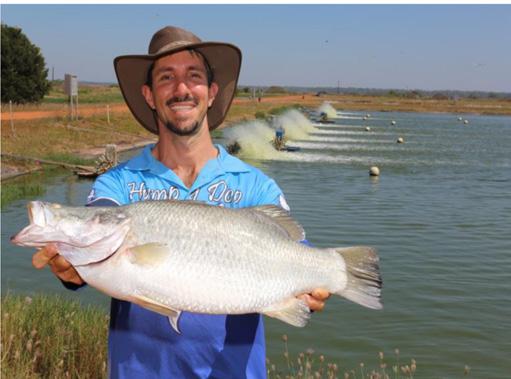
During World Aquaculture 2023 (WA2023), held in Darwin, Dan Richards, CEO of award-winning Humpty Doo Barramundi described the company’s 30 years in farming the fish. This family-owned business, since 1993, prides itself on the annual production of 3,000 tonnes in saltwater and with wetland water treatment and reuse to minimise impacts on the surrounding environment. Its barramundi is featured in Australia’s top restaurants, leading retailers as well as in business and first-class meals of the national airline. Production is BAP certified since 2017.
A global player is Mainstream which has two state of the art urban farms in Melbourne, using its unique and proprietary closed containment aquaculture technology and culturing barramundi in pristine spring water. It has three Queensland-based saltwater pond farming sites and is also the largest fingerling supplier in both Australia and the world. In 2022, Mainstream entered the US market for domestic production of barramundi in the Arizona desert.
In Queensland, Mainstream has always treated its wastewater through a series of natural wetlands and investigated growing algae in the water to remove nutrients. In an Australia-first, it is using bioreactorswoodchip-filled containers which remove excess nitrogen in surface water and groundwater by creating the right conditions – a low-oxygen environment and carbon – for microbes to convert nitrate into harmless nitrogen. (Reef rivers, 2023)
In August 2023, the Tassal Group completed its acquisition of MPA Fish Farms Pty Ltd and MPA Marketing Pty Ltd (MPA) which operate Australia’s only oceanbased barramundi farm at Cone Bay, Western Australia. Previously MPA was the Australian operations of the Singapore-based Barramundi Group. Tassal, now part of Cooke Inc, will add the barramundi to the business. MPA
Mainstream has a barramundi breeding program for 17 years and introduced genomic selection as the core method of commercial trait improvement in 2018. During WA2023, Paul Harrison, Chief Scientist and Co-Founder described how a mix of genomic and marker assisted selection on individuals is coupled with pedigree-based methods to improve commercial traits and create optimal and sustainable breeding lines (Harrison et al, 2023). This has enabled identification of breeding lines that are tailored/optimised to specific farming environments (particularly open pond and RAS environments). Over a three-year period (2019-2022), commercial (farming) growth rates had demonstrated a 15.8% (pond farming) and 15.2% (RAS farming) increase in growth rates.
The wild-type skin phenotype of barramundi is typically silver and slightly darker dorsally. However, golden (xanthic) variants are also of interest to aquaculture as golden barramundi exhibit lower levels of “greyness” in their flesh – a characteristic that often is a negative consumer attribute. Driving a unique golden-coloured barramundi breeding line, ARC Research Hub for Supercharging Tropical Aquaculture through Genetic Solutions, Centre for Sustainable Tropical Fisheries, James Cook University analysed the transcriptomic differences between the golden and wild type colour variants and identified the genes implicated in the colouration of the golden variant (Roberta et al., 2023).
Working with the Queensland Alliance for Agriculture and Food Innovation, Mainstream plans to develop a digital twin (computer simulation) platform of a barramundi breeding program. The aim of the digital twin is to determine the highest benefit/cost ratio in the implementation of genomic selection and other genomic technologies, such as parental selection. This will also model maximum gains for important traits, while maintaining genetic diversity and develop the optimal breeding program for various environments.
A CSIRO team and Humpty Doo Barramundi said that the farmed barramundi sector now has sufficient scale to justify the development of family-based breeding. They described genetic parameter estimates obtained in fish raised in Australia’s Northern Territory, under commercial pond conditions. Pedigree was assigned using a SNP based genotyping tool before the dataset was used for heritability estimation. The heritability for both traits was moderate and in line with previously published estimates for growth traits across tank and sea cage production systems. Their results showed promising future genetic gain for growth (Kijas et al, 2023).
Faster to mature with genomics
At James Cook University (JCU), there is a plan to develop a barramundi capable of reaching sexual maturity twice as fast. This could revolutionise Australia’s fast-growing aquaculture industry. Jarrod Guppy will apply cutting edge genetic techniques to develop a nextgeneration breed of the popular fish, after receiving a AUD470,000, 3-year Australian Research Council Early Career Research Industry Fellowship.
51 Industry Review
The barramundi in Australia Pic in p1 top
Dan Richards, CEO, Humpty Doo Barramundi. Photo credit: was.org
September/October 2023 AQUA Culture Asia Pacific
“We are aiming to speed up the process of selective breeding as much as possible and give the operators of selective breeding programs more control over how they breed,” he said. “One of the big challenges for barramundi breeding programs is that they can take 4-6 years to mature for breeding. We are aiming to half that time period. We will produce fish that are mature at 2 years to breed the next generation of fast-growing fish.”
The industry partner is Mainstream Aquaculture which will provide commercial support for the project in addition to stock from the company’s fish farms in Queensland and Victoria. (jcu.edu.au)
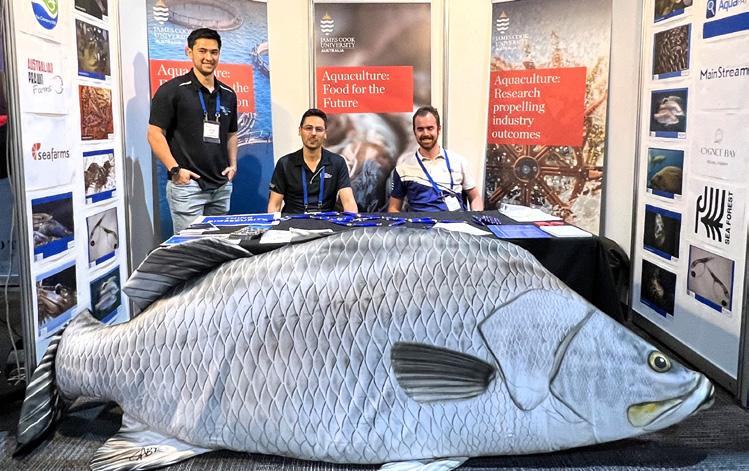
Achieve premium market quality
Stress during harvest and slaughter significantly impact flesh quality. A project supported by ABFA and the Queensland Department of Agriculture and Fisheries (DAF) focussed on measuring stress factors during current commercial harvest processes on several barramundi farms to assess critical factors that impact fish, including product quality and fish welfare. Although product portioning is convenient for customer convenience, it is at a cost with shortened shelf life. Transport of whole, un-gutted barramundi gives 2-3 weeks shelf-life under tight cold-chain control whereas the shelf-life of chilled raw packaged fillets/portions is less than a week. It was concluded that new harvest methods and new products can come from knowledge on existing quality variables in the marketplace (especially colour and flavour). Alternative harvest methods raise the average for flesh quality, then this should be followed through with studies of portions and value-added samples (Exley et al, 2022).
Biosecurity with imports
Australia currently allows the importation of uncooked, farmed and wild caught, non-salmonid finfish products for human consumption from several countries, as whole, and head-on eviscerated products. A study presented at WA2023 by Fensham et al. (2023) hypothesised that importation of such products may contain significant exotic viruses of concern. These include red sea bream iridovirus (RSIV), infectious spleen and kidney necrosis virus (ISKNV), scale drop disease virus (SDDV), Singapore grouper iridovirus (SGIV), and turbot reddish body iridovirus (TRBIV). Exotic to Australia, these viruses could present a significant biosecurity and disease threat, if infections were to occur within an aquaculture or naïve wild fishery setting.
They sampled 119 imported, uncooked, non-salmonid
finfish products from seafood markets, seafood retailers and supermarkets across Australia, between June and October 2020. Testing detected the presence of ISKNV viral DNA by qPCR in seven of the samples but the quantity of ISKNV viral DNA detected was low. Further testing to distinguish genotype identity (RSIV, ISKNV, TRBIV) was not performed. SGIV viral DNA was detected by qPCR in four of the samples.
Looking to the near future, Harrison said that improved robustness and specific disease resistance are also his focus. He outlined a program to improve the capability of barramundi stocks to cope with common parasitic ( Cryptocaryon, Amyloodinium ) and bacterial ( Streptococcus iniae ) challenges. Another focus is a genomic platform to improve disease resistance to exotic regional diseases and build a breeding nucleus capable of rapid response to in-bound biosecurity threats to the Australian barramundi industry.
References
Australian Barramundi Farmers Association. https://abfa.org. au/industry/
Exley, P., Poole, S., Paulo, C., Wedding, B., Grauf, S., Pavich, L., George, J., Edwards, D., Pun, S., Liu, D., Williams, D., Moller, S., Pramanik, I., Paterson, B., Wright, C. Queensland Department of Agriculture and Fisheries. 2022. Harvest and slaughter methods for farmed barramundi to minimise fish stress and achieve premium market quality and improved fish welfare outcomes. Brisbane, September. CC BY 3.0
(https://www.frdc.com.au/sites/default/files/products/2019003-DLD.pdf)
Reef rivers, 2023. Barra bioreactors, p24.
https://wettropicswaterways.org.au/wp-content/uploads/2023/07/ TER2046_ReefRivers_Mag23_WEB.pdf
References in World Aquaculture 2023, Book of Abstracts. Harrison et al. 2023. Recent advances in barramundi selective breeding. p121
Kijas et al. 2023. Genetic parameter estimates for growth traits in barramundi (Asian seabass; Lates calcarifer ). p149 Roberta et al. 2023. Revealing the molecular drivers behind golden colouration in barramundi Lates calcarifer : a transcriptome approach. p181.
Fensham et al., 2023. Assessing the biosecurity risk of imported uncooked, whole and headon eviscerated, barramundi and non-salmonid finfish in relation to exotic viruses. p91.
52 Industry Review
James Cook University at the trade show during World Aquaculture 2023, held in Darwin from 29 May to 1 June.
September/October 2023 AQUA Culture Asia Pacific
Thiswas the first World Aquaculture in Australia after a span of 9 years. Held from May 29-June 1 in Darwin, Northern Territory, this was the annual international conference and exposition of the World Aquaculture Society (WAS) and the Asian Pacific Aquaculture 2023, as well as the annual meeting of the Asian Pacific Chapter (WAS-APC).

“It was an incredible World Aquaculture 2023 (WA2023) conference and exhibition,” said Jennifer Blair, Immediate Past-President. “There were 1,394 people attending, bringing an enthusiastic hum of conversation everywhere as people with common interest reconnected in ‘Supporting Strength in Aquaculture.’ There was a dynamic program of events. Since the World Aquaculture in Brisbane in 2014, aquaculture production in Australia has increased from 80,000 tonnes valued at AUD1 billion to 131,600 tonnes valued at AUD1.73 billion, with contribution mainly in the tropical north by the marine shrimp, barramundi and pearl oyster and in the temperate south by salmonids, oysters, tuna and abalone.”
The 3-day conference had oral and poster presentations in 35 sessions and the tradeshow had 80 exhibitors; both events offered participants an amazing opportunity to capture and learn about the world of aquaculture in Australia and beyond. Exhibitors from outside Australia were introduced to the opportunities available in the fastgrowing fish farming industry in Australia.
WAS and APC said that getting stakeholders, including suppliers, farmers, processors together with academia, government officials, scientists and technology innovators is particularly important as it wants to consolidate efforts to bridge the gap between knowledge-based technology and producers by bringing up to date information to its members (www.was.org). In the following sections, we present some activities at this event.
Innovative technology at WA2023
Farmers in Indonesia constantly face disease outbreaks. To help them be proactive on disease management, the JALA Tech team of Lukman Hakim and Syauqy Nurul Aziz presented some developments in the artificial intelligence (AI) arena. One is a predictive model able to give early warning of disease occurrences and in their case, for acute hepatopancreatic necrosis disease (AHPND), white faeces disease (WFD), infectious myonecrosis virus (IMNV) and white spot syndrome virus (WSSV). By working with
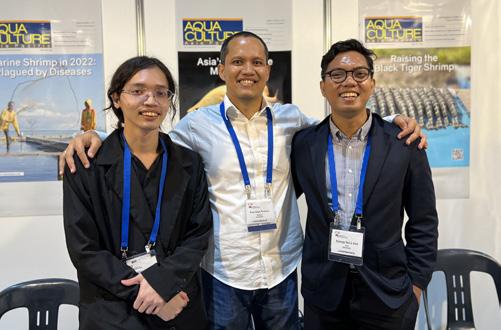
vannamei farms in Indonesia, JALA’s field technicians gathered data over a duration of 3 years. These covered 389 farms with 1,250 ponds and 1,839 pond cycles as some ponds are used for 2-3 crop cycles. Parameters measured were dissolved oxygen, temperature, pH and salinity, each taken twice daily over 7 days.
“We used Random Forest Classifier (RF). We managed to achieve F1 scores of 0.91 for AHPND, 0.89 for WFD, 0.93 for IMNV and 0.90 for WSSV. However, there is a performance issue in IMNV prediction where we only had a 0.78 recall score which indicated a high false negative prediction.” Lukman added, “This model combined with time series windowing can be used to predict and give initial warning of disease occurrences in the shrimp ponds. Our aim is to prepare farmers to mitigate the disease. This is in lieu of just sending many samples to the lab, which is not only costly for the farmers, but it also takes a week or more before results are known, not considering the anxiety of the farmer while waiting for lab results.”
The team also reported on their research on shrimp growth monitoring, substituting the conventional method of observations in a feed tray. Image processing and machine learning algorithms were used to measure the shrimp weight. Growth of shrimp not only determines how fast the shrimp grows but also the efficiency of feeding rate. This research proposes a combination of YOLO V8 detection algorithm and logarithmic regression to measure the shrimp weight. JALA team uses the images of shrimp height to predict the weight using logarithmic regression.
53 Show Review
September/October 2023 AQUA Culture Asia Pacific
The JALA Tech team of Lukman Hakim (left) and Syauqy Nurul Aziz (right) with Rully Setya Purnama, CEO at Minapoli, Indonesia’s first fully integrated marketplace for the aquaculture industry.
Neil Arvin Bretaña, University of South Australia analysed daily physico-chemical properties of pond culture conditions, as well as feed and water management data from three harvest cycles from nine shrimp ponds in central Philippines. The survival rate, indicating the health outcome of the collective shrimp culture at end of each harvest cycle, was taken as the target variable for the study. He concluded that using all variables increased the model performance with a prediction accuracy of up to 85.2%. This result indicated the importance of implementing thorough and accurate data collection practices in farm settings (see Using data science to optimise shrimp farm yields, Aqua Culture Asia Pacific March/April 2023, pp13-17).
CSIRO’s Barney M. Hines reported on some trials conducted with Viet Uc, a leading shrimp hatchery and farming enterprise in Vietnam. The goal was to study the effects of the amount of feed delivered and stocking density in the production of Penaeus vannamei reared under intensive culture conditions. Tanks were stocked with post larvae PL12 and reared over 91 days. Stocking density began at 100 PL/m2 and increased to 150, 200, 250 and 300 PL/m2. Increasing the stocking density from 150 to 300 shrimp/m2 had no effect on survival which averaged 85%. Harvest weights were proportional to stocking density, ranging from 17.5kg to 33.5kg/tank of 6m3. There was a slight increase in feed conversion ratio (FCR) from 1.37 to 1.43 with increases in stocking density. The caveat was on water quality, where tanks stocked at 300PL/m2 required increased water exchange.
Animal welfare
The focus was on animal welfare in several species. Krishna R. Salin, Asian Institute of Technology (AIT), Thailand said that welfare issues relating to the giant freshwater prawn Macrobrachium rosenbergii are similar to those in marine shrimp aquaculture. The freshwater prawn may have an animal welfare advantage since it is usually farmed in less intensive conditions than the marine shrimp. The transportation, stunning, and killing of prawns (cold shock in ice or direct application of heat) constitute some welfare concerns. Salin concluded that future research
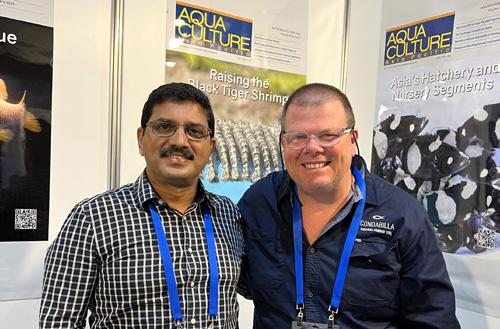
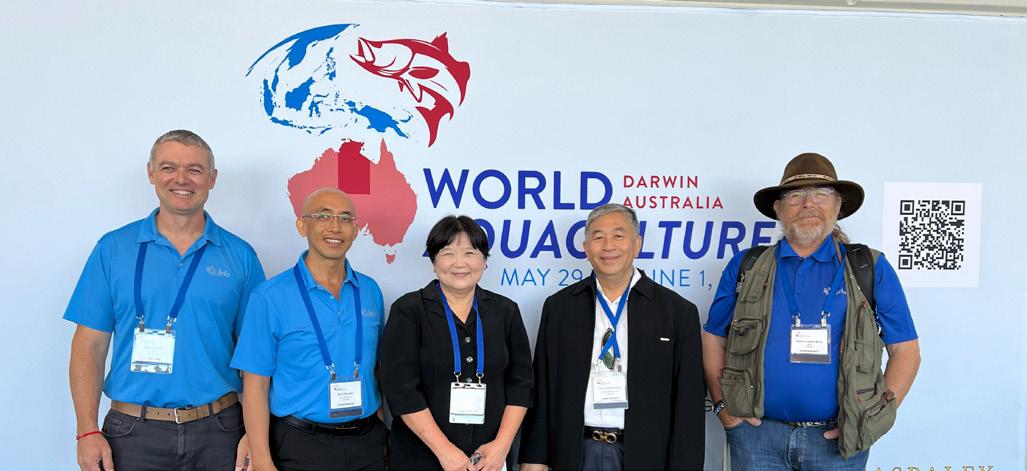
must consider reproductive welfare and vaccination against emerging diseases.
“There is a need to focus on animal welfare for the tilapia as it is an international commodity,” said Wim Surachetpong, Kasetsart University, Thailand. Working with FAI Farms, he assessed welfare issues in eight small-scale farms in Thailand which included behaviour during the catching process and variations in nutritional assessments such as feed amounts and quality and FCRs.
The prevailing literature suggests that decapod crustaceans are sentient and demonstrate “pain-like” experience, according to Sarah Berry, CSIRO. In Australia, she has a project to develop a multidisciplinary and systematic predictive and interventional tool with a potential to promote female prawn maturation and eliminate industrial eyestalk ablation. It will use advance molecular technologies and omics to establish tools that quantify and monitor stress as well as reproductive condition. It will also define new behavioural and assessment metrics for crustacean welfare.
54 Show Review
From left, Adam Naylor and Binh Nguyen, Jefo Nutrition; Dr Orapint Jintasataporn, Kasetsart University, Thailand; Dr Supot Ananthanasuwon CP group and and Herve Lucien-Brun, Jefo Nutrition.
Krishna Salin, AIT, Thailand with Mark Oliver, Condabilla Farm, South Queensland.
September/October 2023 AQUA Culture Asia Pacific


Debates at WA2023
Regis Bador, Innova Aquaculture, New Caledonia organised and moderated two debates. The first was on AI in aquaculture with panellists comprising Andrew Campbell, AQ1; Lukman Hakim, JALA Tech, Indonesia; Paw Peterson, Oxyguard, Australia and Jean Yves Beninger, Bioceanor, Singapore. The idea was to demystify AI and focus on positive impacts to help aquaculturists exchange information. There were some takeaways from this debate: namely reliable data is essential and humans are required to differentiate what is good and bad data. In the salmon industry, data is quite consistent and reliable whereas in shrimp farming, good data needs to be siphoned out. Data is the link from the art of farming to the science of farming;
data ownership is assured to remain with the farmer, but data security is an issue since data is stored in the cloud. AI is independent of human interference as the latter complicate the process. Technology is expensive for the farmer and in Indonesia analyses are usually carried out by field technicians.
The debate, titled “Disease, Diagnosis and Management” was a second edition of a similar format held during WA 2022 Singapore. Panel members were Kate Hutson, Cawthron Institute, New Zealand; Roberto Cascione, Virbac, Thailand; Melony Sellars, Genics, Australia; and Prakan Chiarahkhongman, CPG-Advance Pharma Private Company, CPF, Thailand. The Cawthron Institute has a free online, mobile phone compatible, interactive decision support tool that provides treatment intervals to interrupt the life cycle of ectoparasitic marine flatworms.
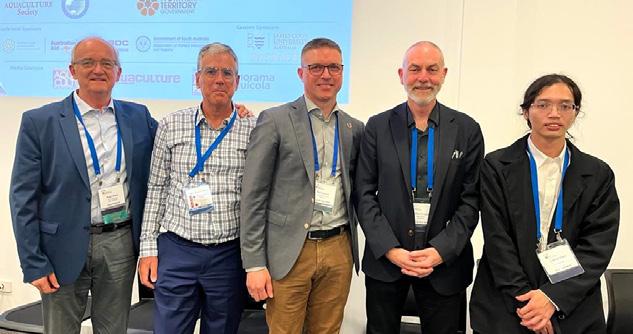
On disease mitigation, panellists explored the need for unity in the community as well as co-operation and interaction. Communication through WhatsApp to report on outbreaks was used for example in India, to warn other farms, and with the equivalent red flag system used in Vietnam. While Roberto discussed a new strain of Streptococcus in Thailand, Prakan said that co-infections were often reported in shrimp farming such as AHPND together with Enterocytozoon hepatopenaei (EHP) and EHP with WFS. He added that effects of disease are linked to the pathogen load, stocking density, carrying capacity and water quality. When stocking density is low and EHP does not show any symptoms, it does not mean that the pathogen is absent.

56 Show Review
At the debate on AI in aquaculture, Regis Bador, Innova Aquaculture, (left) with Jean Yves Beninger, Bioceanor; Paw Peterson, Oxyguard; Andrew Campbell, AQ1, and Lukman Hakim, JALA Tech.
September/October 2023 AQUA Culture Asia Pacific
Dr Orapint Jintasataporn, Kasetsart University, Thailand (centre right) with participants from Thailand, from left, Samart Junkieo, CPF; Dr Napatsorn Torchareon, Kemin AquaScience; Dr Nattawat Khanduang, Kemin; Dr Supot Ananthanasuwon, CP group; Dr Rawiwan Limwachirakhom, DVM Nutrition Improvement Company Limited; P etch Chaisirikul, Kasetsart University and Soykaew Iang-Ubon, Thai Union Feedmill.
Promoting aquaculture in Australia

Tansyn Noble, CSIRO said that Darwin was once home to a small number of black tiger Penaeus monodon farms established in the 1990’s. Today almost all these farms are abandoned or have been repurposed for farming other aquatic species. However, on the east coast of Australia, there are well-established and highly successful semiintensive black tiger farms with stocking densities of 30-50 PL/m2. In the Northern Territory, anecdotally, the common issue was the abundance of wild prawns Metapenaeus spp and predation by birds. She presented work on extensive and low input black tiger farming which could be more appropriate for the region and benefit remote communities. Here the stocking density used was 3 PL/m2, supplemental feeding at a 50% ration, filtration with 50um
mesh and chemical treatment to exclude wild prawns and bird exclusion using netting. www.industry.nt.gov.au
Aquaculture has been Queensland’s fastest growing primary industry and it wants to promote aquaculture businesses. The state has ideal growing conditions for a number of species. It also promotes sustainable practices and is free from many of the serious diseases affecting aquaculture in other countries. It has identified 9,000ha of coastal areas as aquaculture development areas (ADAs) across eight sites for land-based marine aquaculture, around Townsville, Whitsunday, MacKay, Rockhampton, Gladstone and Hinchinbrook regions. It is also investigating offshore areas suitable for non-intensive marine aquaculture to complement the land-based areas. www.fisheries.qld.gov.au
CSIRO is the Commonwealth Scientific and Industrial Research Organisation, tasked with enhancing the value, competitiveness and sustainability of Australia’s aquaculture industry. It has worked directly with the local industry and those overseas over the last 25 years. During the conference, several CSIRO scientists presented their research findings. CSIRO has developed NovaqProTM, a natural microbial biomass composed principally of bacteria produced in ponds under a patented process which bioconverts agrochemical inputs into a functional additive for shrimp feed. A presentation by Cedric J Simon summarised the research conducted to date on NovaqPro and benefits to prawn nutrition. When included in feeds at low inclusion, this microbial biomass has been demonstrated to enhance growth, feed intake, disease resilience and feed efficiency in numerous studies on black tiger and whiteleg shrimp. Unlike most feed additives currently available, the microbial biomass is acting as a rich natural source of bioactive molecules and is not aimed at directly replacing macronutrient sources. Ridley Corp is the Australian licensee commercialising this feed additive. www.csiro.au
Reference Presentation abstracts are available in the World Aquaculture 2023, Book of Abstracts, www.was.org
The Wenger team of G. Ramesh (left) and Gary Pearse was at WA 2023 to promote its Aquatic Feed Systems. There is the Aqua Flex XT High Capacity twin screw extruder. It allows greater capacity than any other extruder in its class, up to 30% more as compared to previous and competitive aquatic machines. It can process shrimp feeds as small as 0.5mm at maximum capacity.
The leader in extrusion technology since 1935, Wenger has the industry’s only conical rotating twin screw extruder. This is the Wenger C2TX and is the foundation for an extrusion process specially for shrimp and other small and micro diameter feeds. Prior to this development, there were limitations in the extrusion of sinking feeds smaller than 3mm in diameter. The entry of the oblique tube die technology gives the ability to process products down to 0.8mm similar in density to pelleted feeds. Extrusion facilitates high starch gelatinisation, high production rates, improved uniformity, less fines and increased water stability. Wenger is a subsidiary of Marel since April 2022. www.wenger.com

57 Show Review
Regis Bador (centre) with panellists in the debate on “Disease, Diagnosis and Management”, from left Prakan Chiarahkhongman, CPG-Advance Pharma Private Company, CPF; Roberto Cascione, Virbac; Melony Sellars, Genics, and Kate Hutson, Cawthron Institute.
September/October 2023 AQUA Culture Asia Pacific
Trondheim, Norway.
With everything happening simultaneously, Shri Rupala did not think that he could see this moon landing event. That was until Matt Johansen, Aker BioMarine’s CEO stepped in to help in a big way. A screen was put up with live video footage of the moon landing at Aker BioMarine’s during AquaNor Shri Rupala was able to watch this historic event.
“We are beyond thrilled that Shri Rupala took the time to visit us at AquaNor therefore finding a way for him to see his country’s moon landing event was the least that we could do,” said Matt Johansen.
Watching India’s moon landing together at AquaNor in Norway
of experienced professionals within the aquaculture industry present in the region, as well as a well-executed plan for making this market thrive.
The QRILL Aqua team at Aker BioMarine is passionate on constantly learning and understanding more about krill’s role in sustainable aquaculture production. Aker BioMarine’s QRILL Aqua family consists of three functional ingredients for improving the growth and health of fish, shrimp and other aquaculture species. This ingredient is one that the industry can count on to help secure a growing supply of seafood to feed generations to come.
Indian Minister of Fisheries, Shri Parshottam Rupala (seated middle) and Aker Biomarine’s CEO, Matts Johansen (seated left) watching India’s Chandrayaan-3 successfully landing on the moon’s surface on 23 August 2023 via a live video footage at Aker BioMarine’s stand during AquaNor.
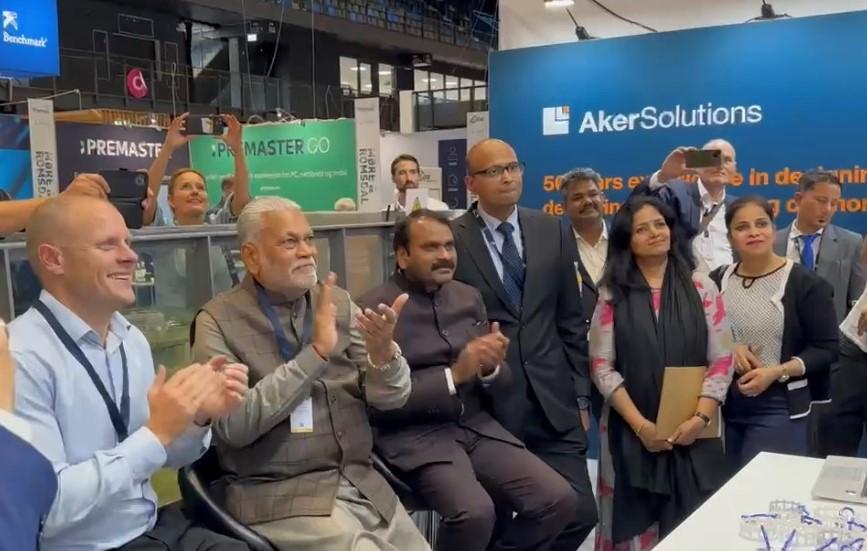
As part of Shri Rupala’s visit, discussions around offshore aquaculture were front and centre. After an introduction to how krill can be incorporated into feed ingredients, he looked at Aker Solutions’ offshore aquaculture solution, Ocean Cage.
India, an important strategic market for Aker BioMarine Aker BioMarine sees India as one of the biggest and most important markets for its aquaculture business. In fact, India has an ambition to become a world leader in
On23 August, the Lander Module of the Indian Space Research Organisation’s (ISRO) third lunar mission Chandrayaan-3 successfully landed on the moon’s surface after the launch on 14 July. On that same day, Shri Parshottam Rupala was visiting AquaNor, the world’s most important trade fair in the aquaculture industry in Trondheim, Norway.
With everything happening simultaneously, Shri Rupala did not think that he could see this moon landing event. That was until Matt Johansen, Aker BioMarine’s CEO stepped in to help in a big way. A screen was put up with live video footage of the moon landing at Aker BioMarine’s booth during AquaNor. Shri Rupala was able to watch this historic event.
“We are beyond thrilled that Shri Rupala took the time to visit us at AquaNor therefore finding a way for him to see his country’s moon landing event was the least that we could do,” said Matt Johansen.
India, an important strategic market for Aker BioMarine
Aker BioMarine sees India as one of the biggest and most important markets for its aquaculture business. In fact, India has an ambition to be a world leader in shrimp farming. This is important as Aker BioMarine continues to strengthen its relationships and partnerships with various stakeholders in the market.
One of the key factors for Aker BioMarine’s expansion in the Indian market is having a local team consisting
“The potential going forward is huge,” added Johansen. “Exports can be challenging, but I believe that India can learn a lot from Norwegian technology and we are happy to help pave the way forward.”
Expectations for the Indian aquaculture market
“Within aquaculture, we are currently the world’s second largest producing country, but we want to be number one,” said Shri Rupala. “More than 28 million people are currently engaged in the fishing industry in India and we want to help them develop their industry.
“The most important measure is that our prime minister has established a new fisheries ministry and a very large budget has been granted. We are here to learn and welcome all entrepreneurs and technology companies in the industry to establish themselves in India. It is important to achieve cooperation between politics and technology in aquaculture.”
From the Southern Ocean to the Moon, the future is bright
Shri Rupala was happy to attend AquaNor to see and learn on technology and aquaculture. Watching the Chandrayaan-3 cruise land its vessel safely at the moon’s south pole was an unexpected bonus. “This has been a great honour. We are one family, one world and one future.”
“In a way, Aker BioMarine also experienced a moon landing during this event. “We are on a path of reaching our goal and making major strides in the Indian market,” added Johansen. www.akerbiomarine.com
58 Company News
Indian Minister of Fisheries, Shri Parshottam Rupala (seated middle) and Aker Biomarine’s CEO, Matts Johansen (seated left) watching India’s Chandrayaan-3 successfully landing on the moon's surface on 23 August 2023 via a live video footage at Aker BioMarine’s stand during AquaNor
September/October 2023 AQUA Culture Asia Pacific

90 216 922 02 13 | INFOSEAFOODEXPOEURASIA.COM SEAFOODEXPOEURASIA.COM
International Artemia Aquaculture Consortium
TheInternational Artemia Aquaculture Consortium (IAAC) is a network of scientists and institutions that collaborate in exploring opportunities such as the development of new applications through strain selection and selective breeding, integration of extractive Artemia farming with intensive fish/crustacean aquaculture, use of Artemia biomass as a high-value protein ingredient in human diets and many more.
The consortium is engaged in research, conservation and capacity building world-wide. Members have organised several webinars on topics such as cyst use practices in hatcheries around the world, multi-stakeholder management of Artemia resources, history of Artemia usage, culture practices and experiences around the world. The Network of Aquaculture Centres in AsiaPacific (NACA) is hosting this consortium and plays a coordinating role and maintains a permanent website which is available at https://artemia.info. In September 2022, NACA hosted a webinar on “The world of Artemia cysts as live feeds in marine shrimp hatcheries”. A report was published in, Aqua Culture Asia Pacific, January/ February 2022, pp41-45 http://bit.ly/3sRl03h.
In conjunction with the first IAAC Steering Committee meeting, a seminar was held on 28 July 2023 in Putrajaya, Malaysia. Simon Wilkinson, NACA described its role with IAAC which has members from 29 countries comprising 39 institutions universities and projects and five private
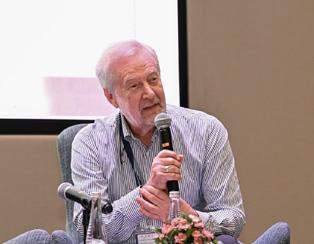
industry partners. It is governed by a steering committee of 10 members. The current chair is Professor Yeong Yik Sung, Universiti Malaysia Terengganu, Malaysia. Additional guidance is provided by an advisory committee chaired by Professor Patrick Sorgeloos, the father of Artemia research.
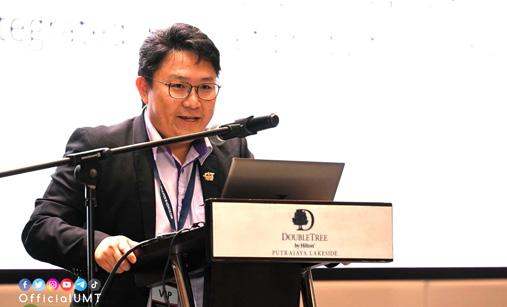
Brine shrimp Artemia culture and translational research in Malaysia
At this seminar, Yeong presented on the Artemia culture centre at UMT which produces live biomass of Artemia franciscana based on a technology to grow Artemia with feeds from palm kernel expeller. The aim is to transfer knowledge and culture technology to local communities and create entrepreneurship while reducing imports of Artemia. There are revenue streams for the centre as it is supplying its industry partner, Greeny Aquaculture to market the Artemia, live and frozen in blisters for export to Singapore and to the rest of the world. Locally the centre wants to work with the Department of Fisheries to enhance grouper fry production with live Artemia biomass.
The centre produces 2 to 3 cycles of Artemia/month. From an innoculation of 1g, production is 1-2kg/cycle of 10 days in 1 tonne round tanks. In the larger 100-tonne rectangular tanks, the production is 20-30kg/tank/cycle. There is also the production of super red Artemia in tanks.
Yeong also shared some research using Artemia as a model for effects of the knockdown of the molecular chaperone Hsp70 (heat shock proteins) which are important in stress tolerance of aquatic organisms on thermal resistance, bacterial ( Vibrio ) tolerance, transcriptome of the Artemia as a result of the Hsp70 knockdown and the effects on larval development. UMT has developed the technology to reduce Hsp70 via RNA interference (RNAi). The goal is to develop non invasive ways to increase Hsp70 in aquatic animals to improve the animal’s tolerance to pathogens such as Vibrio spp.

60 Company News
One tonne tanks in the Artemia Culture Centre at Universiti Malaysia Terengganu (UMT), Malaysia.
Professor Yeong Yik Sung, UMT, is the current chair at IAAC.
September/October 2023 AQUA Culture Asia Pacific
Professor Patrick Sorgeloos initiated the establishment of IAAC with colleagues in the Artemia world in 2019.











www.vivhealthandnutrition.nl HEALTH & NUTRITION ASIA 2024 BITEC , BA NGKOK , TH AIL A ND 12-14 MARCH TOTA L A N I M A L FE E D A N D H E A LT H E V E N T FO R A S I A in co-location with ORGANIZED BY SUPPORTED BY
Surabaya, Indonesia in 2024. Aquaculture – Driving the Blue Economy is the theme of the conference in 2024.

Asian Pacific Aquaculture 2024 will be the next chance for the internaIonal aquaculture community to visit Indonesia and see its rapidly expanding aquaculture industry. ParIcipants will be able to what is happening in Indonesia’s aquaculture industry as well as developments in the rest of Southeast Asia. Surabaya is the place to learn about the latest in aquaculture, learn on the latest technology during the trade show with exhibits from around the world and enjoy the many tourist sites in Indonesia. The three-day internaIonal conference and exhibiIon will be held at the Gran City ConvenIon and ExhibiIon Surabaya, Indonesia, from June 11 -14.
New Show Dates
July 2-5, 2024
Asian Pacific Aquaculture 2024 will be the next chance for the international aquaculture community to visit Indonesia and see its rapidly expanding aquaculture industry. Participants will be able to see what is happening in Indonesia’s aquaculture industry as well as developments in the rest of Southeast Asia. Surabaya is the place to learn about the latest in aquaculture, learn on the latest technology during the trade show with exhibits from around the world and enjoy the many tourist sites in Indonesia. The three-day international conference and exhibition will be held at the Grand City Convention and Exhibition Surabaya, Indonesia.
Asian Pacific Aquaculture 2024
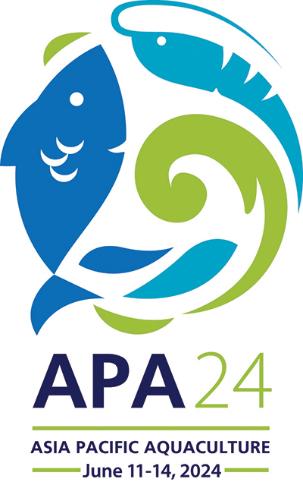
Surabaya, Indonesia – June 11-14
Theevent is hosted by the Directorate General of Aquaculture, Ministry of Marine Affairs & Fisheries (MMAF) Republic of Indonesia and co-organised with PT Tirta Anugrah Abadi. After the successful meeting of World Aquaculture 2005 in Bali and Asian Pacific Aquaculture (APA16) in Surabaya, the World Aquaculture Society (WAS) and the Asia Pacific Chapter (APC) decided to return to Surabaya, Indonesia in 2024. Aquaculture – Driving the Blue Economy is the theme of the conference in 2024.
The WAS encourages online abstract submission at www. was.org. For information on booths and sponsorship, email: mario@marevent.com
The deadline for abstract submission is December 31,2023. WAS encourages online abstract submission at www.was.org. For informaIon on booths and sponsorship, email: mario@marevent.com
New deadline for abstract submission is 31 January 2024.
The event is hosted by the Directorate General of Aquaculture, Ministry of Marine Affairs & Fisheries (MMAF) Republic of Indonesia and co-organised with PT Tirta Anugrah Abadi. AGer the successful meeIng of the World Aquaculture 2005 in Bali and Asian Pacific Aquaculture (APA16) in Surabaya, the World Aquaculture Society (WAS) and the Asia Pacific Chapter (APC) decided to return to Surabaya, Indonesia in 2024. Aquaculture – Driving the Blue Economy is the theme of the conference in 2024.
Asian Pacific Aquaculture 2024 will be the next chance for the internaIonal aquaculture community to visit Indonesia and see its rapidly expanding aquaculture industry. ParIcipants will be able to see what is happening in Indonesia’s aquaculture industry as well as developments in the rest of Southeast Asia. Surabaya is the place to learn about the latest in aquaculture, learn on the latest technology during the trade show with exhibits from around the world and enjoy the many tourist sites in Indonesia. The three-day internaIonal conference and exhibiIon will be held at the Grand City ConvenIon and ExhibiIon Surabaya, Indonesia, from June 11 -14.
The deadline for abstract submission is December 31,2023. WAS encourages online abstract submission at www.was.org. For informaIon on booths and sponsorship, email: mario@marevent.com
EDITORIAL CALENDAR 2024
Look
Deadlines -Technical articles
Deadlines - Advert Bookings
Innovations/ Startups
15, 2023
22, 2023
17
24
20
22
24
18
25
Experiences and opinions covering role models; clear and present needs of industry; innovations and digitalisation in aquaculture
Interviews with industry leaders Focus in 2023 will be leaders pushing for sustainable aquaculture
Issue focus
Emerging trends and challenges
Industry Review
Feeds & Processing Technology
Marketing
Nursery & Hatchery Health & Disease Management
Marine Shrimp Marine Fish
Functional Feeds/ Additives/ Controlled Systems
Fish meal/oil Replacements/ Industrialisation
Sustainable & Responsible Aquaculture
Aquafeed Production
Hatchery Technology
Demand & Supply Equilibrium
Tilapia
Novel Ingredients
Aquaculture Innovations
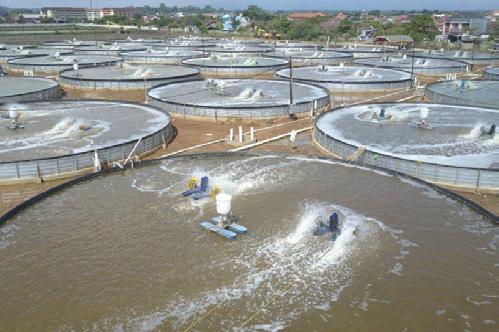
Health & Disease Management
Marine Shrimp Catfish & Freshwater Fish
Larval & Nursery
Feeds/ Feed management Feed Enzymes
Market and product developments, post harvest processing, generic marketing, certifications, branding, food safety etc
Company/Product News News on activities at international, regional and local conferences and trade shows
For advertising/article contributions and guidelines contact: zuridah@aquaasiapac.com
62 Event News Volume 20 Number 1 2 3 4 5 6 January/February March/April May/June July/August September/ October November/ December
November
January
March
May 15 July
September
13
17
March
May
July
September
November
January
Asia’s production of
out for AAP’s annual report on trends in
marine shrimp and aquafeeds
the World Aquaculture Society (WAS) and the Asia Pacific Chapter (APC) decided to return to
September/October 2023 AQUA Culture Asia Pacific

to uNlise them because staff are not trained to understand and interpret produced.
Aqua Feed Milling Agrischool is a comprehensive course covering many Aqua feed producNon. The course provides a complete overview of the both shrimp and fish feeds and the impact of different feed ingredients combined with a detailed look at the criNcal secNons in the producNon line batching, condiNoning and pelleNng and extrusion and drying .
to understand and interpret the data that is produced.
The Progressus Aqua Feed Milling Agrischool is a comprehensive course covering many aspects of Asian aquafeed production. The course provides a complete overview of the feed mill process for both shrimp and fish feeds and the impact of different feed ingredients and formulations combined with a detailed look at the critical sections in the production line including; grinding, batching, conditioning and pelleting and extrusion and drying.
7-10 November 2023, Bangkok, Thailand
Aspects of Asian Aqua Feed Produc3on
7-10 November 2023, Bangkok, Thailand
By Jon Ratcliff
Aspects of Asian Aqua Feed Production
By Jon Ratcliff
greater focus on producNon management and the tools required for producNon and maintenance. This includes the latest technologies and both plant and human resource opNmisaNon together with data capture, integraNon with MES and ERP systems.
The market size for aquafeeds in Asia Pacific region was over USD 41 billion during 2021 and is forecasted to record a compound annual growth of 7% through 2022 to 2028. That is good news for the aquafeed industry, however, there are significant challenges in terms of raw material costs and supply, overhead costs such as labour and energy and overall operating efficiency.
New this year is a greater focus on production management and the tools required for efficient plant production and maintenance. This includes the latest technologies and innovations for both plant and human resource optimisation together with data capture, display and integration with MES and ERP systems.
The market size for aquafeeds in Asia Pacific region was over USD 41 billion during 2021 is forecasted to record a compound annual growth of 7% through 2022 to 2028. That good news for the aquafeed industry, however, there are significant challenges in terms raw material costs and supply, overhead costs such as labour and energy and overall operaNng efficiency.
also includes a visit to one of the larger aquafeed mills in Thailand. The independent and commercially neutral. They are facilitated by some of the most professionals in the industry commi[ed to sharing their extensive knowledge of feed technologists. The presentaNon format is very interacNve to level of parNcipant involvement and informaNon exchange as well as daily
To remain in this industry, it is essential that each plant is operating to its maximum efficiency in terms of kWh/ tonne, manhours/tonne and the true optimisation of the rated capacity of each production line. It is not possible to achieve this without investment in automation systems and software that provides real time data capture and analytic displays. That is why the training of staff working within the aquafeed industry has never been so critical. We have seen many times, companies that invest in state-of-the-art technology and equipment but fail to utilise them because staff are not trained
The programme also includes a visit to one of the larger aquafeed mills in Thailand. The courses are independent and commercially neutral. They are facilitated by some of the most experienced professionals in the industry committed to sharing their extensive knowledge to a new generation of feed technologists. The presentation format is very interactive to encourage a high level of participant involvement and information exchange as well as daily group workshops.
The registration for Aqua Feed Milling2023 is now open. Follow the QR CODE to register or contact: info@ progressus.asia/www.PROGRESSUS.asia

Aqua feed milling 2023 is now open. Follow the or contact: info@progressus.asia/www.PROGRESSUS.asia
September 26-27
THRIVE Hawaii Agrifood & Aquaculture Summit
Hawaii TropAgTech.com
September 20-22
November 13-16
AFRAQ 2023
To remain in this industry, it is essenNal that each plant is operaNng to its maximum efficiency in terms of kWh/tonne, manhours/tonne and the true opNmisaNon of the capacity of each producNon line. It is not possible to achieve this without investment automaNon systems and soTware that provides real Nme data capture and analyNc That is why the training of staff working within the aquafeed industry has never been criNcal. We have seen many Nmes, companies that invest in state-of-the-art technology equipment but fail to uNlise them because staff are not trained to understand and interpret the data that is produced.
Lusaka, Zambia was.org
November 27-29
14th Philippine Shrimp Congress Bacolod City hipon.bfar.da.gov.ph/14th-philippineshrimp-congress/
September 20-22
ILDEX Indonesia 2023
Jakarta ildexindonesia.merebo.com
September 29-30
Hatch India 2023 Visakhapatnam hatchindia.aisha@gmail.com
October 23-26
Aqua Expo 2023
Guayaquil, Ecuador aquaexpo.com.ec
Giant Prawn 2023 Bangkok,Thailand giantprawn.org
December 7-9
Seafood Expo Eurasia Istanbul, Turkey seafoodexpoeurasia.com
The Progressus Aqua Feed Milling Agrischool is a comprehensive course covering many aspects of Asian Aqua feed producNon. The course provides a complete overview of feed mill process for both shrimp and fish feeds and the impact of different feed ingredients and formulaNons combined with a detailed look at the criNcal secNons in the producNon including; grinding, batching, condiNoning and pelleNng and extrusion and drying .

February 18-21
Aquaculture America 2024 San Antonio, Texas was.org
March 12-14
Health & Nutrition Asia/Victam Asia 2024 Bangkok, Thailand vivhealthandnutrition.nl/
April 23-25
New this year is greater focus on producNon management and the tools required for efficient plant producNon and maintenance. This includes the latest technologies and innovaNons for both plant and human resource opNmisaNon together with data capture, display and integraNon with MES and ERP systems.
Seafood Expo Global Barcelona, Spain seafoodexpo.com/global
February (TBA)
AquaIndia 2024 Chennai aquaprofessional.org
March 20-22
VietShrimp Camau City vietshrimp.net
JULY 2-5
Asian Pacific Aquaculture 2024 (APA24) Surabaya, Indonesia was.org
The programme also includes a visit to one of the larger aquafeed mills in Thailand. courses are independent and commercially neutral. They are facilitated by some of experienced professionals in the industry commi[ed to sharing their extensive knowledge to a new generaNon of feed technologists. The presentaNon format is very interacNve encourage a high level of parNcipant involvement and informaNon exchange as well
64 Event News
2023 2024
September/October 2023 AQUA Culture Asia Pacific



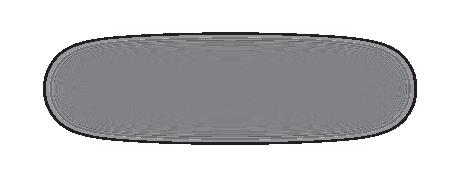
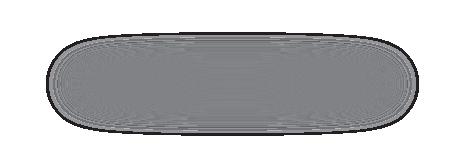


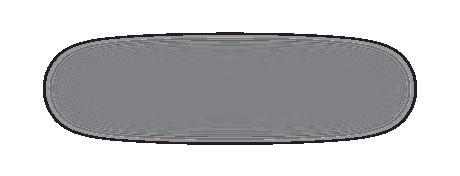





NANOLIS P THỨC ĂN CHUYÊN DÙNG CHO ƯƠNG CÁ NƯỚC NGỌT NURSERY FEED FOR FRESHWATER FISH FLOATING FEED THỨC ĂN NỔI TILAPHI THỨC ĂN NUÔI CÁ CÓ VẢY (RÔ PHI, DIÊU HỒNG) TILAPIA FEED FEED THỨC ĂN NỔI NUTRILIS MARINE THỨC ĂN NUÔI CÁ BIỂN MARINE FISH FEED SLOW SINKING FEED NUTRILIS ST THỨC ĂN NUÔI CÁ TẦM STURGEON FEED SINKING FEED VANALIS THỨC ĂN NUÔI TÔM THẺ L. vannamei SHRIMP FEED FEED NEW AQUA FEED PACKAGING A�er 30th June 2023, new and old packaging will simultaneously be on the market un�l out of stock for old packaging. Any inquiries, please contact us: ARCHER DANIELS MIDLAND VN COMPANY LIMITED Address: Quarter 1B, An Phu Ward, Thuan An City, Binh Duong Province, Vietnam Email: contact-aqua.asia@adm.com * Effective date: from 30/06/2023 Announcement ARCHER DANIELS MIDLAND VN COMPANY LIMITED Only ADM logo is being used Color-coded for each product group More vivid visuals with key product attributes
• No.16-18-20, DT743 Road, Song Than II Industrial Zone, Di An Ward, Di An City, Binh Duong Province, Vietnam
• Tel: +84-274-3790811 (Ext: 1711)
• Fax: +84-274-3790819
• Email: aquafeed@upvn.com.vn






























































































 Figure 1. Attractability assay system depicting the system design and different chambers (left image: side view; right image: aerial view).
Figure 1. Attractability assay system depicting the system design and different chambers (left image: side view; right image: aerial view).


































































 Figure 3. Microorganisms used for the production of single-cell proteins. Source: https://byjus.com
Figure 4. Global weighted average and project-level LCOE (levelized costs of energy) of newly commissioned utility-scale renewable power generation technologies.2010-2021. Source: IRENA Renewable Cost Database.
Figure 5. The effect of single cell protein inclusion on the growth performance of rainbow trout. Source: dsm-firmenich.
Figure 3. Microorganisms used for the production of single-cell proteins. Source: https://byjus.com
Figure 4. Global weighted average and project-level LCOE (levelized costs of energy) of newly commissioned utility-scale renewable power generation technologies.2010-2021. Source: IRENA Renewable Cost Database.
Figure 5. The effect of single cell protein inclusion on the growth performance of rainbow trout. Source: dsm-firmenich.



























































